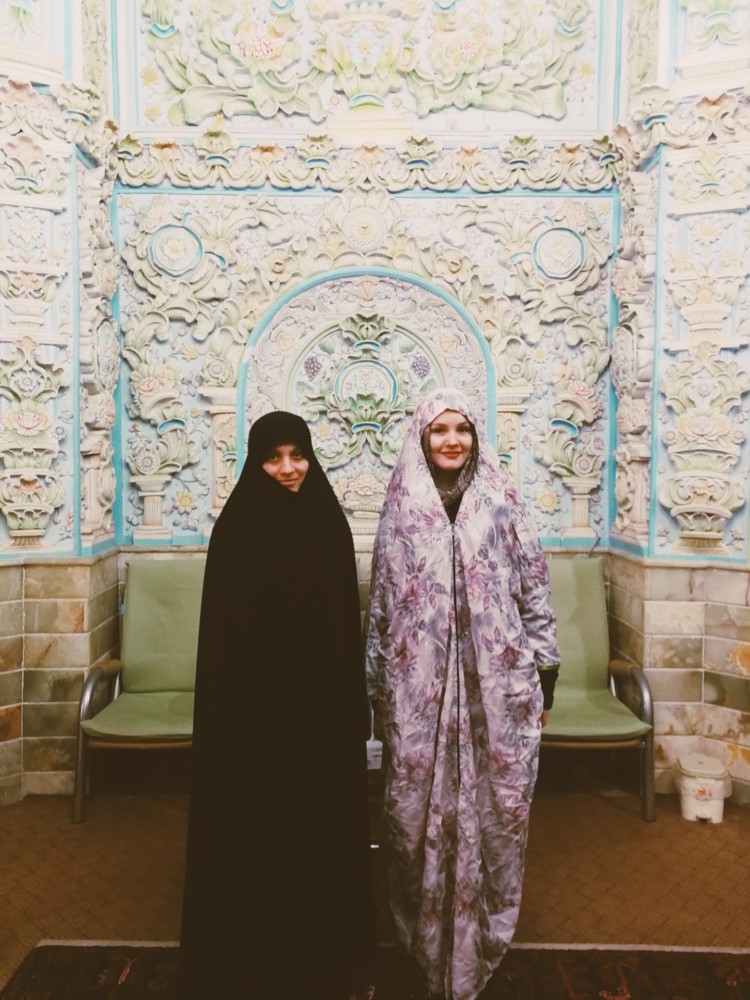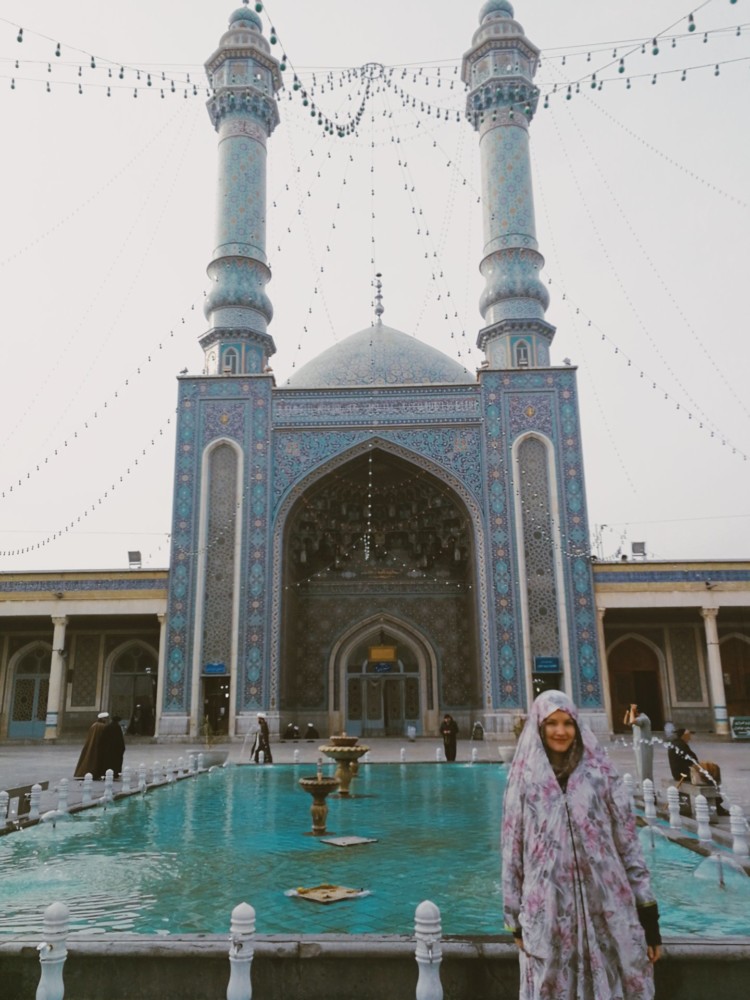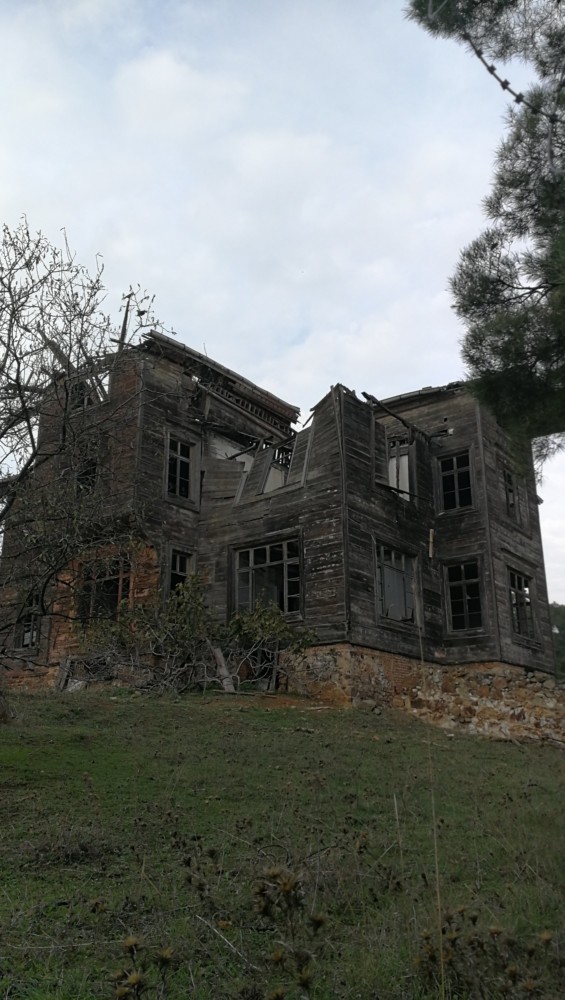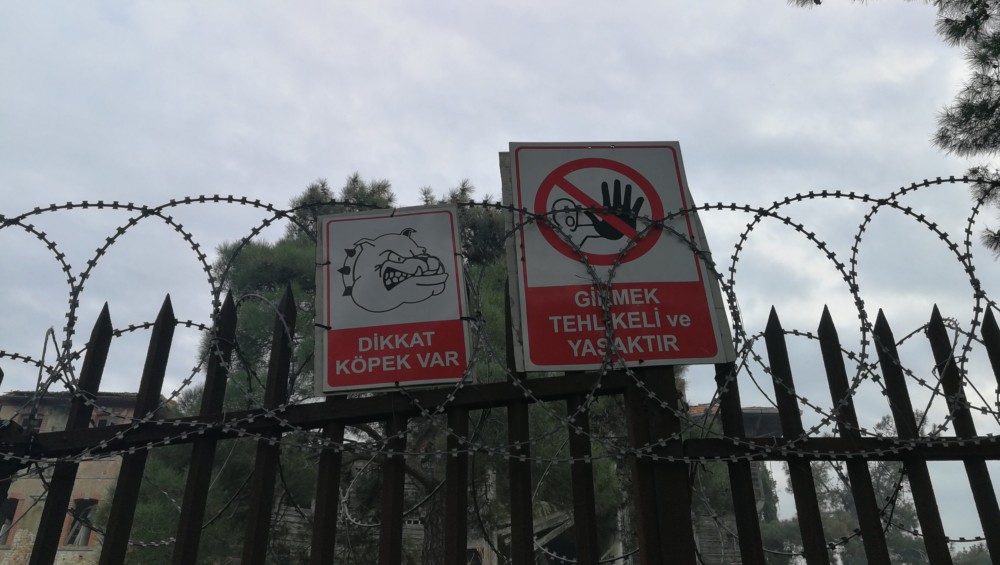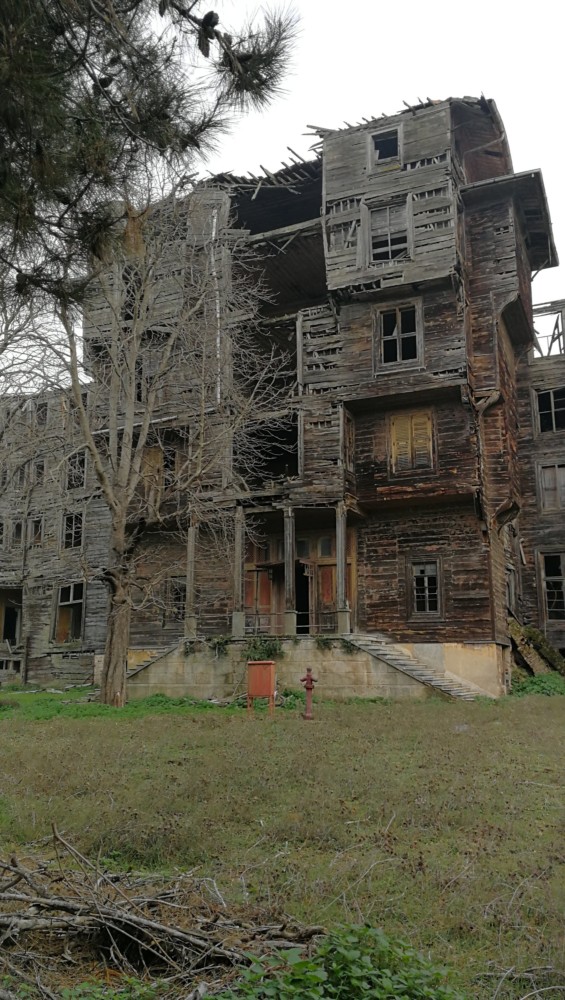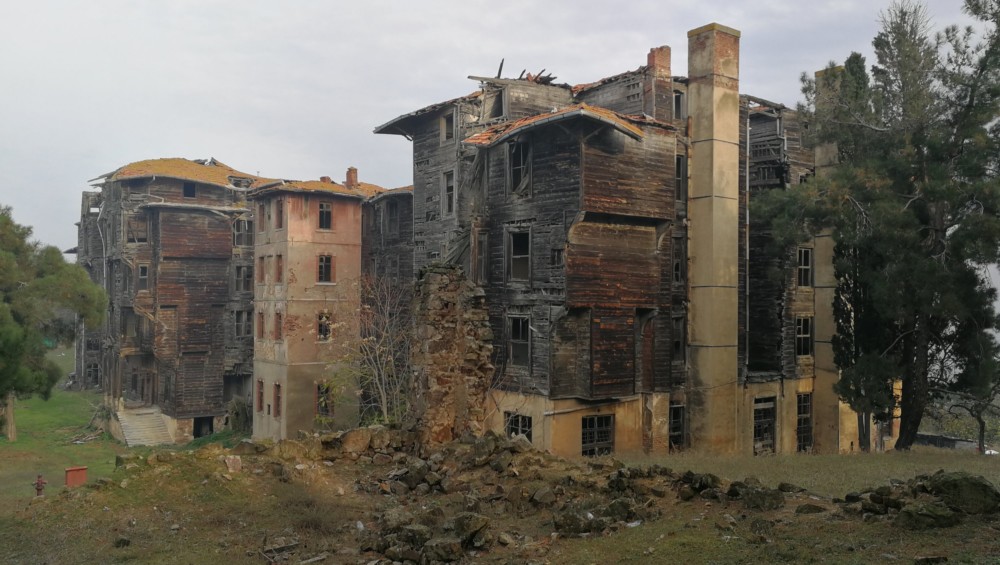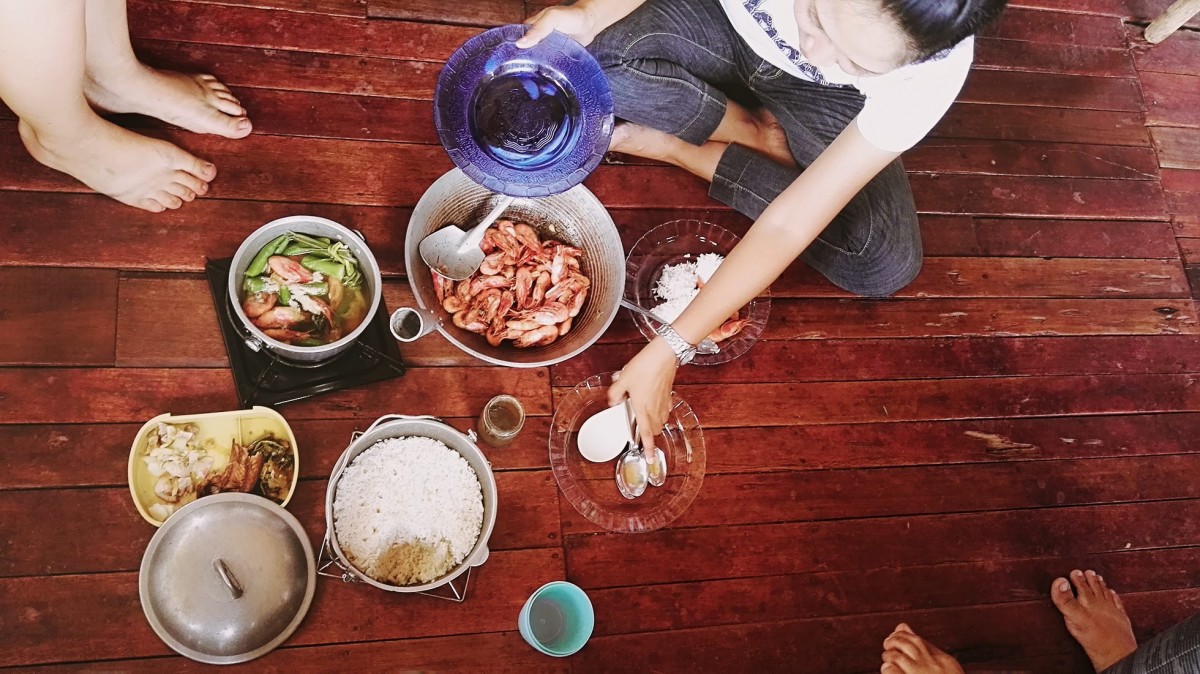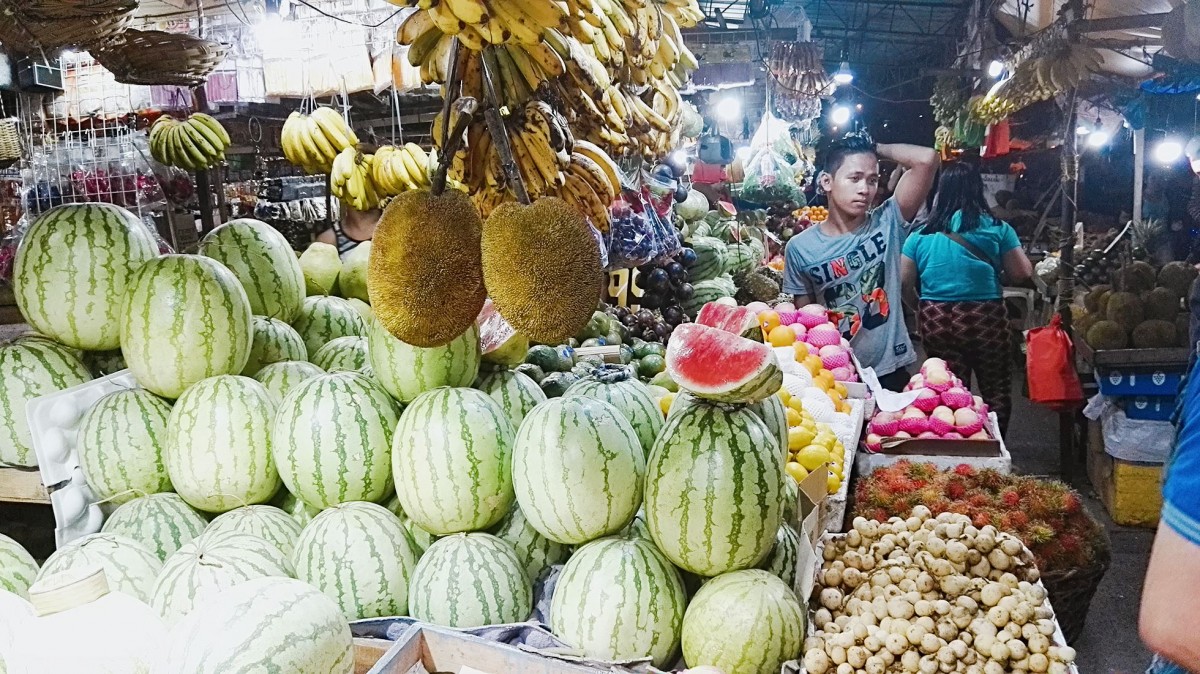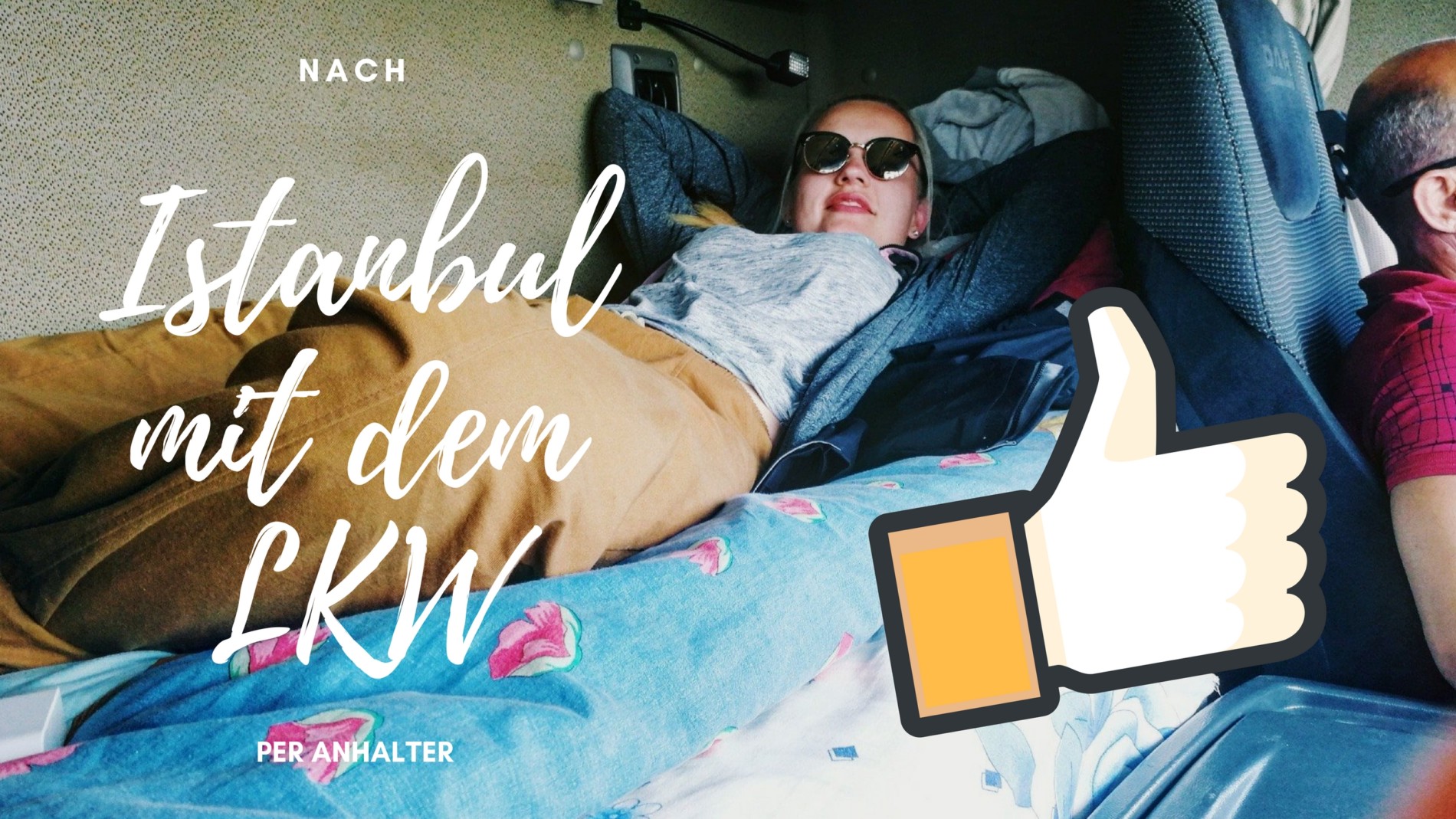A Spontaneous Day in Iran
On January 18, I was on Qeshm Island in the south of Iran and on that day I wanted to find out where I would end up without knowing exactly where to go or where to sleep. so I hit the road with nothing but my clothes on my back and a camera in my pocket.
If there is something I learned during my travel – you will NEVER end up alone and that day proofed it once again! ![]()
To travel means to be free.
And what happened on that day was the definition of freedom for me.
The freedom to trust others, the nature and myself.
Hangem Island is a small island in the south of Iran and the reasons why I chose this place was because it’s 1. Not too far away. 2. There aren’t a lot of people 3. It’s well known for its Beautiful beaches
So all in all a great place to stay for the night even without a place to sleep
But first let me show you how easy it is to hitchhike in Iran:
The most important thing is to explain what hitchhiking is, to make sure that it’s no tarof and to make clear where you want to go, because some drivers just stop out of curiosity.
And I’m telling you the so called “ferry” was already a big adventure. There were 4 other people on the boat and it took only a few minutes to agree that we will all camp together. Suddenly a few strangers turned into a team that shared their food, tea and everything with each other. They even insisted to share their tent with me but my mind was already prepared to sleep in the wild.
The beach was our own paradise of freedom. No phone signal, just a few travellers, a bonfire and the ocean. This was a day of appreciation for our lives and the people who are part of it, not the objects. We should all allow ourselves to feel a little free. “Follow your dreams”, as cheesy as it sounds, but do it!
Never ignore the facts, especially the ugly ones. But do understand that it’s your game. You get to write the rules and you decide how you want to to travel.
Sometimes all it takes is to go with the flow. And everything else will come on its own.
Am I naive to travel like that?
Maybe. But for sure I know that I’m free.
Kashan and Abyaneh Village: A walk through time
I know there is a lot of desert in Iran and I expected to visit it during my stay in Kashan BUT then I fell in love with the small city itself and the Abyaneh Village which is not too far from Kashan. What I liked most about Kashan was that it is not so crowded like all the other touristic cities and of course that it has its own desert atmosphere.
I always wondered how it is to be alive thousands of years ago. Kashan is a magical city that exactly makes you feel like you are in a different time and offers much more than only the desert.
There are a lot of traditional houses to explore where you can get lost and stroll around for hours. In my head I imagined how the people were living here hundreds of years ago, what kind of discussions they had and how they furnished their houses. These places will definitely play with your fantasy.
And of course there is Kashan’s historical mosque and the traditional bazaar which offers you a perfect spot for an Iranian breakfast.
If you ever wondered how the most beautiful historical garden of the Middle East looks like then you shouldn’t skip going to Fin Garden. It’s a place to relax and not too far from the city.
Although there are so many sites in Kashan that are impressive and just beautiful I didn’t see a lot of travellers and most of the time I was the only person visiting a site. It seems that the city is still quite undiscovered by tourists which makes it a great time to visit right now.
On the other hand there is the abyaneh village which attracts more people due to it’s unique historical charme. This village is one of the oldest in Iran and has been called the window to Iranian history and people also say that it’s a living museum. It’s a really picturesque city and the locals seem like really cool people as well.
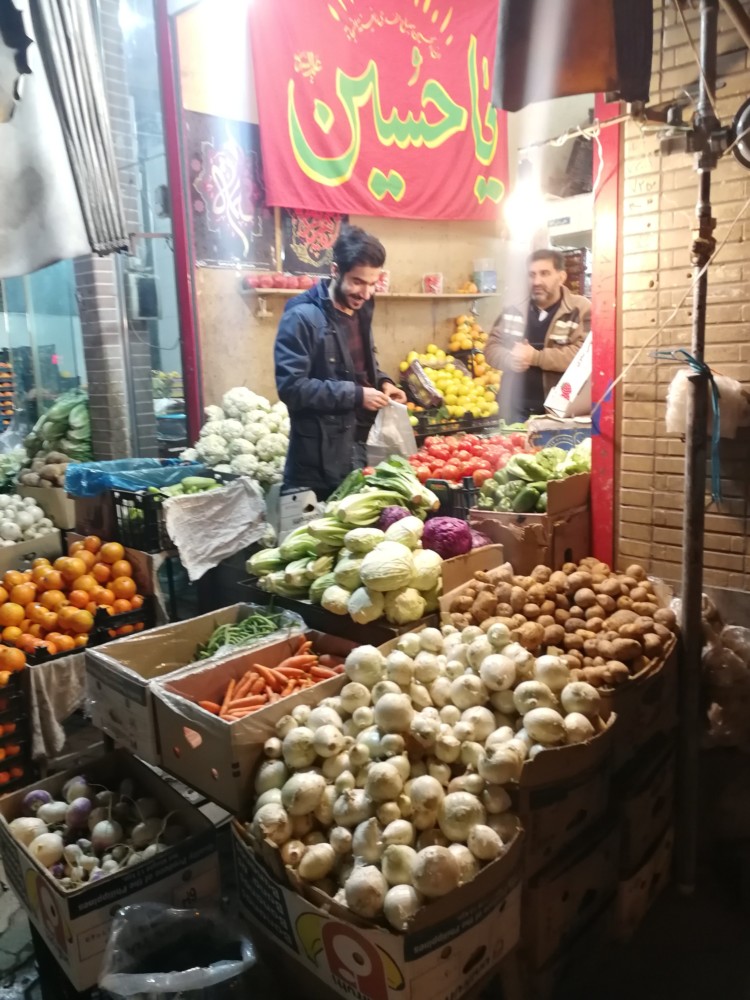

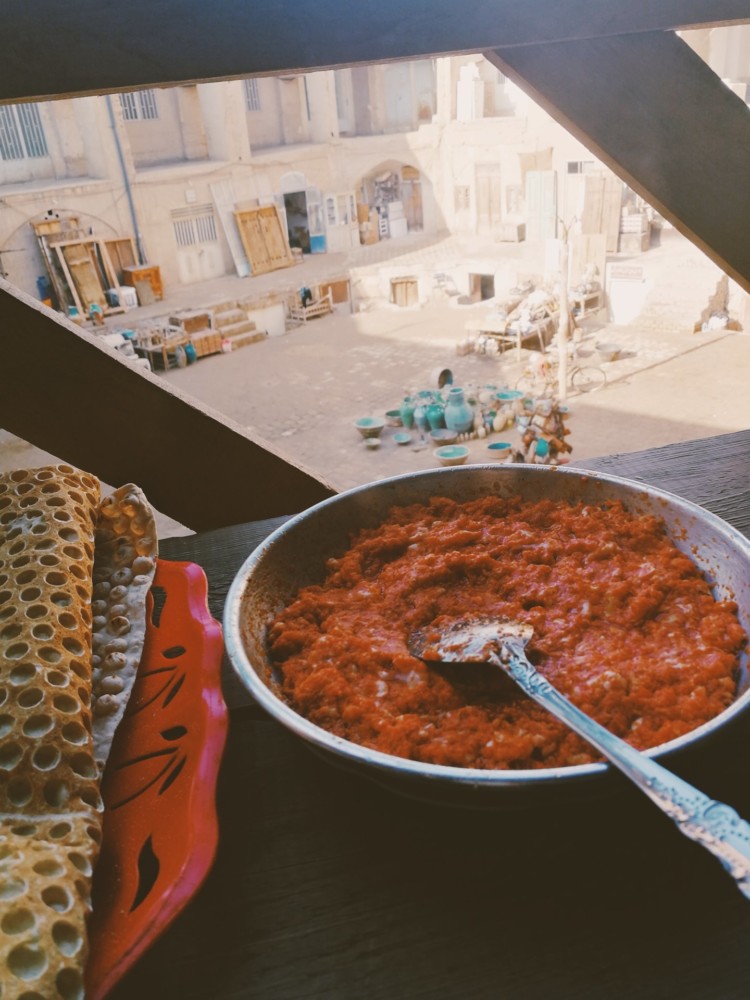
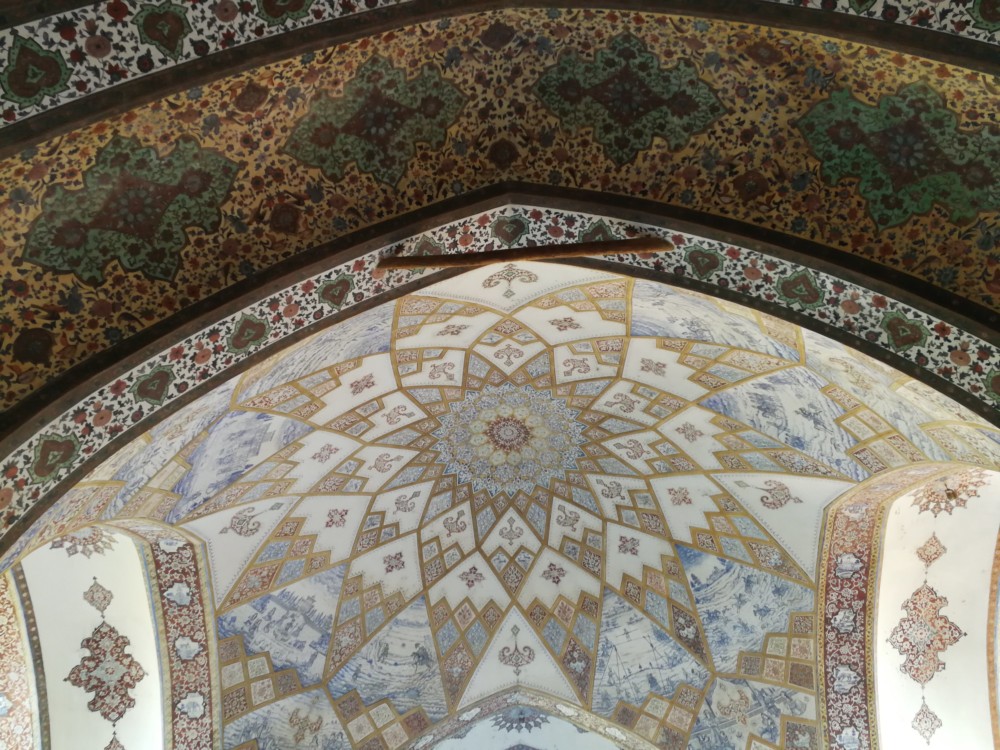
One day in the holy city Qom
Qom is a very important and holy city for most Iranians, not so much for tourists. So when I said that I’m going to Qom I got some confused looks and people asked me why would I go there. I didn’t really know but then I quickly realized that it’s definitely worth a visit!
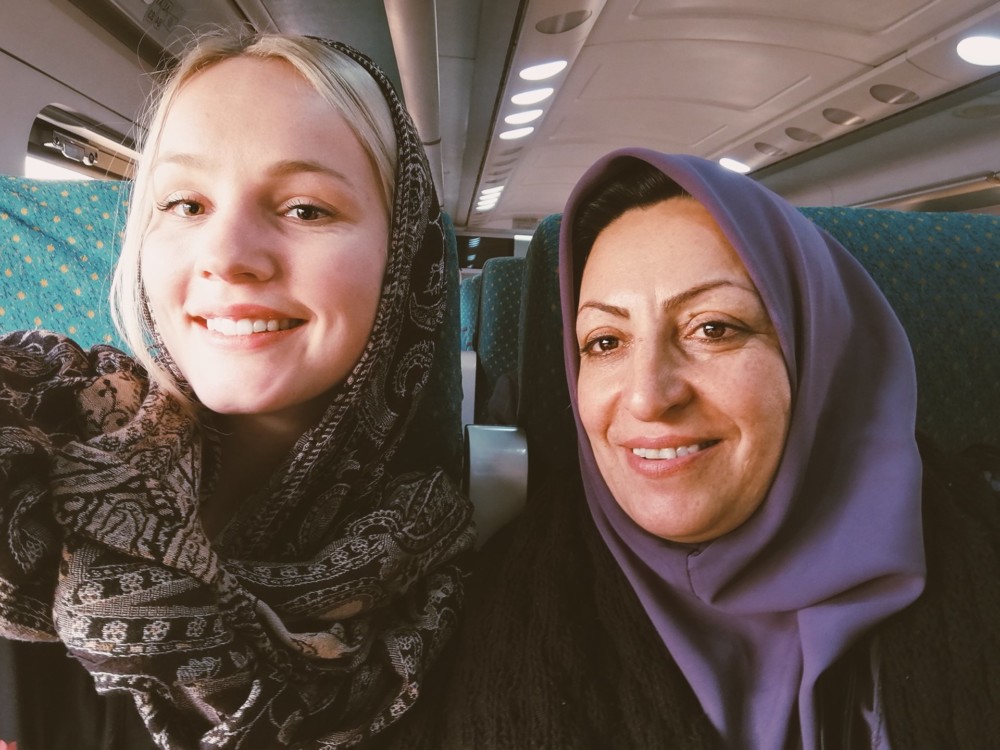 Qom has some really great architecture and beautiful buildings. The holy shrine is one of the most impressive buildings in Iran and a lot of pilgrims come here from all around the world.
Qom has some really great architecture and beautiful buildings. The holy shrine is one of the most impressive buildings in Iran and a lot of pilgrims come here from all around the world.
First I was unsure if I could just go there or if my dress code was appropriate, but then locals were really friendly and showed me where to go. Tourists enter on entrance 17. Inside the entrance your bag gets checked and in my case they cave me appropriate clothing.
The women were so nice to me! They gave me chocolate and organized a tour guide for me who showed me around.
After the holy shrine I walked to the mosque nearby and an afghan girl talked to me. We took a picture together and talked a while. It’s heartwarming how friendly everyone is and that they are curious about their visitors.
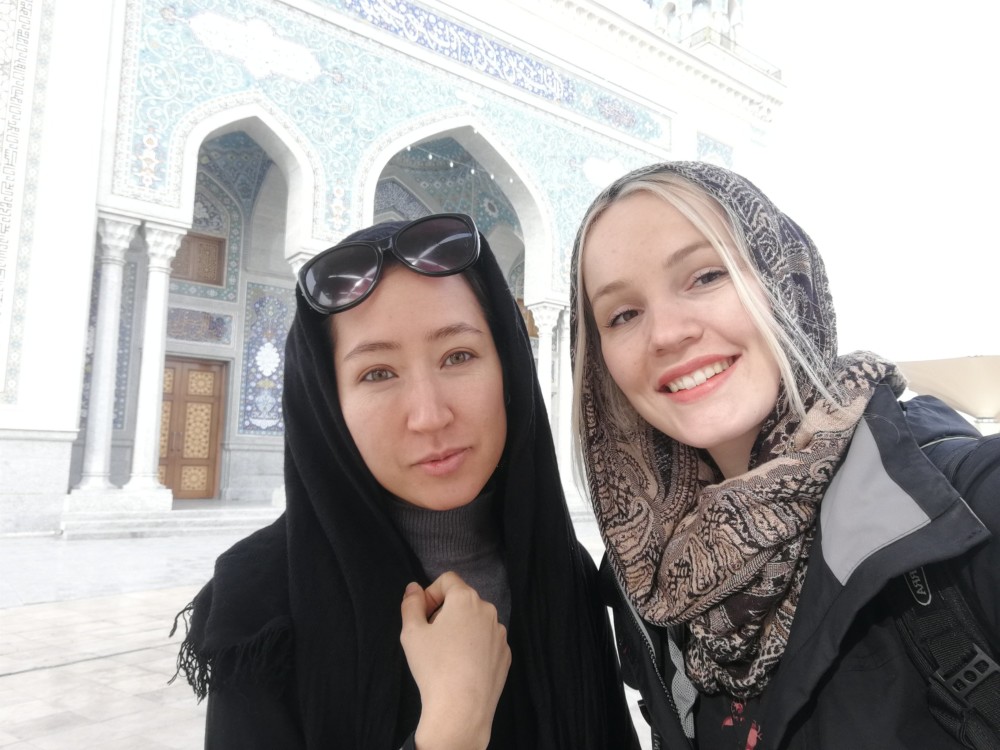
Qom was definitely a great experience and Im glad I decided to got there.
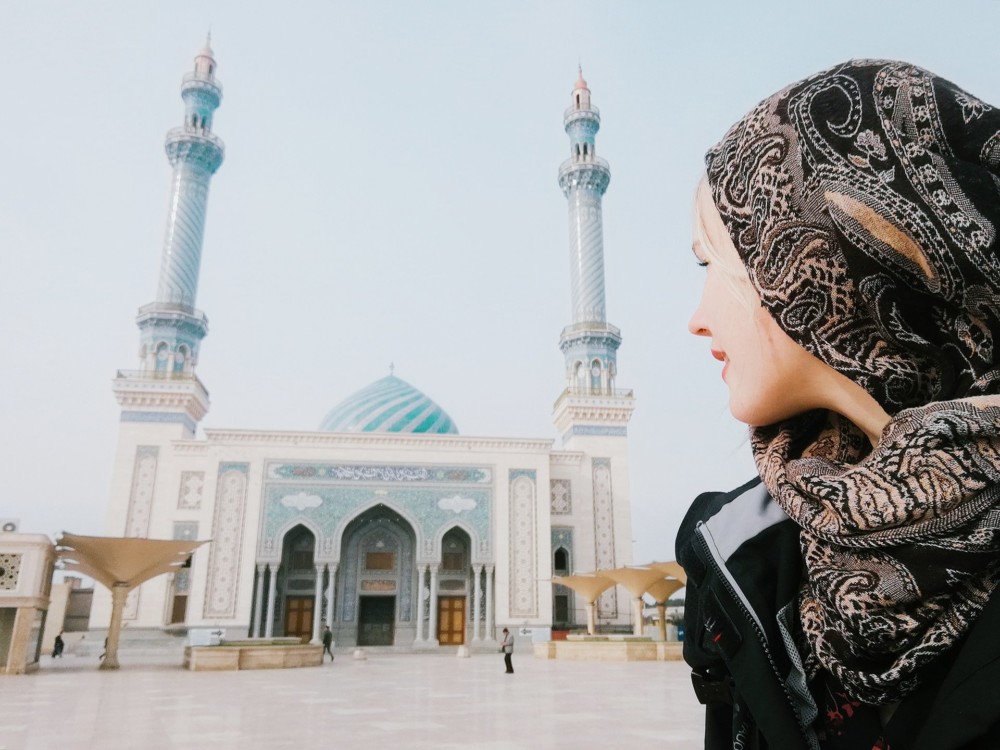
Iran E-Visa 2019: This is how I got my Tourist Visa via the Consulate in Istanbul
ENGLISH
Step 1: Preparing your documents
Before you start your online application make sure that you have all the necessary information to complete it 100%. Click here to get forwarded to the list of documents and information you will need.
I made sure that I had a flight and hotel (for the first night) booked in advance so that I could provide an Iranian address for my stay as well as a phone number and flight dates.
They also need a digital photo copy of the passport and a personal photo with specific measurements. I made the photo by myself and resized it with a photo editing tool. The personal photo must be in a ratio of 4:6 and equal or less than 500kb in file size.
The passport copy must be in a ratio of 8:6 and equal or less than 500kb in file size.
Do women need to wear a headscarf on their visa photo?
No, but it will lower the chance of getting rejected. In my case I didn’t cover my hair on the photo (and I’m bright blonde) and got accepted after 2 days, but surely it can depend on the person who is checking your visa application.
Check their photo page for updated information!
DEUTSCH
Schritt 1: Dokumente vorbereiten
Bevor man mit der Online-Bewerbung beginnt, sollte man sicher stellen, dass man für den Visumsantrag alle erforderlichen Informationen verfügt. Klicke hier, um zur Liste der Dokumente und Informationen zu gelangen, die man benötigt.
Ich stellte sicher, dass ich einen Flug und ein Hotel (für die erste Nacht) im Voraus gebucht hatte, sodass ich eine iranische Adresse für meinen Aufenthalt sowie Telefonnummer und Flugdaten angeben konnte.
Außerdem benötigt man eine digitale Fotokopie des Passes und ein persönliches Foto mit spezifischen Maßen. Ich habe das Foto von mir selbst gemacht und mit einem Fotoprogramm angepasst. Das persönliche Foto muss ein Verhältnis von 4:6 und eine Dateigröße von maximal 500 KB haben.
Die Passkopie muss ein Verhältnis von 8: 6 und darf ebenfalls nicht größer als 500 KB sein.
Müssen Frauen auf ihrem Visumfoto ein Kopftuch tragen?
Nein, aber es verringert die Chance, abgelehnt zu werden. In meinem Fall habe ich meine Haare auf dem Foto nicht bedeckt (und ich bin hellblond) und wurde nach 2 Tagen akzeptiert, aber es kann sicherlich von der Person abhängen, die den Visumantrag prüft.
Hier geht’s zu den aktuellen Informationen der MFA Webite.
Step 2: Applying for the E-Visa through the MFA website
Make sure that you have a stable internet connection and preferably fill in the form on a computer and not on your phone as you should print the final page for further process. Click here to get forwarded to the official E-Visa online registration form.
Filling in the form is easy and takes no longer than 10 minutes.
They ask for your closest Iranian consulate and the length of your stay. For me it was the Irian Consulate in Istanbul and I asked for a stay of 27 days.
After submitting the application it says to go to the nearest Iran consulate as soon as possible to hand in the original documents. In my case I waited a few days and got accepted without showing up beforehand. So I think it will be a waste of time to go there before it got accepted. But if your application is in review for more than a few days I would show up and ask for the status.
Schritt 2: Beantragung des E-Visums über die MFA-Website
Man sollte sicher stellen, dass man über eine stabile Internetverbindung verfügt und das Formular vorzugsweise auf einem Computer und nicht auf einem Telefon ausfüllt, da man die letzte Seite für den weiteren Vorgang ausdrucken sollte. Klicke hier, um zum offiziellen Online-Anmeldeformular für das E-Visa zu gelangen.
Das Ausfüllen des Formulars ist einfach und dauert nicht länger als 10 Minuten.
Es wird nach den nächstgelegenen iranischen Konsulat und nach der Dauer des Aufenthalts gefragt. Für mich war es das iranische Konsulat in Istanbul und ich habe einen Aufenthalt von 27 Tagen angefragt.
Nachdem man das Formular ausgefüllt hat, kommt eine Meldung mit dem Hinweis zum nächstgelegenen iranischen Konsulat zu gehen und die Originaldokumente einzureichen. In meinem Fall habe ich ein paar Tage gewartet und mein Visum wurde genehmigt, ohne vorher im Konsulat gewesen zu sein. Ich denke, es wäre Zeitverschwendung dorthin zu gehen, bevor man entweder angenommen oder abgelehnt wird. Wenn der Status jedoch nach ein paar Tagen immernoch in Bearbeitung ist, würde ich mich im Konsulat melden und nach dem Status fragen.
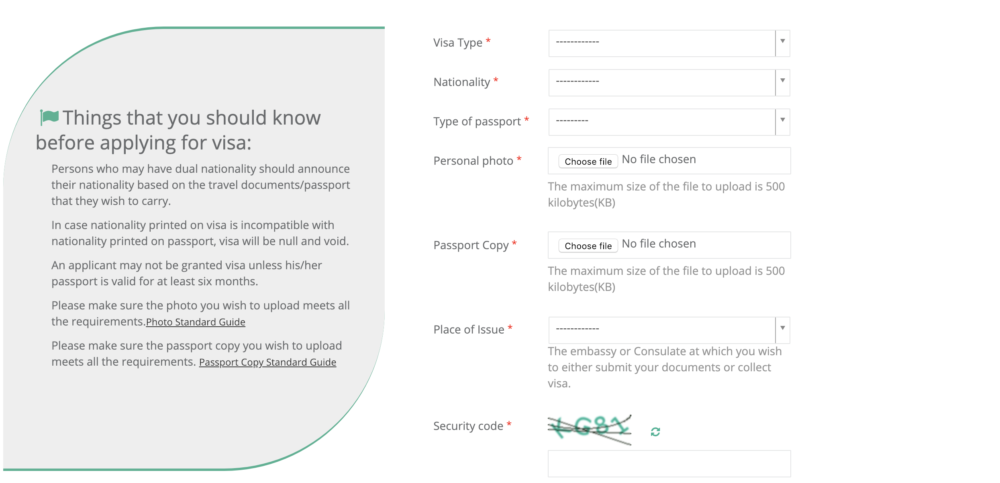
Step 3: Going to your nearest Iranian Consulate
After 3 days my visa application got approved. I applied on a Thursday and it got approved on Saturday. So after that I printed my application form and went to the nearest Iranian Consulate (in my case in Istanbul) with my passport.
I can just tell you about my experience with the Iranian Consulate in Istanbul as I made a few mistakes and wish I knew them before I went there.
First of all, the website and the application letter gave wrong information about the opening hours of the consulate. So I went there at 8 am to find out that it opens at 8:30 am and then got rejected because visa issues will only be handled between 2-3:30pm.
I went back at 2pm and got inside the consulate. Phones or bags are not allowed and it’s advised to wear a headscarf. Inside the consulate, there is one waiting room where you can get a waiting number. But don’t get fooled! Nobody cares about what number you have 😀
So after waiting for 1 hour to get called to the visa counter I figured out that they play “first in time, first in line”. So don’t wait. The “visa room” is divided by a glass door and there is one counter where all the people wait to speak with one officer. Just go to the counter and hand over your passport and your approved visa application letter.
After that you will get a piece of paper with an Iban Number and the amount of money you have to pay for the visa. In my case (German citizen) it was 50 EUR. So after the officer gives you this paper he won’t tell you where to pay 😀 After being confused for a while I found out that I have to leave the consulate to go to the nearest bank and pay there. They only accepted cash money, but all in all, it was an easy process. Just confusing to leave the consulate and walk to the bank. After you paid the banker will give you a receipt of your payment.
After that, you go back to the consulate and hand in your passport and the receipt. Then he will give you a piece of paper that tells you when to come back to collect your passport and visa. In my case it was 5 working days later.
Schritt 3: Zum nächsten Iranischen Konsulat gehen
Nach 3 Tagen wurde mein Visumantrag genehmigt. Ich habe mich an einem Donnerstag beworben und am Samstag wurde es genehmigt. Danach habe ich direkt mein Antragsformular ausgedruckt und bin mit meinem Pass zum nächstgelegenen iranischen Konsulat (in meinem Fall in Istanbul) gegangen.
Ich kann also nur von meiner Erfahrung mit dem iranischen Konsulat in Istanbul berichten. Ich habe ein paar Fehler gemacht wünschte, ich hätte davon gewusst, bevor ich ins Konsulat gegangen bin.
Zunächst einmal gab es keine oder falsche Angaben zu den Öffnungszeiten des Konsulats auf der Webseite, sowie auf dem Visa-Antragsformular. Ich bin also um 8 Uhr morgens dorthin gegangen, um herauszufinden, dass es um 8:30 Uhr öffnet und wurde dann wieder nach Hause geschickt, da Visa-Angelegenheiten nur zwischen 14:00 und 15:30 Uhr bearbeitet werden.
Also bin ich um 14 Uhr zurück zum Konsulat gegangen. Handys oder Taschen sind nicht erlaubt und es wird empfohlen, ein Kopftuch zu tragen. Innerhalb des Konsulats gibt es einen Warteraum, in dem man eine Wartemarke ziehen muss. Aber eigentlich ist sie sinnlos, denn niemanden interessiert diese Nummer 😀
Nachdem ich also 1 Stunde gewartet hatte, um mit meiner Wartenummer zum Visumschalter gerufen zu werden, habe ich festgestellt dass es hier nach dem Motto “wer zuerst kommt, mahlt zuerst” abgeht. Also nicht warten, bis man aufgerufen wird. Der “Visumsraum” ist durch eine Glastür getrennt und dort gibt es einen Schalter, an dem alle Leute warten, um mit einem Beamten zu sprechen. Man muss also einfach zum Schalter gehen, sich ein bisschen durchdrängeln und den Pass und das Visaformular durch die Luke geben.
Danach hat mir der Beamte ein Stück Papier mit einer Iban-Nummer und den Betrag, den man für das Visum zahlen muss, gegeben. In meinem Fall (deutscher Staatsbürger) waren es 50 EUR. Nachdem der Beamte also diesen Zettel gibt, sagt er auch nicht wirklich was man damit machen soll 😀 Nachdem ich einige Zeit verwirrt war, habe ich dann herausgefunden, dass man das Konsulat verlassen muss, um zur nächsten Bank zu gehen und dort zu bezahlen. In der Bank akzeptierten sie nur Bargeld, aber alles in allem war es ein einfacher Prozess. Es war nur sehr verwirrend, das man das Konsulat verlassen musste, um zur Bank zu gehen. Nachdem man bezahlt hat, erhält man eine Quittung über die Zahlung.
Danach geht man zurück zum Konsulat und gibt seinen Pass und die Quittung ab. Dann bekommt wieder einen Zettel auf dem steht, wann man zurückkommen soll, um den Pass und das Visum abzuholen. In meinem Fall waren es 5 Arbeitstage später.
Step 4: Picking up your passport and visa
After 5 days I went back to the consulate (they told me to go exactly at 3:30 pm) to collect my passport. That was easy as I just went back to the counter and showed the piece of paper with my passport number which they gave me when I left my passport there. The officer asked about my name and nationality and handed me my passport. I checked the visa and got a visa for the 27 days I applied for! 🙂
Schritt 4: Pass und Visum abholen
Nach 5 Tagen ging ich zurück zum Konsulat (sie forderten mich auf, genau um 15:30 Uhr dort zu sein), um meinen Pass abzuholen. Das ging auch echt einfach. Man muss sich wieder an den Schalter drängeln und den Zettel mit der Passnummer zeigen, den man bekommen hat als man seinen Pass abgegeben hat. Der Beamte hat dann nur nach meinem Namen und meiner Nationalität gefragt und mir mir meinen Pass zurück gegeben. Ich habe dann geprüft, ob das Visum keine Fehler enthält und tadaa ich habe genau die 27 Tage bekommen, auf die ich mich beworben habe! 🙂
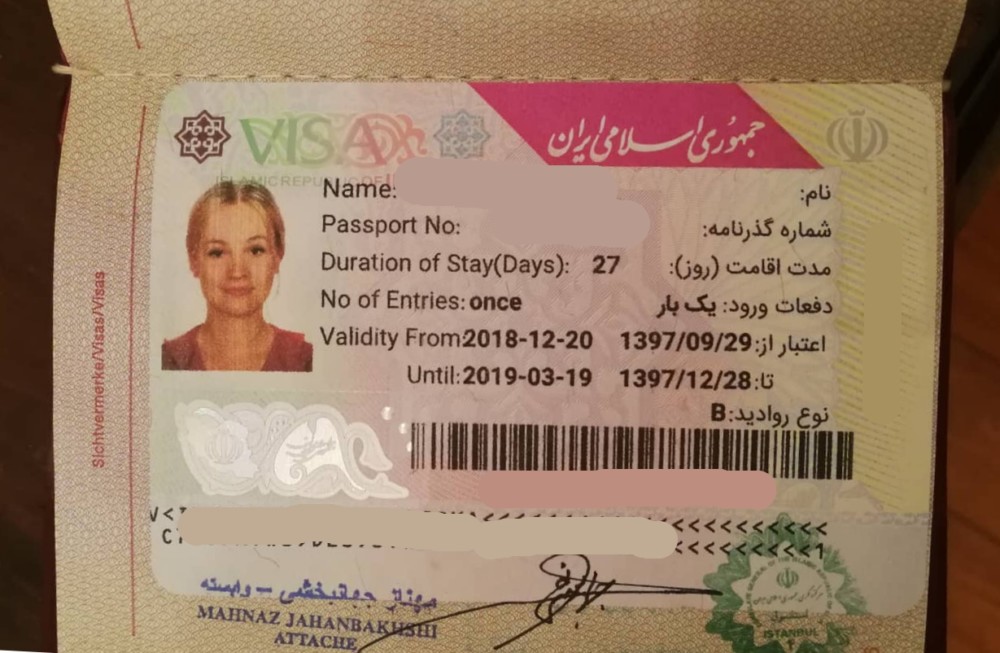
Step 5: Traveling to Iran
Now it’s time to finally travel to Iran! At the airport in Iran or at the Iranian border (if you travel over land) you just show your passport and that’s it. You’re in and ready to explore this beautiful country 🙂
Schritt 5: In den Iran reisen
Nun ist es Zeit, endlich in den Iran zu reisen! Am Flughafen im Iran oder an der iranischen Grenze (wenn man über Land reist) legt man einfach seinen Pass vor und das wars. Man ist drin und kann endlich dieses wunderschöne Land erkunden 🙂
FAQ
In my case, I did not wear a headscarf on my photo and got easily approved for the visa. Anyways, I would not take the risk and just put a photo with a headscarf. You never know which officer looks through your application and it may differ from person to person!
It depends from case to case, where you apply and which nationality you have. In my case it took 8 working days from applying to getting the visa in my passport. Make sure to apply around 1 month before your travel to have enough time.
Yes, it’s possible to apply as many times as you want. Sometimes they reject with the reason: please apply through a travel agency. In this case I would go with a travel agency that can organize your visa.
Yes! It’s obligatory to have valid travel insurance while traveling in Iran and it’s definitely advised. It’s possible to buy a travel insurance at the airport of Tehran or just make sure to print your existing travel insurance which states that it’s valid in Iran.
FAQ
In my case, I did not wear a headscarf on my photo and got easily approved for the visa. Anyways, I would not take the risk and just put a photo with a headscarf. You never know which officer looks through your application and it may differ from person to person!
It depends from case to case, where you apply and which nationality you have. In my case it took 8 working days from applying to getting the visa in my passport. Make sure to apply around 1 month before your travel to have enough time.
Yes, it’s possible to apply as many times as you want. Sometimes they reject with the reason: please apply through a travel agency. In this case I would go with a travel agency that can organize your visa.
Yes! It’s obligatory to have valid travel insurance while traveling in Iran and it’s definitely advised. It’s possible to buy a travel insurance at the airport of Tehran or just make sure to print your existing travel insurance which states that it’s valid in Iran.
Click here to find out more about my 4-week travel in Iran as a solo female traveler!
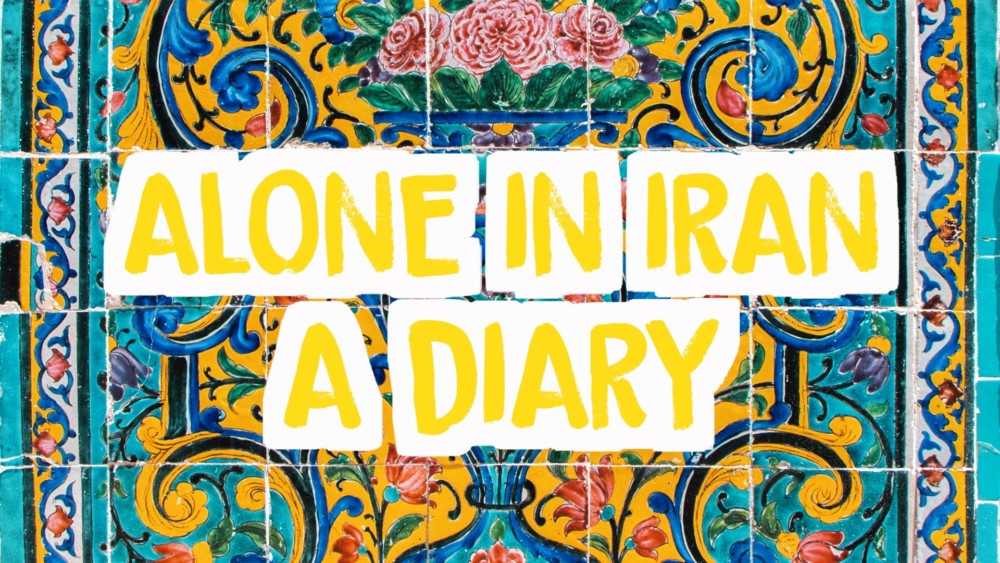
One Day in Istanbul
ENGLISH
The first time I came to Istanbul was back in 2012 and since ever then I love love love this city! It has its very own charm. The Bosphorus, the vibrant nightlife, Turkish traditions and people from all over the world that live here make it to one of my favorite cities. And it’s never getting boring here!
This video shows one day strolling around in different parts of Istanbul: Starting with a Turkish breakfast in Ortaköy, sitting near the seaside in Yeniköy, getting lost in the old town and its colorful bazaars and ending the day on the Asian side with a nice view from Üsküdar and Cengelköy 🙂
DEUTSCH
Das erste Mal, dass ich nach Istanbul gekommen bin, war 2012 und seitdem liebe ich diese Stadt! Sie hat ihren ganz eigenen Charme. Der Bosporus, das pulsierende Nachtleben, die türkischen Traditionen und Menschen aus aller Welt, die hier leben, machen Istanbul zu einer meiner Lieblingsstädte. Und hier wird es nie langweilig!
Dieses Video zeigt einen Tag in verschiedenen Stadtteilen Istanbuls: Angefangen mit einem türkischen Frühstück in Ortaköy, in Yeniköy am Meer sitzen, sich in der Altstadt mit ihren farbenfrohen Basaren verirren und den Tag auf der asiatischen Seite mit einer schönen Aussicht von Üsküdar und Cengelköy endend 🙂
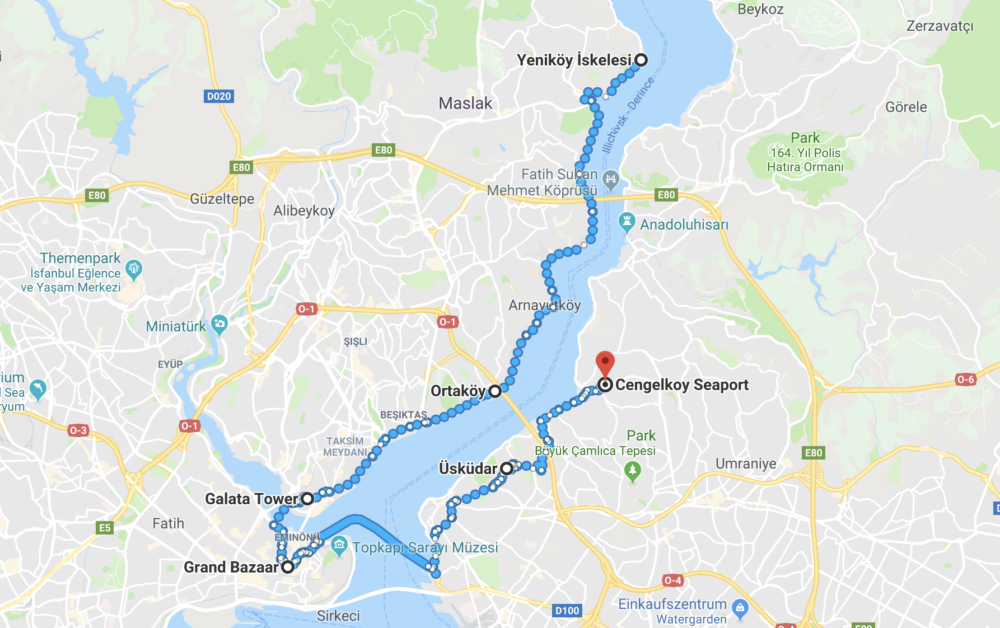
25 Great Reasons to Visit the Philippines
Contrary to the belief of a number of people, the Philippines is not only limited to the traffic jams of Manila. There is so much more to it.
The Philippines has 7,107 islands to choose from. Do you want to experience life by the beach? Do you want to conquer the highest peaks in the country? Do you want to walk the busy streets of the concrete jungle? Name it, and the Philippines has it. And because it is made up of thousands of islands, there are so many options and so many activities that you can do.
If you’re planning to travel around Southeast Asia, you must not ignore the Philippines. Not convinced? Here are 25 things that might change your mind.

1. The Philippines is the perfect tropical getaway
as it maintains an average temperature of 26.6°C all year round. There are no extreme hot or cold temperatures, so your body won’t have to adjust too much. Plus, you can get to enjoy a vacation at the beach any time of the year.
2. The country has a lot of beautiful white sand beaches
that easily resemble the tropical paradise of your dreams. Nothing will beat the feeling of ditching your flip-flops as you sink your toes into the fine white sand. Add in the pristine water and laid-back vibes, you might never want to leave.
These are some of the places with the best white sand beaches that you must visit:
- Bantayan Island, Cebu
- Malapascua Island, Cebu
- Malcapuya Island, Coron
- Daku Island, Siargao
- Pacifico Beach, Siargao
- Mati, Davao Oriental
- Panglao Island, Bohol
3. Here you can still find untouched nature
While there are beaches that are already known to many, there are even more of unspoiled beaches in the country. Here, you will find serenity and be able to relax without unwanted noise from other tourists.
These are some of the “virgin” beaches in the country:
- Malamawi Island, Basilan
- Carnaza Island, Cebu
- Bonbon Beach, Romblon
- Balimanok Beach, Pangasinan
- Vulugan Beach, Batanes
- Bolobadiangan Island, Iloilo
4. There are pink beaches in the Philippines too!
You don’t need to go to Harbour Island in Bahamas, Balos Bay in Greece, or Spiaggia Rosa in Sardinia, because this tropical country in Southeast Asia is also a home to a few rose-tinted sand beaches. They are a bit harder to find than the white sand beaches, but they will definitely be worth the trip!
These are the known pink beaches in the country:
- Santa Cruz Island, Zamboanga
- Sila Island, Northern Samar
- Subic Beach, Sorsogon
- Tikling Island, Sorsogon
- Pundaguitan Beach, Davao Oriental
5. Ever swam with sea turtles?
If the beautiful beaches aren’t enough to convince you to visit the Philippines, you have to know that you can swim with sea turtles, locally known as “pawikan,” as well. It’s not every day that you get to do swim alongside these magnificent animals, so you might as well grab the chance while you can.
Here are some of the spots where you can swim with sea turtles:
- Apo Island, Negros Oriental
- Balicasag Island, Bohol
- Pescador Island, Cebu
- Turtle Islands, Palawan
6. Swimming with whale sharks
Have you tried swimming with a creature that is as big as a bus? You can do that in the Philippines. Swimming with whale sharks is quite a popular tourist activity in the country. Although it has become quite controversial as these gentle giants are being fed by humans in Oslob, Cebu, which alters their food hunting habits, there are a few other places where they are able to roam and hunt freely.
Here are the places that are known to have whale shark sightings:
- Donsol Bay, Sorsogon
- Tubbataha Reef, Palawan
- Sogod Bay, Southern Leyte
7. Ever heard of a sardine run?
No, sardines don’t run. They swim. And you can swim with millions of them in Moalboal, Cebu. What’s even amazing about it is that you won’t have to swim that far or dive too deep to see them because the sardine run takes places just a few meters off the beach!
8. The Philippines is the Surfer’s Paradise
As the Philippines is surrounded by the Celebes Sea, the Philippine Sea, the South China Sea, and the Pacific Ocean, you are guaranteed to find great surfing spots in various parts of the country.
Here are the known surfing destinations in the country:
- Siargao Island, Surigao del Norte
- Lanuza Bay, Surigao del Sur
- Baler, Aurora
- San Juan, La Union
- San Antonio Zambales
- Calicaoan, Eastern Samar
9. In the Philippines, you can find many breath-taking (literally) diving spots
that boast of rich marine life, such as various species of sea creatures and vibrant beds of corals. Many people from different parts globe visit the country to just to see these for themselves.
Here are some of the world-class diving spots:
- Apo Island, Negros Oriental
- Apo Reef, Mindoro Occidental
- Ticao Pass, Masbate
- Monad Shoal, Cebu
- Tubbataha Reef, Palawan
- Honda Bay, Palawan
- Blue Hole, Romblon
- Enchanted River, Surigao del Sur
10. If you want to experience the island nightlife
the Philippines has got you covered. Partying in the club is one thing, but dancing the night away by the beach is a totally different story.
Here are some of the places where you can experience the lively island nightlife:
- White Beach, Boracay Island
- Ibiza Beach Club, Mactan, Cebu
- Alona Beach, Panglao Island
11. There are a lot of hiking destinations
in the Philippines as it has a multitude of mountains, hills, and volcanoes. In some areas, camping is allowed. You can lay under the stars, breathe the fresh air, listen to the sounds of nature, and if you’re lucky, even capture a Milky Way sighting or a shooting star on your camera.
Here are some of the many picturesque hiking destinations:
- Makiling, Laguna
- Yangbew, Benguet
- Pulag, Benguet
- Pico de Loro, Batangas
- Apo, Davao del Sur
- Pinatubo, Zambales
- Taal Volcano, Batangas
12. This tropical country has plenty of waterfalls
small and big. Even the island of Cebu alone has 90. So, you are bound to find one almost wherever you go.
Here are some of the most popular waterfalls to date:
- Kawasan Falls, Cebu
- Asik-Asik Falls, North Cotabato
- Tinago Falls, Lanao del Norte
- Maria Cristina Falls, Lanao del Norte
- Tinuy-An Falls, Surigao del Sur
- Cambugahay Falls, Siquijor
- Ditumabo Falls, Aurora
- Casaroro Falls, Negros Oriental
13. One of the most beautiful natural phenomena is the sea of clouds
and you can witness this in multiple areas in the Philippines. A hike is required, obviously, but all the steps you make will be worth it when you find yourself standing above the clouds. Not directly, of course.
Here are some of the best locations to witness the sea of clouds:
- Pulag, Benguet
- Kiltepan, Sagada
- Danao, Bohol
14. There are many places to watch the sunset by the sea
While there are also many spots in the world where you can get a beautiful view of the sunset, even when you’re just driving along the road, seeing the sun go down into the spotless horizon will give you an entirely different experience.
These are a few of the best spots to watch the sunset by the sea:
- White Beach, Boracay Island
- Bantayan Island, Cebu
- Anawangin Island, Zambales
- Manila Bay, Manila
15. The Philippines has the longest underground river in the world
The Puerto Princesa Subterranean River in Palawan is an 8.2-kilometer navigable river, which flows into the South China Sea. Tours last about 45 minutes to an hour and are usually pre-booked.
16. Marvel at the beauty of the Banaue Rice Terraces
which are just as beautiful, but also different, as the ones in Nepal, China, and Indonesia.
17. There are colorful festivals
in different parts of the country all year round. Locally known as “fiesta,” people gather in their respective towns to witness their annual celebrations. Some festivals are in honor of religious figures and folklore, while others are nature-related.
Here are some of the must-see Philippine festivals:
- Panagbenga Festiva in Baguio
- Ati-atihan Festiva in Aklan
- Sinulog Festiva in Cebu
- Kadayawan Festival in Davao
- Dinagyang Festiva in Iloilo
- Masskara Festival in Bacolod
- Pintados Festiva in Tacloban
- Moriones Festiva in Marinduque
- Pahiyas Festiva in Quezon
18. Historical and beautiful churches
Being a predominantly Catholic nation, the Philippines is a home to a plethora of beautiful churches. A number of these have been standing for hundreds of years, with some housing centuries-old relics.
There are a few of the beautifully constructed churches around the country:
- Our Lady of Mount Carmel Parish, Bulacan
- Church of Saint Augustine, Ilocos Norte
- Nuestra Señora de la Porteria Church, Albay
- Basilica of the Immaculate Conception, Manila
- Minor Basilica of Saint Martin of Tours, Batangas
- Carmel Chapel, Batanes
19. The Philippines has several bird watching spots
Being a home to about 200 endemic birds, the country is also a known migration spot for birds coming from other countries, like Japan and Taiwan, during winter time.
Here are some of the best bird-watching spots:
- Olango Island, Cebu
- Rajah Sikatuna National Park, Bohol
- Angat Dam, Bulacan
- La Mesa Eco Park, Quezon City
- Candaba Wetlands and Bird Sanctuary, Pampanga
- Palay-Palay, Cavite
- Wawa Dam, Rizal
20. Discover Adventure Sports in the Philippines
For the adrenaline junkies, there are a wide variety of heart-pumping activities that you can do while in the country. One of these is tandem skydiving. Forget about the drones, see the aerial view with your own eyes.
These are the places where you can go skydiving:
- Bantayan Island, Cebu
- Clark, Pampanga
- Vigan, Ilocos Sur
- Mati, Davao Oriental
- Subic Bay, Zambales
21. The Philippines is one of the very few places where you can find Tarsiers
which are tiny nocturnal primates that live in dense forests. There are many of them in the island of Bohol. However, these six-inch cuddly-looking creatures are already endangered, so you must not miss the opportunity to see while you still can.
22. Visiting the Philippines is affordable
When traveling around the Philippines, your money will go a long way. From the food to booze to tour packages, almost everything is affordable in the Philippines. Even a bottle of beer, or a meal, can cost less than 1 USD.
23. The unique Filipino cuisine will surprise you
The Filipino cuisine has Western and Oriental influences, which make it deliciously unique. Each region also has their different specialties. However, what you must not miss out on is the fresh seafood.
24. Everbody speaks English
Another convenient thing about traveling in the Philippines is that the language barrier is less likely to be a problem as a huge percentage of the population can speak and understand English.
25. Filipinos will be nice to you
Last but not least, they say that the Filipino hospitality is incomparable. A lot of foreigners keep coming back to the Philippines, not just because of its natural wonders, but because of the friendly and welcoming people who make everyone feel like family.
So did these 25 reasons to Travel the Philippines convince you to explore this tropical destination? I hope so because it will be worth every minute of your holiday.
The Story Of the Prinkipo Orphanage
Yesterday I went to one of the islands of Istanbul, Büyükada and I found something really interesting. On the top of a hill. Hiding behind some trees: A wooden building that is considered to be the second largest one of the world. So I did some research and to my surprise this building has a really impressive story. But let me start from the beginning:
THE HISTORY
It was constructed in 1898 by a French architect as a luxury hotel and casino with the name Prinkipo Palace. However, the sultan at that time didn’t like the plan and eventually did not give the permission to operate a casino and hotel there. So it was sold in 1903 and bought by the wife of a prominent Greek banker, Eleni Zarifi. She donated the house to the orthodox church which operated it as an orphanage for Greek children.
The house was built entirely using wooden materials and has 206 rooms, a large kitchen, a grand library, a primary school and various vocational schools.
15 people were employed in the orphanage and During the 60 years it catered to the needs of more than 5000 orphans.
In 1964 during the Cyprus issue, the orphanage was forcefully closed and since then it’s decaying and abandoned. There are some legal disputes regarding the building and a lot of money is involved, but the condition of the building is already really really bad and it is to be hoped that the reconstruction will start before it’s too late.
IS THE HOUSE HAUNTED?
People say that there was a fire when the building served as an orphanage, And it is also told that some children burned during the fire. So there was a child that tried to escape and jumped into the well in the garden. In the searches that were made after the fire nobody was thinking about looking into the well and the child had no other choice than dying. Nowadays the people of the island are still telling ghost stories about this place and they even claim that they occasionally hear children scream from the orphanage at night.
HOW TO GET THERE?
It Is possible to visit the building from the outside but not permitted to get inside. However, getting there is quite easy when you are on the island anyway. As it’s located on a hill in the center of the island you can just walk there within 30 minutes from the harbour or take the bike or one of the horse carriages if you are really lazy. Once you’re there, there is a huge barb wire fence. It is not allowed to get inside of the building or the property as it’s falling apart and it’d be really dangerous. Anyway it’s already breathtaking to walk around the fence and look from the outside. I heard that it might be possible to get on the property by asking the people that actually live there and taking care of the building. But I haven’t tried it myself.
It’s a really mystical place and the view of these wooden houses is pretty impressive. It’s a shame that legal disputes and ownership fights are in the way of rebuilding this unique place. It is just to be hoped that there will be a solution before the house will be destroyed forever.
Pinterest Group Board for Travel Videos
Click here to get directly forwarded to the Pinterest Group Board “Awesome Travel Videos”
Video is the future. And therefore Pinterest introduced a new function to share videos on its platform. A huge step forward! With the new video function of Pinterest it is now possible to share video content and to watch videos directly in the pinterest feed.
To make it more efficient for video producers and in particular travel videographers it makes sense to share the video content in a group board to increase your reach, organize travel videos in a collection and to connect with other collaborators of the same niche.

Are you a travel videographer? Join this board to show your adventures & travel videos! Click here to get forwarded to the Pinterest Group Board “Awesome Travel Videos”
How to be part of the group board:
» STEPS: Follow my Pinterest account first (not just the board) & send me an email at gwen[at]travelcomic.com with your Pinterest profile to request. Or simply request to join via Pinterest.
6 group board rules
(1) Limit pins to 3 images/videos a day
(2) Post ONLY vertical photos
(3) Pins should have a link to a video
(4) NO commercial sites
(5) NO duplicate posts
(6) Not a requirement, but try to repin another pin on the board each time you add a pin
More Travel Video Group Boards
- Travel Videos – everything from from budget to luxury
- Travel Videos- B&B/Inns, off-beat places to dine
- Travel Videos – Singles vacations and cruise videos
- Travel Vlogs
As videos are a new thing at Pinterest there aren’t that many group boards for (travel) videos yet, but if you know some put them in the comments! 🙂
Also find more boards for your niche at Pinterest using Pingroupie!
30 Vlogmas Travel Video Ideas for 2018!
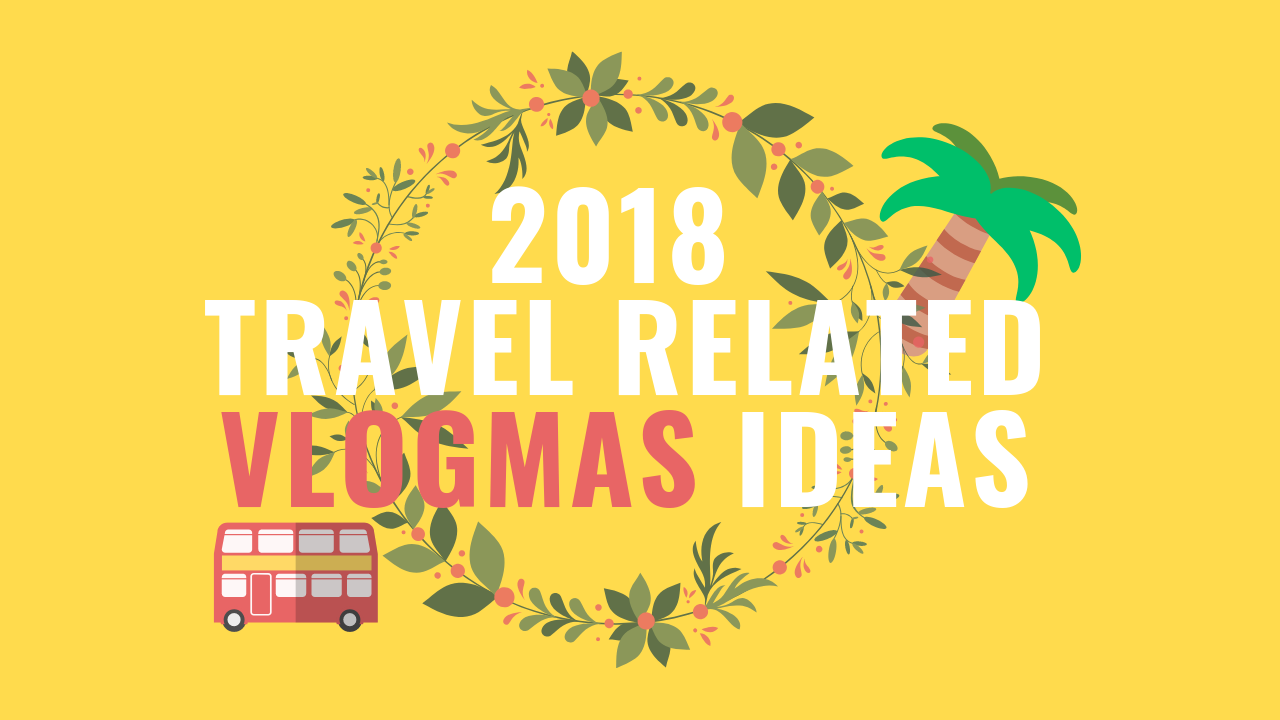
ENGLISH
It’s this time of the year again – Vlogmas time! As the year comes to an end it’s a good chance to finish with a strong month full of valuable content for your audience. The idea is simple but powerful: Uploading a new video every day until X-mas that draws attention and hopefully some new people to your platform. To give you some inspiration for travel related content get through the list below and start planning your vlogmas month!
1. The why and what. Introduce yourself and inform your followers why you’re doing vlogmas and that they can expect daily videos!
2. Your favorite city. Portrait your favorite city and show why it’s just awesome to be there
3. Food. Share some good restaurants or food spots of your current city or (if applicable) share some christmas food traditions
4. Reasons why Christmas is awesome (or not). Get your audience and yourself excited for the holidays!
5. How do people celebrate Christmas in your country? And if not, what other holiday traditions do exist?
6. 24 hours. Make an epic what-to-do-in-24-hours-video of your city
7. Christmas gifts. What do you buy for christmas or what do you wish for?
8. Inspiration. Share some things that inspire you to do what you do / travel
9. How to. Make a how to video about a topic that you are good at. E.g. how to make interesting travel videos
10. Music. Make a video about a traditional instrument of your country or city you are in right now
11. Tips. Share some of your best travel hacks and tips
12. Dreams. Put together your goals and dreams and capture them in a short video!
13. Language. Wherever you are. Teach some cool words to your followers.
14. Weaknesses. Talk about your flaws and what you are doing to overcome them
15. Day in the life. What’s a typical day like for you?
16. One thing. What is one thing you can’t live without while traveling?
17. Editing. How do you edit your videos?
18. Money. What are some techniques to earn money while traveling. How do you do it?
19. Date night. How does the perfect night look like to you?
20. Beautiful spots. Show us around in your city and show the best places
21. Q&A. Answer some common questions you get
22. Movies. What are some of your favorite travel movies?
23. Caring. Talk about a topic that you care about
24. Culture. What are some cultural differences you are experiencing right now
25. Travel bag: what’s in your carry on?
26. Minimalism. What are the reasons to travel more and buy less?
27. Travel planning. How do you plan your trips and where to go to next?
28. Recap your last travels or favorite travels of the year!
29. Why do you travel?
30. Animals. Everybody loves animals. Time to make a video about it!
There are in fact endless video ideas for a daily routine. Make sure to plan your vlogmas ahead so that you can still enjoy your pre-christmas time 🙂
Let me know if you will also take part in the vlogmas challenge! Here you can check out my videos in either YouTube or Facebook.
DEUTSCH
Es ist wieder so weit – Vlogmas Zeit! Das Jahr geht zu Ende und bietet so die letzte gute Möglichkeit mit einem starken Monat abzuschließen. Die Idee ist simpel, aber effektiv: Jeden Tag bis Weihnachten ein neues Video hochladen, das hoffentlich ein paar neue Leute anzieht. Ideen rund um das Thema Reisen & Vloggen gibt es in der folgenden Liste. Also Notizzettel raus und mit Vlogmas richtig durchstarten!
1. Worum geht’s? Stell dich vor und informiere Deine Follower darüber, was Vlogmas ist und dass täglich ein neues Video kommen wird!
2. Lieblingsstadt. Überzeuge in einem Video, warum es die beste Stadt der Welt ist
3. Essen. Zeig die besten Restaurants oder Food Spots in Deiner Stadt oder (falls zutreffend) weihnachtliche Spezialitäten
4. Gründe, warum Du Dich auf Weihnachten freust (oder auch nicht). Erwecke Vorfreude in Deinen Followern und Dir selbst!
5. Wie feiert man bei Dir Weihnachten? Und falls nicht, welche anderen Feiertagstraditionen gibt es?
6. 24 Stunden. Drehe ein episches 24-Stunden-Video
7. Weihnachtsgeschenke. Was kaufst Du zu Weihnachten oder was wünschst Du Dir?
8. Inspiration. Teile die Dinge, die Dich dazu inspirieren, zu tun, was Du tust
9. How to. Drehe ein Video über etwas, das Du gut kannst. Z.B. wie man interessante Reisevideos macht
10. Musik. Drehe ein Video über ein traditionelles Instrument von dem Land oder der Stadt, in der Du Dich gerade befindest
11. Tipps. Teile Deine besten Reise-Hacks und Tipps
12. Träume. Was sind Deine Ziele und Träume?
13. Sprache. Wo auch immer Du bist- Bring Deinen Followern ein paar coole Worte bei
14. Schwächen. Sprich über Deine Schwächen und darüber, wie Du sie überwinden kannst
15. Ein Tag im Leben. Wie sieht ein typischer Tag für Dich aus?
16. Eine Sache. Was ist eine Sache, ohne die Du auf Reisen nicht leben könntest?
17. Editing. Wie bearbeitest du Deine Videos?
18. Geld. Wie verdienst Du Geld auf Reisen. Welche Optionen gibt es?
19. Date Night. Wie sieht für Dich ein perfektes Date aus?
20. Schöne Orte. Zeig Deine Stadt und die besten Plätze
21. Q & A. Beantworte die am häufigsten gestellten Fragen
22. Filme. Was sind Deine Lieblingsreisefilme?
23. Herz. Sprich über ein Thema, das Dir am Herzen liegt oder Dich bewegt
24. Kultur. Was sind einige kulturelle Unterschiede, die Du gerade erlebst?
25. Backpack: Was nimmst Du in Deinem Handgepäck mit?
26. Minimalismus. Was sind die Gründe, um mehr zu reisen und weniger zu kaufen?
27. Reiseplanung. Wie planst Du Deine Reisen und wohin geht es als nächstes?
28. Gib einen Überblick über die letzten Reisen oder Lieblingsreisen des Jahres!
29. Warum reist du?
30. Tiere. Jeder liebt Tiere. Zeit, ein Video darüber zu machen!
Tatsächlich gibt es unendlich viele Videoideen für tägliche Uploads. Vergiss nicht den Vlogmas im Voraus zu planen, damit Du die Vorweihnachtszeit trotzdem genießen kannst 🙂
Lasst mich wissen, ob Ihr Euch ebenfalls der Vlogmas-Herausforderung stellt! Meine Videos gibt es auf YouTube und Facebook.
I did it solo! Overcoming the Fear of Hitchhiking solo #14
DEUTSCH
Diesmal standen mir 4 volle Tage bevor, 2.500 km vom Nordkap bis nach Oslo: Alleine! So sehr wie ich es liebe zu trampen und das Abenteuer mit jemandem zu teilen, macht es genauso Spaß alleine zu trampen. Dieses Video ist Teil 2 meiner Reise per Anhalter durch Skandinavien.
Part 1 des Videos: https://youtu.be/PnfeaWOTH7k
ENGLISH
This time I was facing 4 full days of hitchhiking 2.500km from the North Cape down to Oslo: Solo! As much as I enjoy hitchhiking and sharing the adventure with a friend it’s also fun to hitchhike solo. This video is part 2 of my hitchhiking trip through Scandinavia.
Watch Part 1 here: https://youtu.be/PnfeaWOTH7k
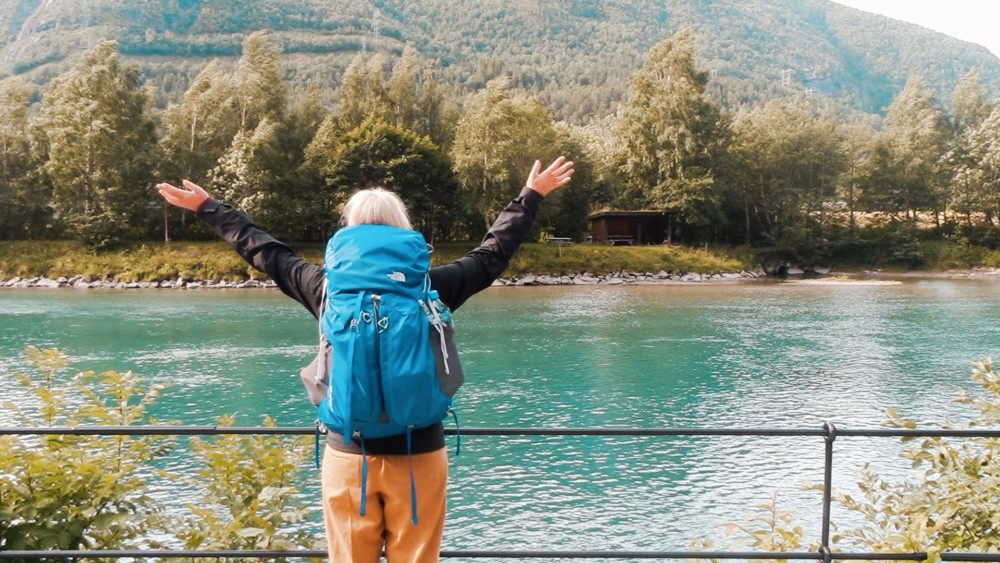
Ich liebe es, die ultimative Freiheit indem zu haben, was ich tue oder wohin ich gehen will. Auf dieser Reise traf ich echt tolle Menschen, die mich mitgenommen haben. Darunter waren z.B. zwei Blogger, die im Van mit ihrem Hund gelebt haben. Dann traf ich zwei Touriguides in Geiranger, mit denen ich Pilze sammeln gegangen bin und anschließend selbstgemachten Matetee in ihrem Wohnmobil getrunken habe. Eine polnische Familie hat mich auf eine Sightseeingtour durch Trollstigen mitgenommen und viele andere.
Der lustige Teil war, als ich eine ukrainische Familie in Norwegen wiedergetroffen habe, die uns vor ein paar Tagen Tagen in Finnland mitgenommen haben!
I love having the ultimate freedom to do whatever I want and to go wherever it takes me. On this trip I met really awesome people who gave me a lift including two bloggers living their life in a van with their dog, tourist guides from Geiranger who invited me to go picking mushrooms with them and drinking mate tea in their camper van, a polish family that took me on a sightseeing ride through Trollstigen and many more.
The funny part was when I met again a Ukranian family in Norway who gave us a lift in Finland a few days ago!
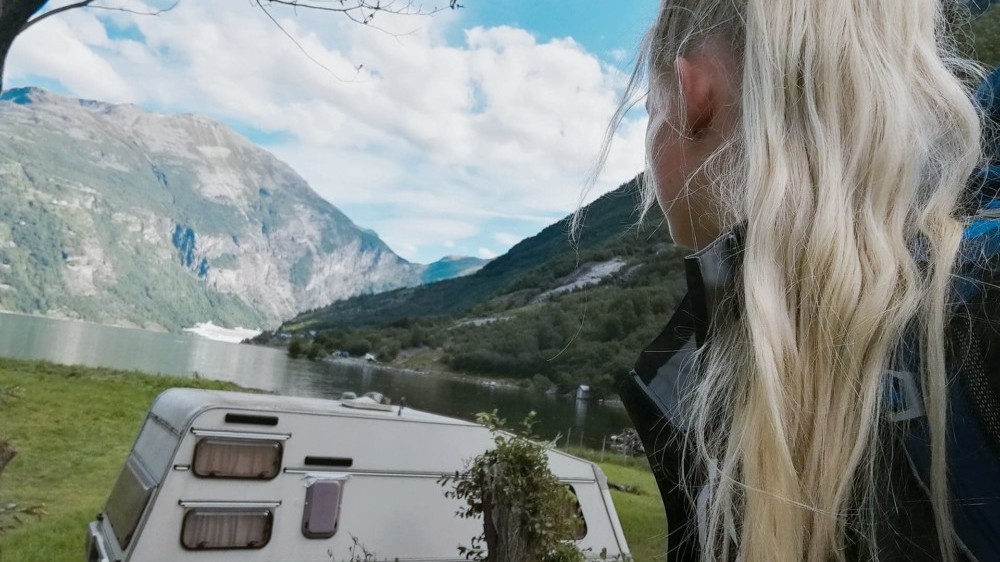
Ich entschied mich dazu, die längere aber schönere Route an der Küste entlang zu trampen. Und ich hätte mir niemals erträumen können, dass es so schön ist.
Was ich auf jedenfall nochmal gelernt hab, war, dass man echt überall weg kommt. Auch 6 Uhr morgens am Nordkapp im Regen und Nebel. Oder im unendlichen Nichts von Norwegen.
I decided to take the longer but more beautiful route along the coast. And I never imagined that it was THAT beautiful.
What hitchhiking taught me again was that you really get a lift from everywhere. Even at 6am in the morning at the North Cape in rain and fog. Or in the middle of nowhere in Norway.
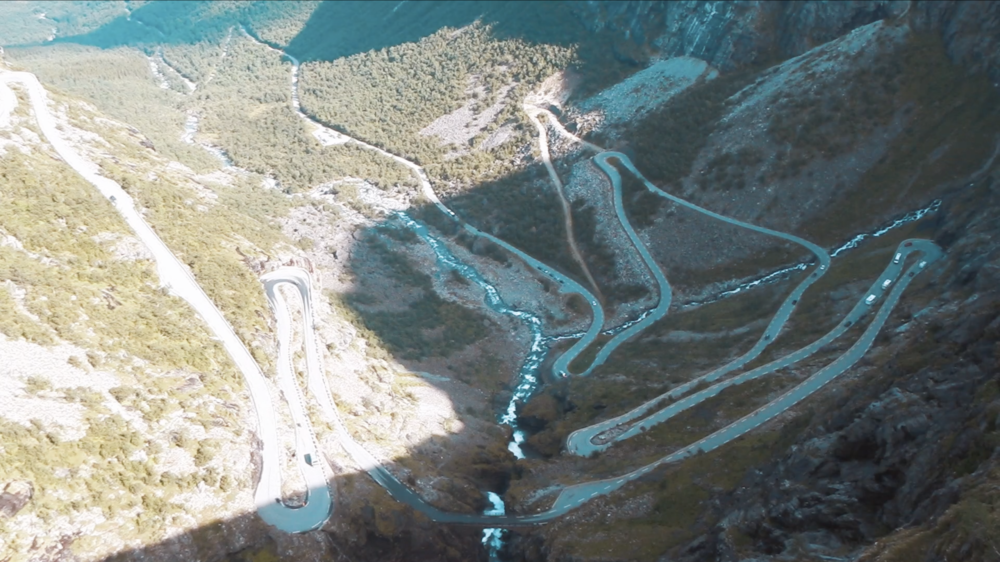
Auch wenn ich schon einige Male alleine getrampt bin, ist es immer wieder eine neue Herausforderung für mich. Es ist nicht so, dass ich komplett sorgenlos bin, wenn ich mich dazu entscheide, zu trampen. Aber irgendwie überwiegt der Reiz, sich auf andere Menschen einzulassen, diese spontanen Momente zu erleben und an Orte zu kommen, die man sonst niemals sehen würde.
Even though I’ve been hitchhiking alone a few times, it’s always a new challenge for me. It’s not that I’m completely fearless when I decide to hitchhike. But somehow it’s tempting to meet other people, experiencing these spontaneous moments and exploring places you would never see otherwise.
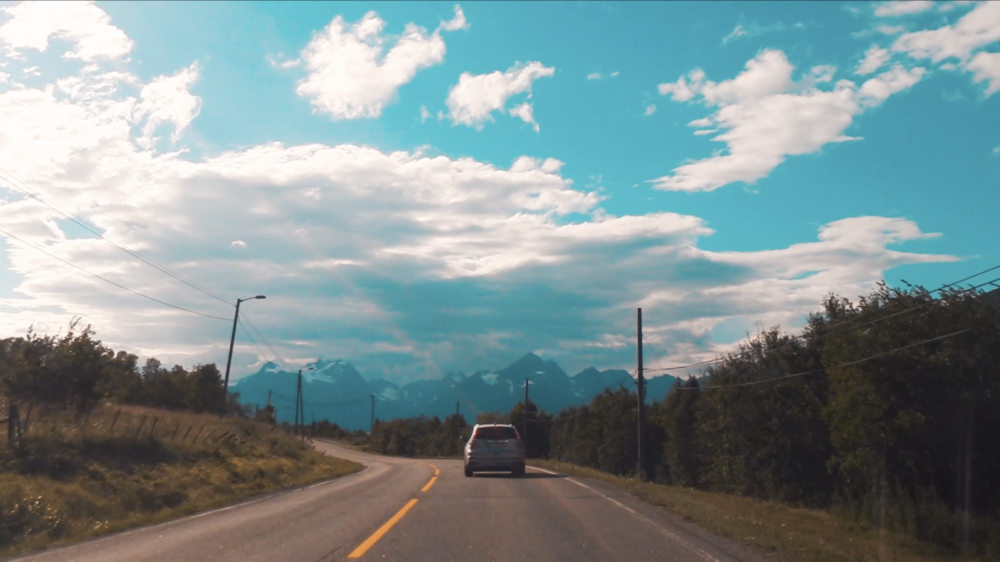
In Norwegen zu trampen war besonders schön, weil man so viel auf einmal sehen konnte. Berge, Serpentinen, Wasserfälle, Schnee, Sonne, Meer. Ich wusste oft nicht, wo ich zuerst hinschauen soll.
Mein Rat an alle, die allein trampen wollen: Geht raus, schnappt euch ein Stück Pappe, informiert euch vorher, vertraut eurem Bauchgefühl und streckt den Daumen raus.
Hitchhiking in Norway was extra beautiful because there is so much to see. Mountains, serpentines, waterfalls, snow, sun, sea. I often did not know where to look first.
My advice to everyone who wants to hitchhike solo: Go out, grab a piece of cardboard, educate yourself beforehand, trust your intuitions and thumbs up!
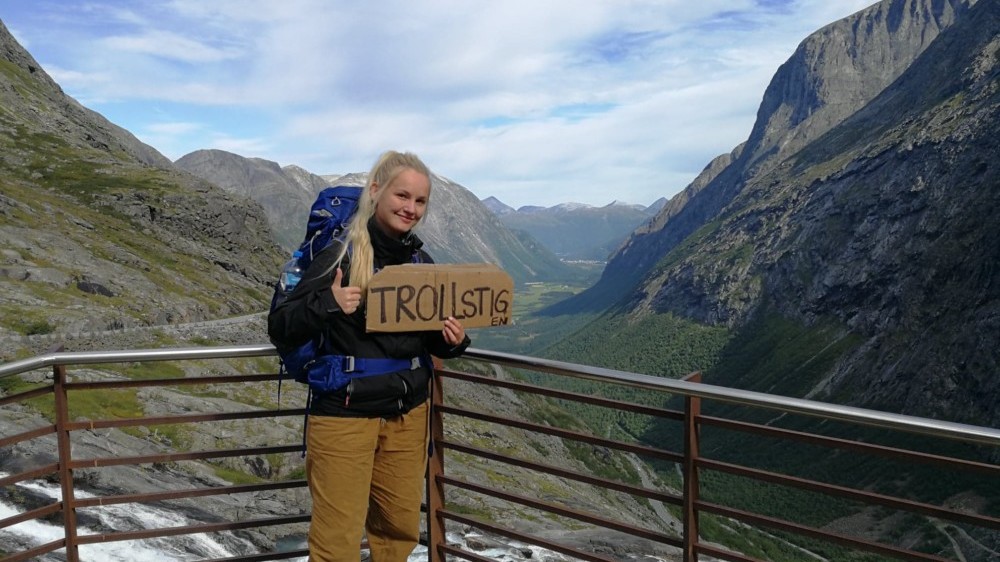
Hitchhiking 3500km to the North Cape #13
DEUTSCH
Dieser Trip war besonders. Denn es ging es mit 15 anderen per Anhalter in den kalten Norden.
Es soll erst ein Ende geben, sobald es nicht mehr weiter geht. Also ging es durch 7 Länder und 3500km Richtung Norden zum Nordkapp. Oder wie wir es nannten: Das Ende der Welt.
Die Regeln waren einfach: 10 Tage Zeit und Per Anhalter bis zum Nordkapp. Der erste gewinnt.
Unsere Ausrüstung? Ein Zelt, n Edding, Pappe und genug Instantnudeln. Und Geduld. Das wichtigste.
Zusammen mit meinem Tramppartner, den ich zuvor nur aus FB kannte, ging es die nächsten Tage durch Polen, dem Baltikum und Skandinavien.
ENGLISH
This trip was special. Together with 15 others we hitchhiked towards the north.
There will only be an end as soon as it does not go further. So we hitchhiked through 7 countries and 3500km to the North Cape. Or as we used to call it: the end of the world.
The rules were simple: 10 days and hitchhiking to the North Cape. The first one wins.
Our equipment? A tent, a permanent marker, a sign and lots of instant noodles. And patience. The most important thing.
Together with my hitchhiking partner, whom I only knew from Facebook, we hitchhiked the next days through Poland, the Baltic States and Scandinavia.
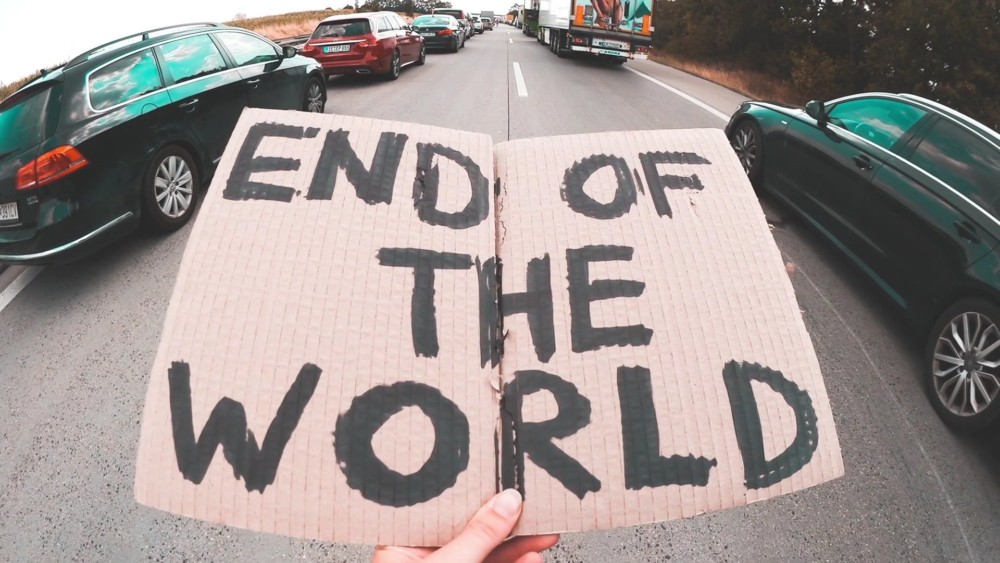
Wir haben stundenlanges Warten überstanden, mit anderen Trampern Bier getrunken, haben die kleinen Dinge geliebt, sind nachts gestrandet und von Fremden aufgenommen worden, Fahrer haben uns 100te Kilometer mitgenommen, wir haben uns dem wechselnden Wetter gestellt, neue Freundschaften geschlossen und vor allem: Nie aufgegeben.
Wir haben so viel erlebt in den 7 Tagen, dass man das alles gar nicht in Worte wiedergeben kann.
Unser Weg führte uns durch 7 Länder und war geprägt von langen Autofahrten, Begegnungen mit unglaublich netten Menschen und einem steten Wandel des Klimas und der Natur um uns herum. Ja, der Weg war das Ziel und er zeigte uns die schönsten Ecken des Nordens. Es ging nicht darum, am schnellsten am Ziel zu sein, sondern das Unmögliche möglich zu machen. Es ging darum, die Menschen 3.500km lang zu begleiten und was wir finden konnten, war Hilfsbereitschaft und Freundlichkeit und viel Vertrauen.
We spent hours waiting, drank beer with other hitchhikers, loved the little things, got stranded at night and were taken in by strangers, drivers took us hundreds of kilometers, we survived the cold weather, made new friendships and above all: We have never given up.
We have experienced so much in those 7 days that it’s impossible to put it in words.
Our journey took us through 7 countries and was marked by long car rides, encounters with incredibly nice people and a constant change of climate and nature around us. Yes, the way was the goal and it showed us the most beautiful corners of the North. It was not about being the fastest and making it first, but making the impossible possible. It was about accompanying people for 3,500km and what we found was helpfulness and kindness and a lot of trust.
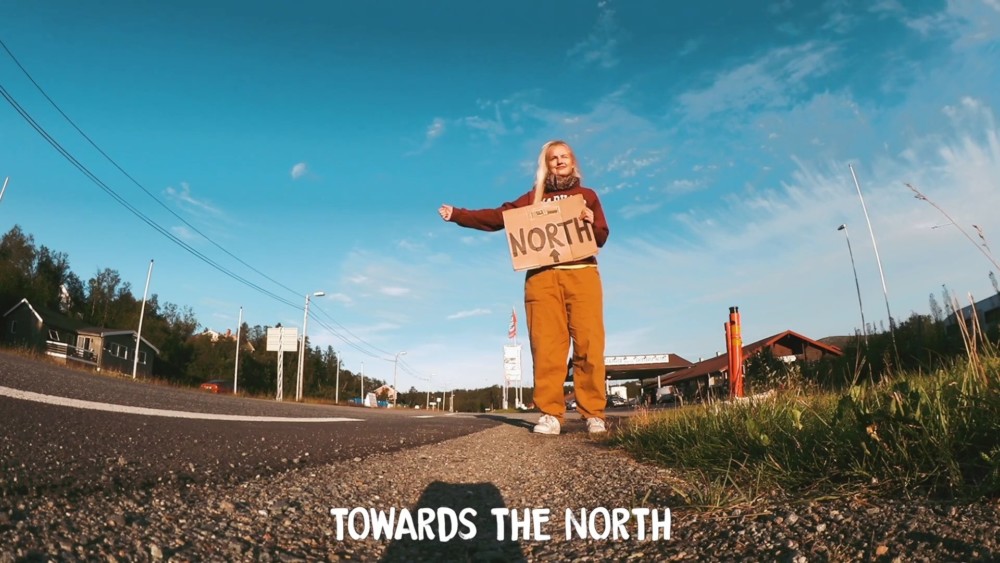
Nach 7 Tagen und 28 Autofahrten waren wir dann endlich da. Nicht als erste, aber das war Nebensache. Es war kalt, windig und neblig- eben so, wie man sich das Ende der Welt vorstellt. Aber dieses Gefühl, als wir ankamen kann man einfach nicht beschreiben.
Es war ein Mix aus Glücksgefühlen, Freude, Erleichterung und Ungebundenheit.
Wir waren am Ziel und der zurückgelegte Weg war unser Abenteuer. Wir haben Menschen getroffen, denen wir nie begegnet wären, Orte gesehen, von denen wir nie geträumt haben und unzählige magische Momente erlebt.
Wir hatten unser Ende der Welt erreicht, doch für mich war es zudem der Anfang einer neuen Herausforderung: 2600km Rückweg. Alleine per Anhalter durch Norwegen. (Fortsetzung folgt.)
After 7 days and 28 car trips we were finally there. Not first, but that was a minor matter. It was cold, windy and foggy just as you imagine the end of the world would be like. But this feeling when we arrived can not be described.
It was a mix of happiness, joy, relief and freedom.
We made it and the journey was our adventure. We met people we would have never met, seen places we would have never dreamed of and experienced countless magical moments.
We had reached our end of the world, but for me it was also the beginning of a new challenge: 2600km way back. Hitchhiking by myself through Norway. (To be continued).
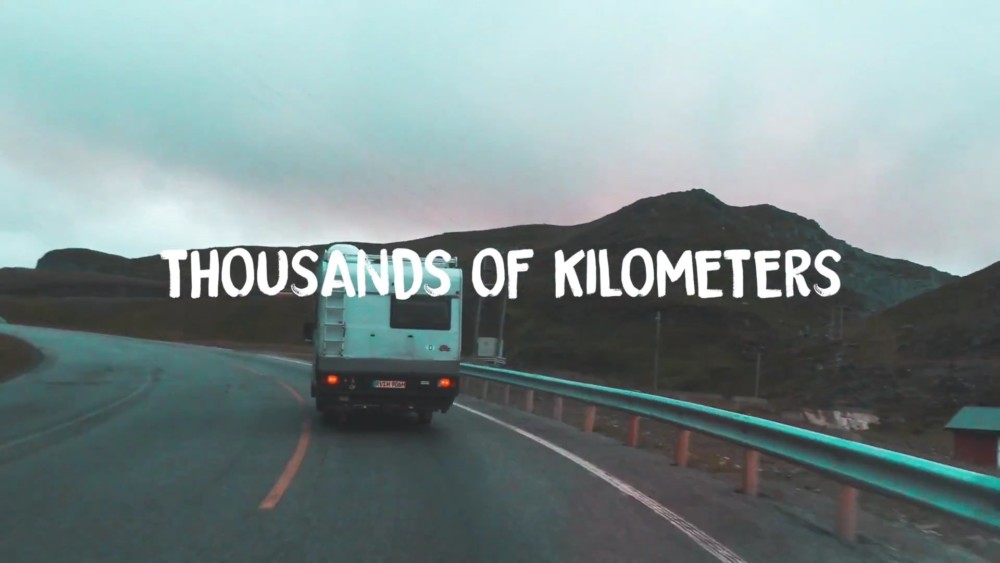
Viele verstehen nicht, wie man per Anhalter reisen kann. Aber wenn man erstmal da draußen steht und das erste Auto anhält, dann ist trampen viel mehr als nur stundenlanges Warten und die ganze Zeit im Auto sitzen.
Was den Trip so unvergesslich gemacht hat? Die kleinen Dinge, die unterwegs die großen Glückmomente wurden und die das lange Warten vergessen lassen haben.
Es ist einfach ein schönes Gefühl beim Trampen, dass direkt ohne langes Nachdenken ein gegenseitiges Vertrauen da ist.
Der Trip war echt kein Zuckerschlecken, man weiß nicht wo man pennt, wann man das nächste mal duschen kann, ob man in der Nacht erfriert oder wann es mal kein Dosenessen zum Abend gibt. Aber wenn dann irgendwann dieser kleine magische Moment kommt, der alles andere um einen herum vergessen lässt und man einfach so dankbar für das ist, was man hat und dieses Glücksgefühl ist einfach unbeschreiblich.
Many do not understand why people would hitchhike. But once you get out there and the first car stops, hitchhiking is much more than just waiting for hours and sitting in the car all the time.
What made the trip so memorable? The little things that became the big moments of happiness on the way and which made us forget the long wait.
It is just a nice feeling that there is a direct mutual trust without much thought between the driver and oneself.
The trip was really tough: We did not know where to sleep, when we are able to shower the next time, were freezing during the night and had a lot of of instant noodles. But at some point comes that little magical moment that makes you forget everything around you and you’re just so thankful for what you have and that happiness is simply indescribable.
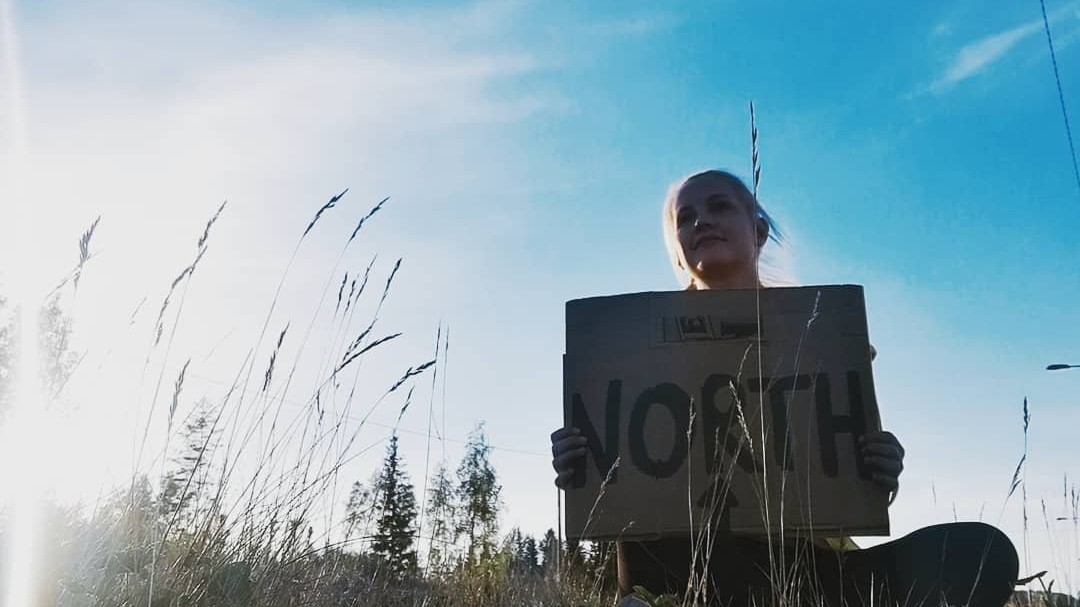
Wir waren zu 100% auf die Hilfe fremder Menschen angewiesen. Mit einem Zelt und einer Menge Instantnudeln im Gepäck haben wir nicht nur den Norden, sondern auch uns selbst entdeckt.
Nach 7 Tagen und der Hilfe von 28 Autofahrern hatten wir es endlich geschafft und unser ernanntes Ende der Welt erreicht. Es war kalt, windig und neblig- eben so, wie man sich das Ende der Welt vorstellt. Aber wir hatten uns und eine Menge Geschichten, die erzählt werden mussten.
Per Anhalter zu reisen ist eine sehr eigene Art des Reisens und verlangt einem eine Menge an Geduld und ruhigen Nerven ab. Aber noch nie zuvor habe ich mich so frei gefühlt.
Man trifft Menschen, die man nie treffen würde. Man sieht Orte, die man nie erreichen würde, man schließt Freundschaften, die nie entstanden wären und vor allem, wird man Teil vieler kleiner Reisen und schreibt seine eigene große verrückte Geschichte.
We were 100% dependent on the help of strangers. With a tent and a lot of instant noodles in our luggage, we discovered not only the North but also ourselves.
After 7 days and the help of 28 drivers we finally made it and reached our designated end of the world. It was cold, windy and foggy just as you imagine the end of the world. But we had each other and a lot of stories that needed to be told.
Hitchhiking is a very special way of traveling and requires a lot of patience and calm nerves. But never before have I felt so free.
You meet people you would never meet. You see places you would never reach, you make friendships that would never come up, and most of all, you become part of many small trips and write your own big crazy story.
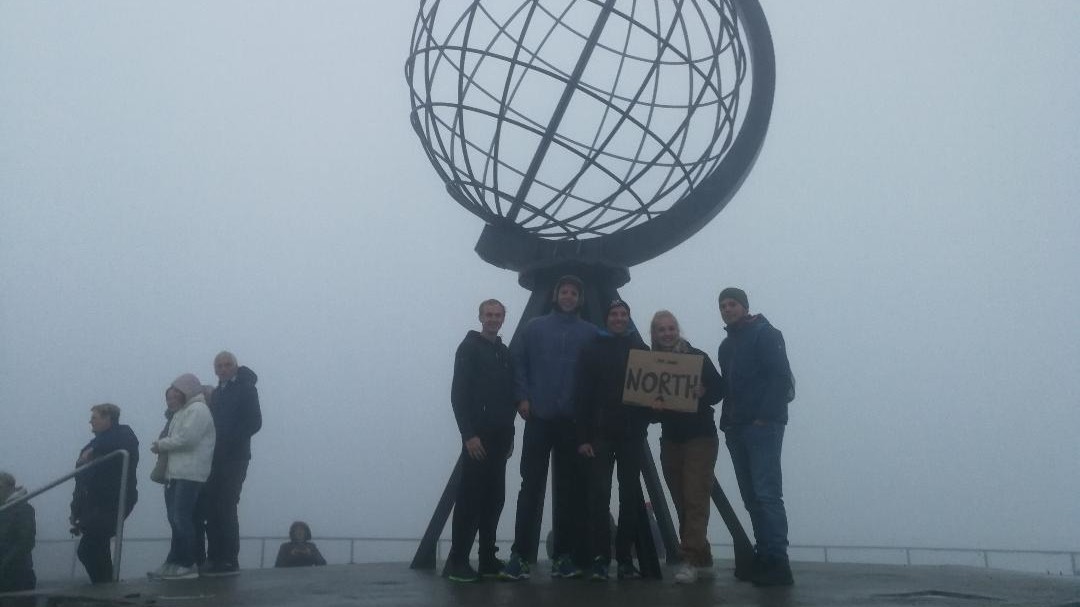
Why I love Prenzlauer Berg in Berlin #12
DEUTSCH
Guten Morgen! Ich befinde mich in einem Ortsteil von Berlin, der bekannt ist für: teuren Kaffee, Bioläden, Mütter mit Kinderwagen und veganen Hipstern.
Willkommen im Prenzlauer Berg!
Was aber viel mehr Aufmerksamkeit bekommen sollte, ist die künstlerische Freiheit, die hier gelebt wird. Die Menschen, die hier leben sind voller Lebensfreude, haben kreative Talente und teilen das mit allen um sich herum.
Musik, Streetart, Fashion, Malerei, Architektur, Literatur.
An jeder Ecke, gibt es neues zu entdecken.
Prenzlauer Berg ist zwar nur ein Ortsteil von vielen in Berlin, nimmt aber mit über 160k Einwohnern die Dimension einer eigenen Großstadt an. Woow!
Und jeder drückt hier eigentlich dasselbe auf seine eigene Art und Weise aus: dass man frei sein will, in dem was man tut und denkt.
Und das alles verbindet!
Aber wo ist er denn nun, der Berg? Genau hier. Aus den Trümmern des 2. Weltkrieges ist hier der Prenzlauer Berg entstanden.
Und das tolle am Prenzlauer Berg, sind nicht die teuren Kaffees oder Bioläden sondern die Vorstellung, dass mal ein Haufen aus Asche und Schutt zu einem Ort der Erholung und dem Ausgangspunkt für eines der schönsten Szeneviertel in Berlin geworden ist.
Das ist so unglaublich!
Und wenn man im Prenzlauer Berg die Straßen entlang läuft, dann merkt man schnell, hier gibt’s mehr als nur teuren Kaffee.
ENGLISH
Good Morning! Today I’m in a part of Berlin that is known for its expensive coffee, organic grocery stores, mothers with strollers and vegan hipsters.
Welcome to Prenzlauer Berg!
But what actually should get more attention is the artistic freedom you can find here. The people who live here enjoy life. They have creative talents and share their creativity with everyone.
Music, street art, fashion, painting, architecture, literature.
There is always something to discover.
It’s true that Prenzlauer Berg is only a small part of Berlin, but with a population of more than 160k the district can be considered a big city. Woow!
And everyone tries to express the same thing: in their own way: to have the power to do and think whatever you want.
And that brings us together!
But where is the (Prenzel) hill? Right there. The Prenzel hill consists of the rubble from World War II.
And the great thing about Prenzlauer Berg, is not the expensive cafés or organic grocery stores but the fact that a rubble hill transformed into a green park and became the origin of one of the most trendy neighbourhoods in Berlin.
That’s so unbelievable!
And if you ever stroll around in Prenzlauer Berg, you will realize: there’s more than just expensive coffee.
It took me 12 years to become Travel Video Creator
Don’t worry, one day you’ll figure it out. I figured it out after 12 freaking years.
“If you don’t do what you love, you have two choices: Change what you do or change what you love.”
Where this journey will take me? I don’t know. Nobody knows where they will end up.
IF NE NEVER TRY
WE'LL NEVER KNOW
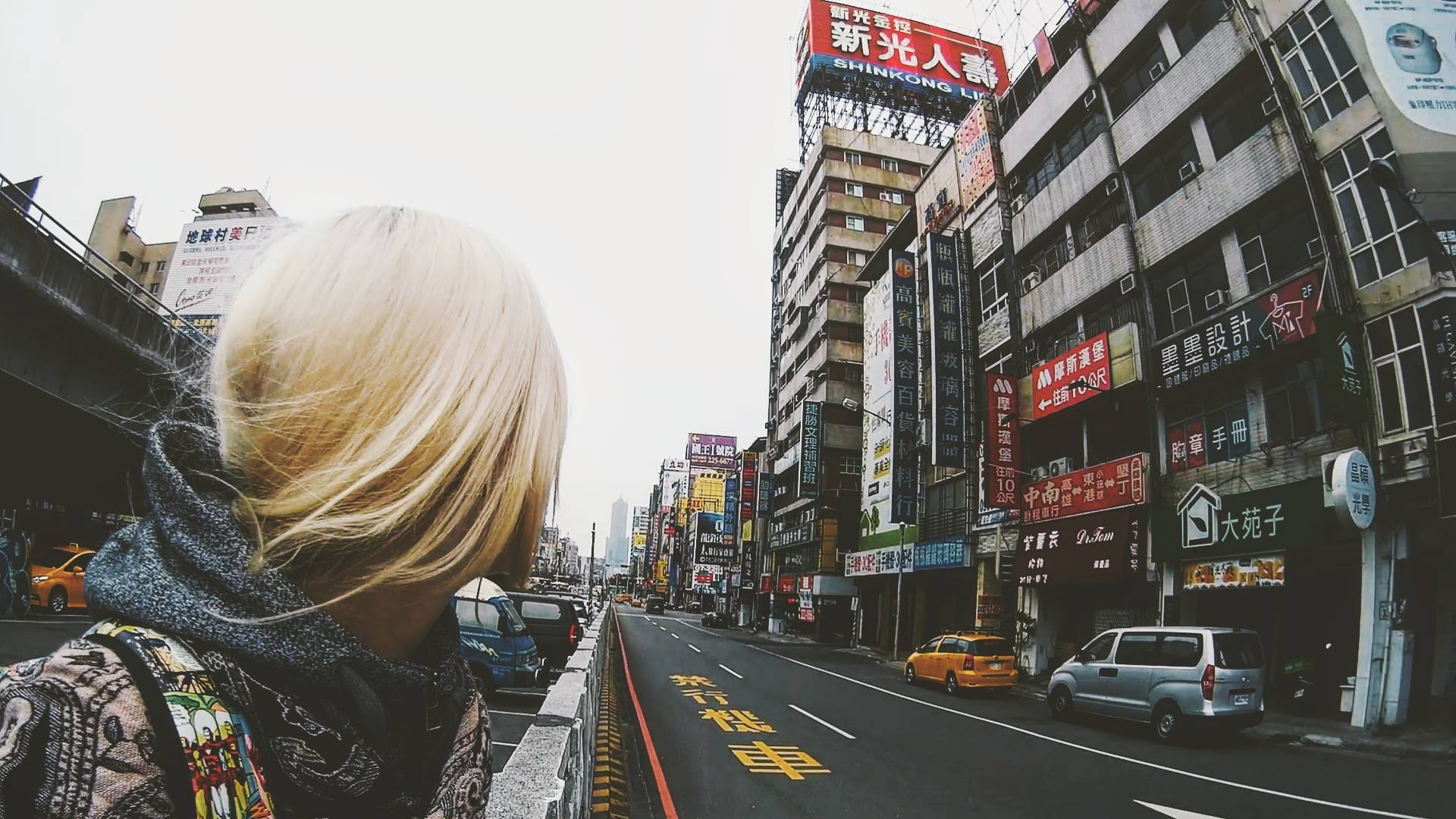
14 Reasons Why The Philippines is the Best Place for Digital Nomads
Previously, I wrote about the things that I only did while living on the Philippines. Now, it’s time to talk about why the Philippines is not only one of the best places in general but especially for working remotely as a digital nomad.
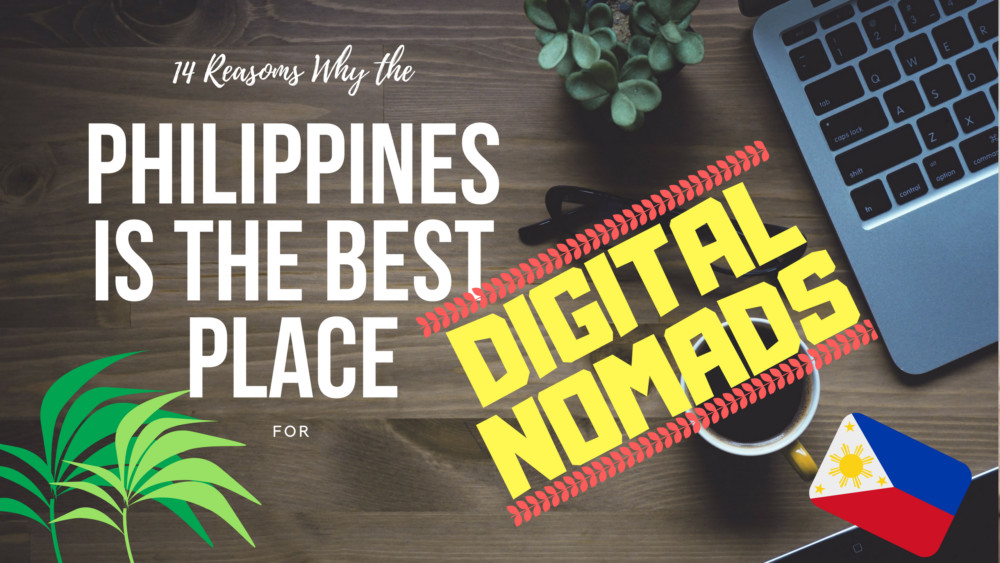
Affordable cost of living
The Philippines is such an affordable place to live in. There are apartments, dorms, and even condos, everywhere that cater to different types of budget. You can even rent a condo with resort-like facilities that do not cost as much as those in other countries.
Also, most things, including supplies and services, would also cost less in the Philippines. However, in some cases, it could also mean that you are going to get lower quality, but not all the time. Most expats would agree as well that dining in the Philippines is very affordable. You can already get a decent and filling meal for just $3 or less.
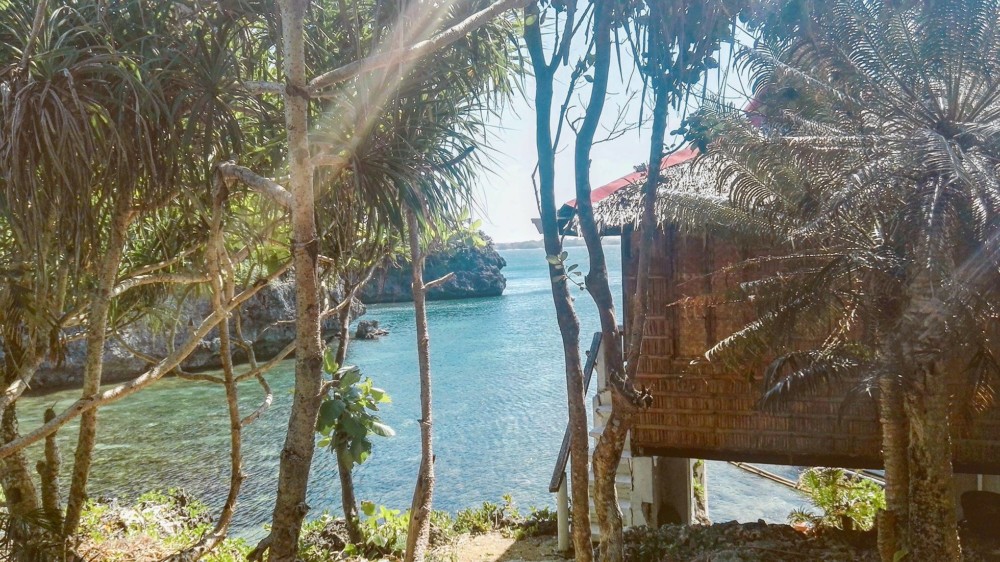
Fast Wi-Fi, air-conditioned Internet Cafés and modern shopping malls
You’ll be surprised how developed the Philippines are in many parts of the country. While there are a lot of local restaurants and small shops to explore you’ll also be able to work focused in an internet café or a calm coffee place with reliable internet in a shopping mall or coworking space. Surely small islands and remote villages rarely have access to Wi-Fi or even electricity, but I would spare those destinations for an offline weekend trip! 🙂
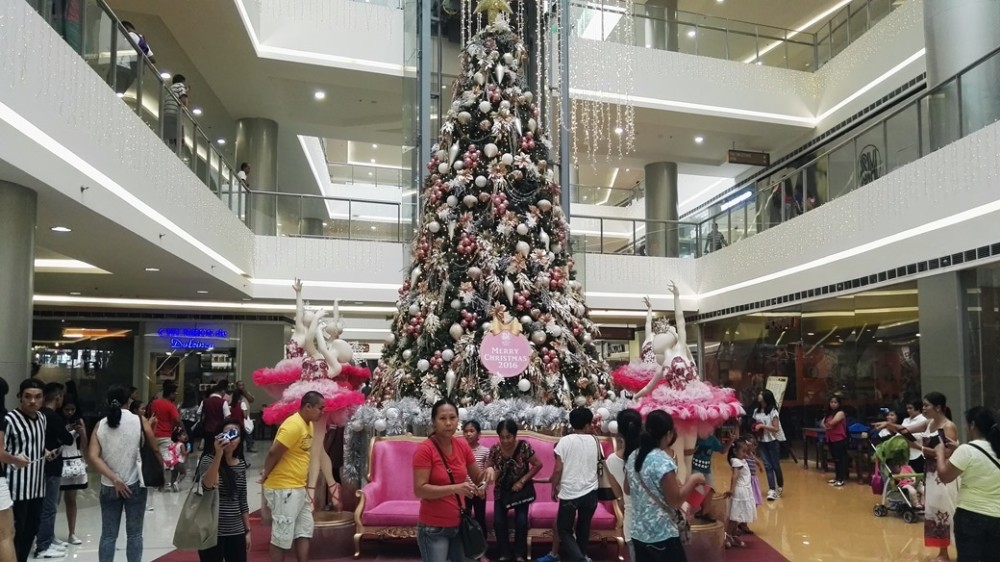
Growing Digital Nomad Community and Coworking Spaces
Especially in bigger cities like Manila, Cebu, Davao City and Iloilo City you’ll find a lot of coworking spaces and like-minded people to share your ideas with. It might still be a more unexplored country for the digital nomad community but if you prefer being one of the people that’d like to influence the digital nomad evolution from the beginning – that’s your place!
Everyone speaks English
Sometimes it can be really frustrating not to be able to share ideas and connect with locals due to language barriers. The good thing is that one of the national languages of the Philippines (beside Tagalog and the “island languages”) is English and everyone understands (at least the basics) what you are trying to tell them. It’s a good feeling and makes it much easier to fit in and establish friendships with Filipinos.
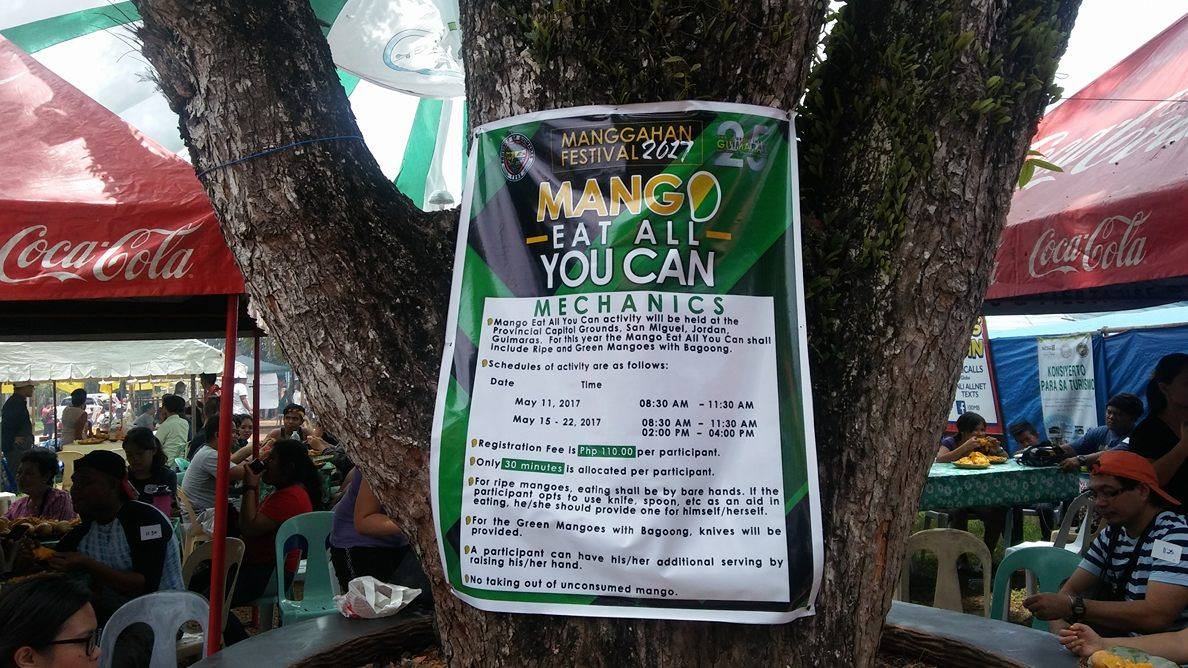
Traveling around the country is cheap
Traveling around this Southeast Asian country is very cheap as well. The rates on air travel are very affordable, plus there are often seat sales that would cost less than $20 for a round trip flight. However, these seats sell out very quickly as a lot of people would look out for it as soon as the sale is announced, so you need to act quickly too! Sea travel are also often cheap, even without promos, at around $10-$20, depending on the shipping line and destination.
There are a lot of decent hotels and resorts that are also very cheap, especially in the provincial, non-commercialized areas. For less than $50, you can stay at a resort with a great view and a swimming pool. There are also nice hotels in the cities that would cost as cheap as $10. Just make sure you check the reviews online first before booking, so you get the quality service that you expect.
Tours are also quite affordable in the Philippines. For example, in Cebu, you can rent a boat for island hopping at only around $40. This would usually accommodate 10-20 people. In Siargao, you can go island hopping with a bunch of other tourists for less than $30 per person. And that already comes with food and beverages. While tour guides may charge foreign tourists a higher price than what they charge locals in some places, it still does not really cost much, plus, you can haggle your way through it.
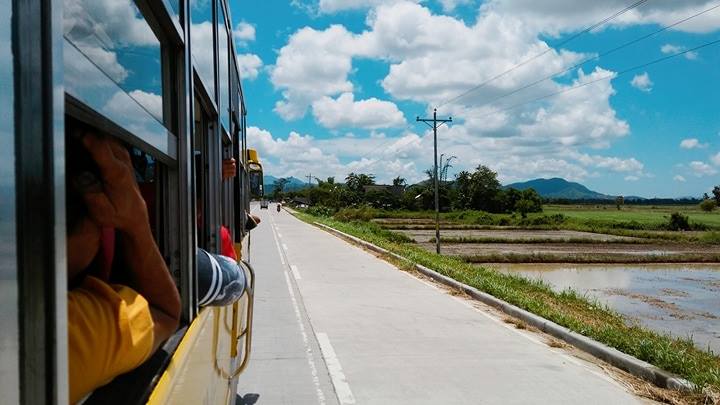
Beaches, beaches everywhere
With more than 7,000 islands, the Philippines is the homes to plenty of beaches. While there are commercialized beaches like the White Beach in Boracay and Alona Beach in Panglao, there are also many more secluded beaches scattered all over the country. Some may be more challenging to access, but they are surely worth the effort. There’s nothing better than having the whole beach to yourself, right?
The Philippines also boasts of its many pristine white sand beaches and clear, turquoise waters. However, the country also has several brown and black sand beaches, if you want to try something else. Plus, the marine life is vibrant and so diverse, which would make snorkeling or diving a great idea if you’re exploring the country’s different islands.
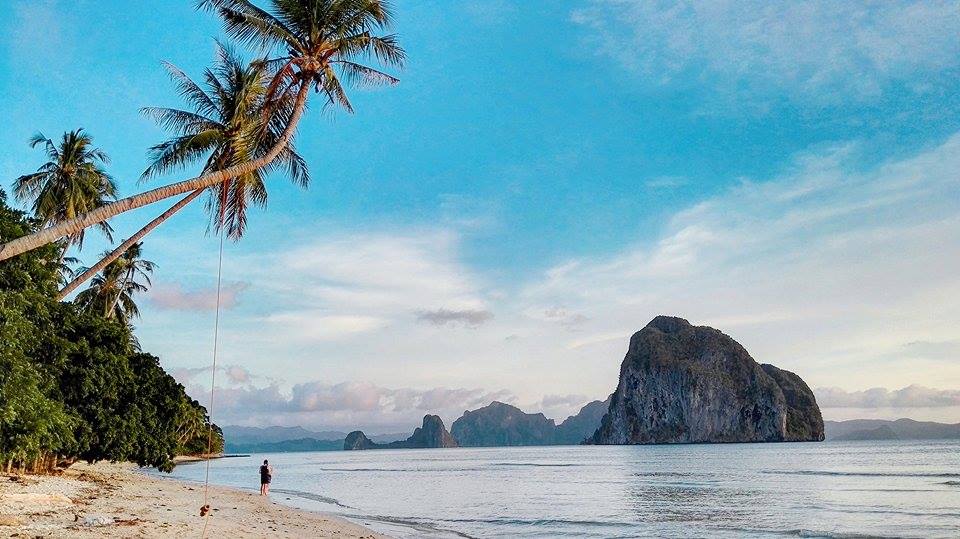
Tons of picturesque views and stunning landscapes
This beautiful country has hundreds of natural wonders that would be the perfect subjects for photography, whether you’re an expert or are just trying to learn the craft. From picture-perfect beaches to stunning vistas, to underwater life, to huge surfing waves, to limestone cliffs- the Philippines’ natural beauty never fails to wow anyone and there will always be enough content for your blog and instagram.
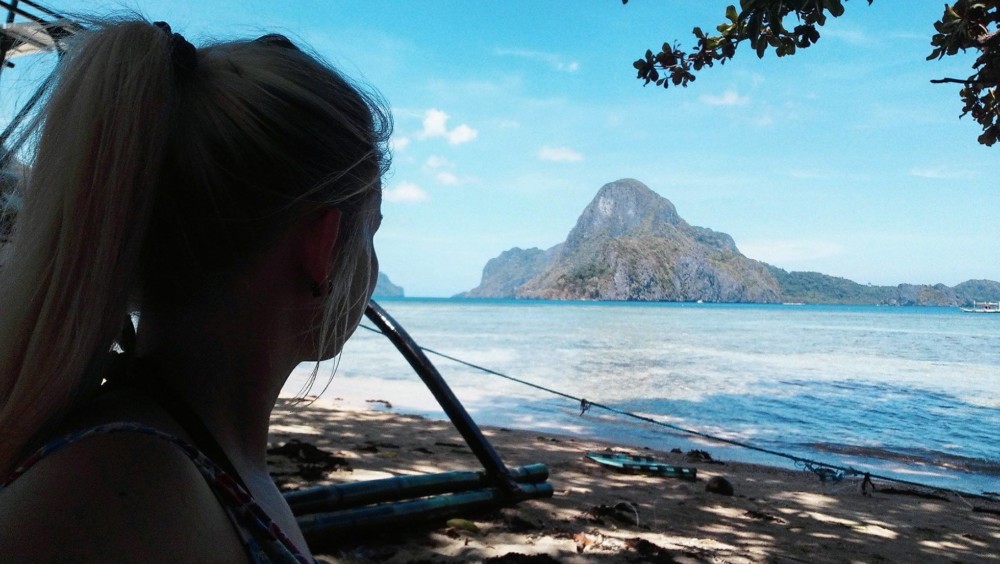
Lively and vibrant festivals
As mentioned earlier, the Philippines has over 7,000 islands. It also has over a hundred cities and 81 provinces, and each of these has their own festivals or “fiestas” as the locals call it. Every month, there is a festival happening somewhere. Attending a festival is a great way to immerse oneself in the Filipino culture and history.
Some of the most popular festivals that should not be missed include the Ati-Atihan in Aklan, Panagbenga in Baguio, Sinulog in Cebu, MassKara in Bacolod, Kadayawan in Davao, Dinagyang in Iloilo, and the Moriones in Marinduque.
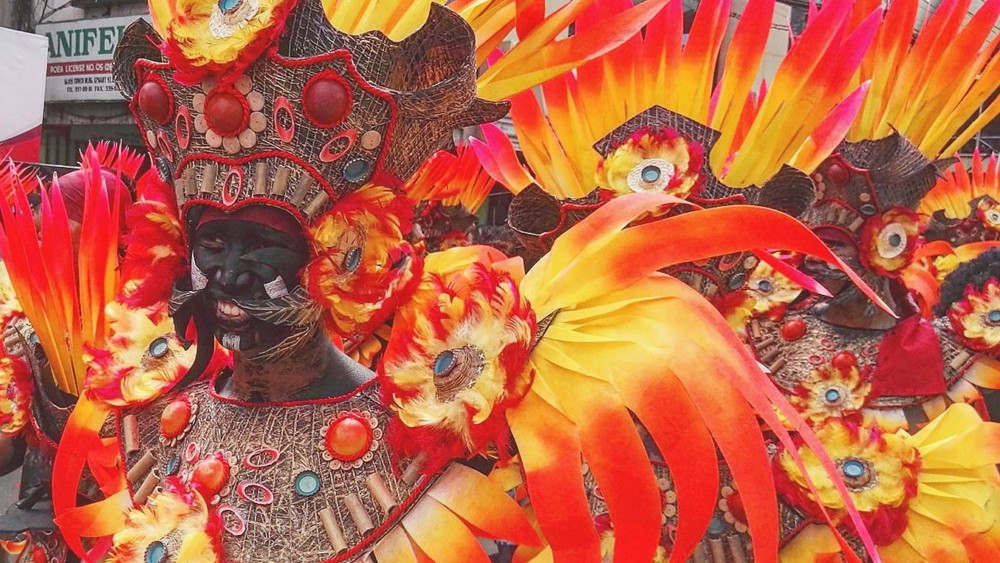
Cheap beers and bars for socializing
If you have read up about the Philippines in the past, you would have noticed that most tourists would say that the beer is very cheap in the country. Well, that’s just the truth. Sometimes, it can even be cheaper than water or juice, especially in restaurants and bars! Even a bucket of beer, which has about 4 to 6 bottles, would cost less than $4. While you may skip on alcoholic beverages when you’re visiting other countries as these would hurt your budget, getting yourself a bottle while in the Philippines would feel like you didn’t even spend at all.
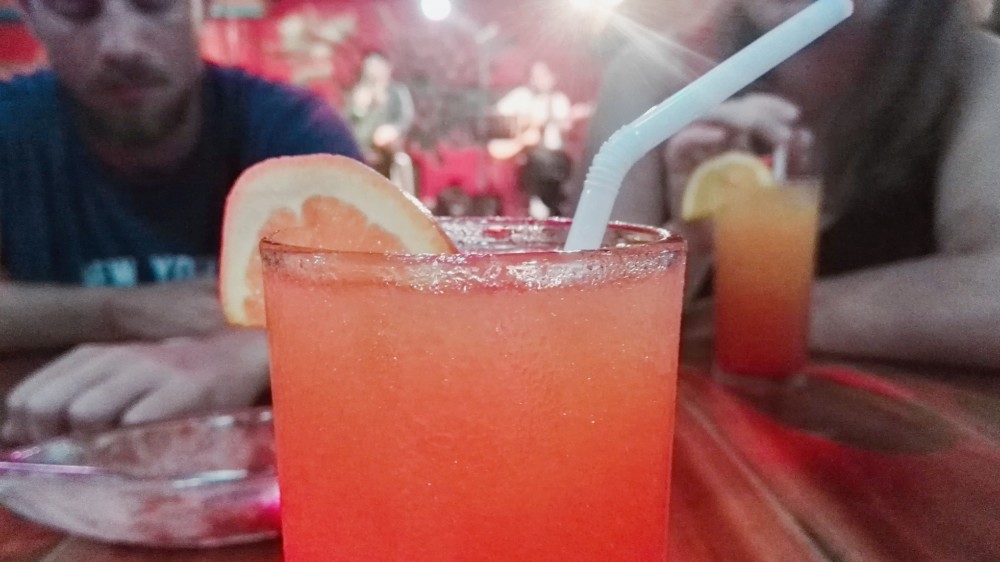
It’s summer all year round
One of the best things about living in the Philippines is that it’s summer all year round. The weather is always just around 20-30°C, and it’s mostly sunny, except for when storms come in. While there are cold climate areas in the country that would require you to wear jackets, like Baguio City, you are more likely to wear a t-shirt and a pair of shorts in most parts. That’s a very attractive thing for digital nomads and one of the reasons why working remotely is so popular on the Philippines for foreigners.
Accessibility to fresh fruits and healthy meals
The Philippines is a heaven of fresh tropical fruits, just like mangoes, bananas, papayas, guavas, pineapples, watermelons, and many more. What’s even better is that these are available all year round and are often very affordable. As the Filipino cuisine offers a lot of “unhealthy” fried meals there are also a lot of healthy choices. Visit the food markets and you will leave with your bag filled with avocados, bananas, vegetables and fresh fish.
BBQ and Food Markets everywhere
You won’t even have to worry about going hungry when you start to live in the Philippines because there’s affordable and delicious food everywhere, especially barbecue for the meat lovers! It’s literally everywhere. You can choose from different types of meats like pork, chicken, and fish, and there are even barbecued pork blood and chicken intestines. While it doesn’t sound that pleasant, it is actually pretty good and flavorful!
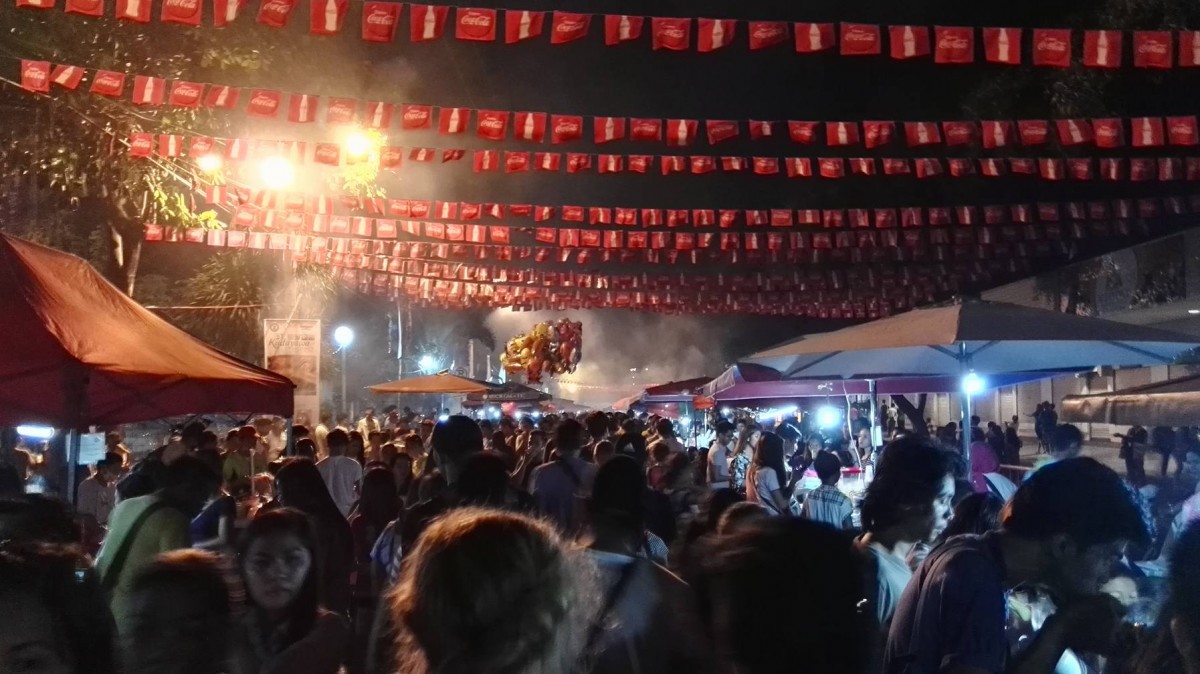
Filipinos love for Music and Karaoke
Filipinos also have a great love for music, hence the karaoke bars everywhere! It’s also the home to some of the world’s amazing singers! You can be sure that you’ll have a ton of additional friends after a karaoke night out.
The people
Lastly, the best thing about living in the Philippines are the people. Filipinos are naturally so friendly and hospitable. They always have a smile on their faces no matter what they are going through. Even those who have dire living situations still laugh and are usually very easy going. They would gladly provide you assistance when you need help and are often very respectful.
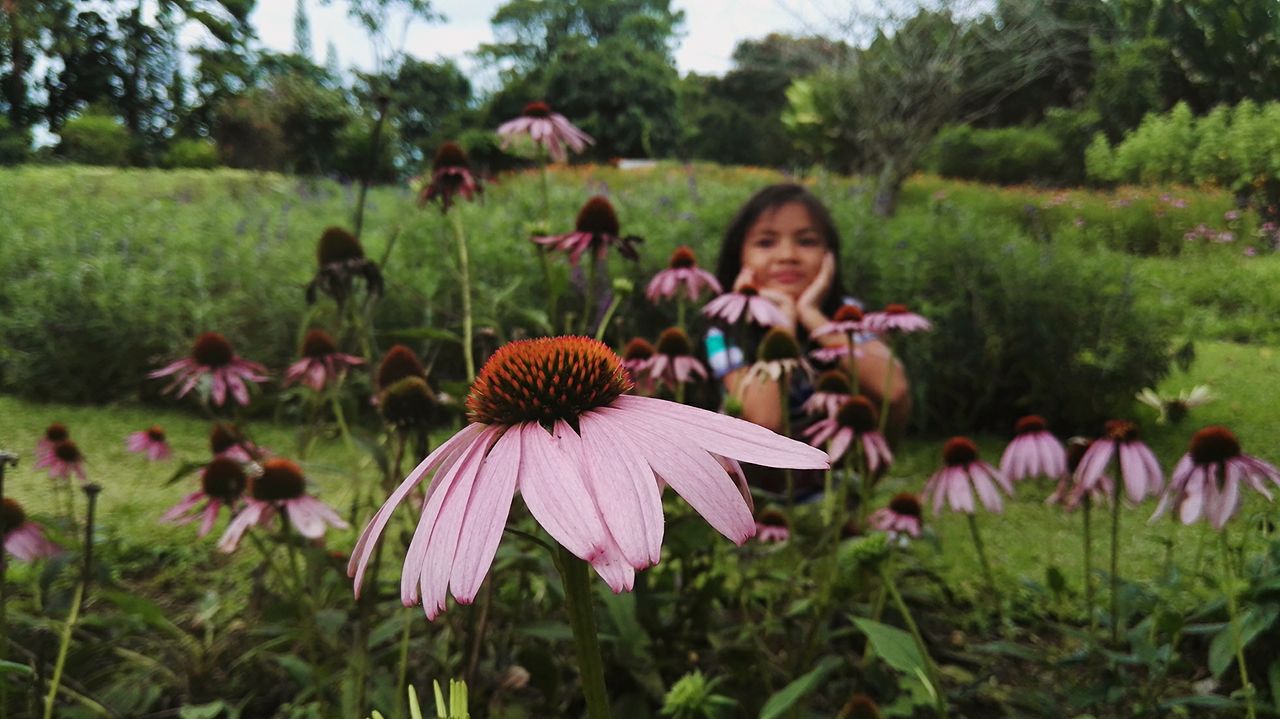
Das erste Mal Trampen: Vorbereitung und Tipps
Wer das Leben spüren und etwas Verrücktes wagen will, der trampt. Es gibt keinen besseren Weg, dem Alltag zu entfliehen und sich so auf ein kleines Abenteuer zu begeben.
Auch wenn viele der Meinung sind, dass Trampen etwas spontanes ist, gilt nichts über die Sicherheit.
Sich vorzubereiten bedeutet, sich zu kümmern (um sich selbst und den anstehenden Trip) und dafür zu sorgen, dass das Trampen als positive und sichere Reiseform in Erinnerung bleibt.
Trampen baut nicht nur auf das Vertrauen eines anderen Fahrers auf, sondern auch auf Vertrauen in sich selbst. Mit einer guten und gründlichen Vorbereitung, kann jeder dieses Vertrauen aufbauen und dadurch Unsicherheiten ablegen.
Ich trampe seit 2015 und bin seitdem bereits in Südostasien und durch Europa (z.B. nach Istanbul) getrampt, zu zweit und auch alleine und konnte aus meinen vergangenen Trips viele Erfahrungen sammeln, die ich in diesem Artikel zusammengefasst habe.
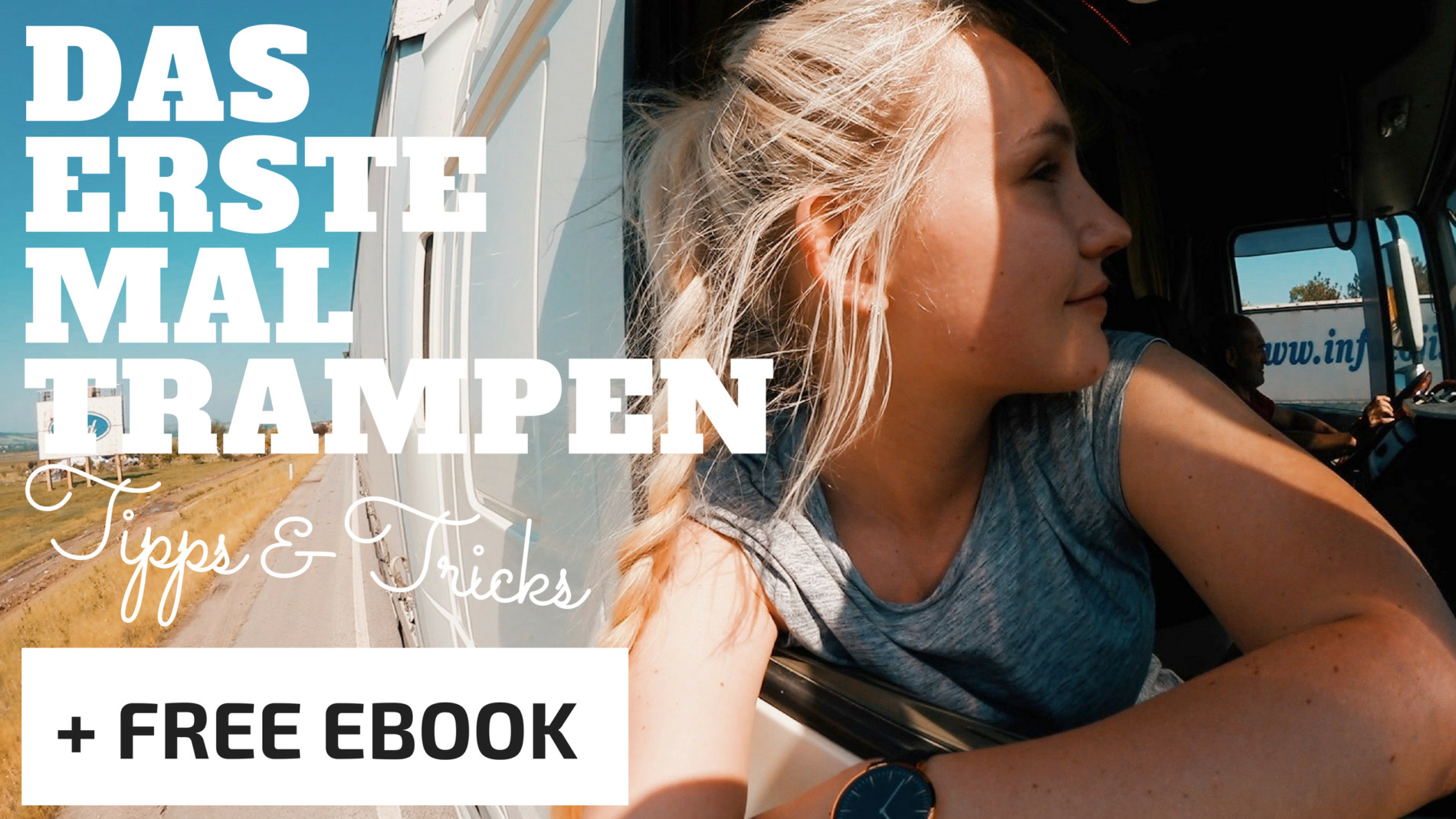
Trampen ist nicht mehr so allgegenwärtig, wie noch vor ein paar Jahrzehnten und daher sollte man sich mit dem Thema etwas näher beschäftigen und sich einigen Sachen bewusst sein.
Aus dem Grund habe ich einen Mega-Artikel zum Thema Trampen und der damit verbundenen Vorbereitung verfasst.
Viel Spaß beim Lesen.
1. Ein geeignetes Ziel festlegen
Nicht jeder Ort eignet sich als Ziel beim Trampen.
Hat man zum Beispiel nur eine begrenzte Zeit zum Trampen oder gibt es spezielle Sicherheitshinweise, sollte man sich über das Ziel im Vorhinein bewusst sein.
Auch wenn sich einige Tramper einfach ohne Ziel an den Straßenrand stellen und den Daumen rausstrecken, sollten sich Anfänger in jedem Fall ein bestimmtes Ziel setzen und sich dementsprechend vorbereiten.
Dadurch können Unsicherheiten und damit verbundene Risiken verringert werden.
Die folgenden Leitfragen helfen dabei, den richtigen Ort als Endstation festzulegen:
- Wie viel Zeit habe ich?
- Wo ist mein Startpunkt?
- Wie hoch ist mein Budget?
- Welches Wetter wünsche ich mir?
- Traue ich mich in fremde Kulturen?
- Will ich das eigene Land verlassen?
- Gibt es Orte, die ich (nicht) unbedingt sehen möchte?
- Ist mein Zielort sicher?
- Benötige ich ein Visum/ist mein Pass noch gültig?
- Worin liegt meine Hauptmotivation zum Trampen/Welche Prioritäten habe ich?
- Trampe ich alleine oder zu zweit?
Auch wenn man meistens bereits weiß ,wo es hingehen soll, macht es Sinn, diese Liste einmal durchzugehen und zu prüfen, ob man bereit ist dorthin zu trampen. Die Antworten notiert man sich dann und sucht dementsprechend ein Ziel aus.
Google Maps
Danach schaut man bei Google Maps, dass das Ziel innerhalb der vorgegeben Zeit zu erreichen ist (inkl. Zeitpuffer) und lässt sich die Strecke generieren.
Das tolle an Google Maps ist, dass die Karte auch offline funktioniert (man muss vorher die Karte im WLAN laden) und dank GPS den Standort anzeigt (super praktisch beim Trampen).
Als gut erwiesene Regel gilt: Die Fahrtzeit von Google Maps mit 3 mulitplizieren (damit man genug Puffer hat) und kontrollieren, ob die Zeit innerhalb der Sonnenstunden des Tages liegt. Dann sollte die Strecke vor Sonnenuntergang machbar sein.
Dabei sollte man auch darauf achten, ob in den Ländern das Trampen legal ist und wie die Autofahrer generell zu Trampern stehen (Taiwan ist zum Beispiel eins der sichersten und einfachsten Länder zum Trampen – zum Erfahrungsbericht).
Man sollte zudem immer extra früh aufstehen, um genügend Zeit für das Besorgen der Pappe, ein Frühstück und das Auffinden des richtigen Spots zu haben. Es ist immer besser früher aufzustehen, als später anzukommen. Außerdem sollte man mehr Zeit einplanen, wenn man aus einer Großstadt raustrampt.
Hat man sein Zielort festgelegt, geht es weiter mit der Recherche.
2. Eine Route und Zwischenstopps bestimmen
Das allerwichtigste bevor man sich in sein Abenteuer begibt, ist die Sammlung von Informationen.
Wie soll man also eine Route planen, wenn man nicht wirklich weiß wo man am Ende des Tages landet?
Google Maps.
Jeder hat schon einmal Google Maps benutzt. Allerdings wissen nur wenige, wie man das Tool RICHTIG und effizient nutzt.
Im Nachfolgenden erkläre ich Schritt für Schritt, wie man mit Google Maps eine exakte Route im Vorfeld bestimmen kann.
Die Vorgehensweise ist sehr simpel.
Zunächst schaut man sich die Karte an und gibt Anfangs- und Endpunkt ein. Google berechnet dann automatisch die schnellste Route zwischen den beiden Punkten.
Je nachdem, ob man bestimmte, abweichende Zwischenstopps einlegen möchte, fügt man beliebig viele Reiseziele hinzu.
Nun kommt der wichtige Teil, um die genaue Route zu ermitteln.
Trampen ist etwas spontanes und unvorhersehbares. Man weiß nie, wie lange man warten muss.
Es gibt allerdings zwei Regeln, die sich bisher immer bewahrt haben: Man braucht nie länger als die dreifache Zeit, die von Google berechnet wurde UND man wird immer irgendwie mitgenommen.
So berechnet man also eine Route, die höchstwahrscheinlich realisierbar sein wird:
- Man bestimmt, wie viel Zeit man maximal pro Tag zum Trampen nutzen will
- Diese Zeit dividiert man dann durch 3
- Dann sucht man sich bei Google Maps eine Strecke aus, die innerhalb dieser Zeit erreichbar ist und auf der Route liegt
- Für Grenzkontrollen sollte man immer mindestens 2h einplanen
Folgt man diesen Schritten, erhält man Zwischenstopps, die definitiv zu erreichen sind.
Hier ein kleines Beispiel:
Bsp.: Nürnberg – Ljubljana 6h Google-Fahrtdauer x 3= 18h Trampen
Wir sind also bei der Strecke extra früh aufgestanden, damit wir am selben Tag noch in Slowenien ankommen. Grenzkontrollen gibt es auf der Strecke nicht.
Während unserer gesamten Tramperfahrung haben wir niemals mehr als die dreifache Zeit benötigt und haben unser Zwischenziel IMMER vor Dunkelheit erreicht.
Das beste an Google Maps ist, dass die Karte auch offline funktioniert und dank GPS den Standort anzeigt. Somit kann man kontrollieren, ob der Fahrer auch in die richtige Richtung fährt oder nachschauen, wo man sich gerade befindet (falls man komplett die Orientierung verloren hat).
Um die Karte offline nutzen zu können, muss man sie als App auf dem Handy installieren und im WLAN laden.
3. In Social Media vernetzen und recherchieren
Soziale Netwerke bieten den Vorteil, dass dort Gleichgesinnte sind, die das eigene Projekt unterstützen und persönliche Erfahrungen zu verschiedenen Strecken teilen, sowie hilfreiche Tipps weitergeben.
Facebook-Gruppen
Hier erhält man persönliche und meist wahrheitsgetreue Erfahrungsberichte von Trampern aus der ganzen Welt. Die Leute reagieren meist sehr offen und hilfsbereit, wenn man konkrete Fragen zu bestimmten Ländern stellt. Auch ist es möglich über verschiedene Gruppen einen Wegbegleiter für das nächste Abenteuer zu finden. Hier ein paar coole Gruppen:
- Hitchhiking Partners Worldwide
- NOMADS- a life of cheap/free travel
- Travelettes
- HitchGathering
- Hitchhiking Tribe – Nomads
- Hitchhiking Europe
Webseiten
Die wichtigsten Informationen findet man auch auf bekannten Internetseiten. Im Netz findet man zu jedem Land die wichtigsten Punkte bzgl. Landeskunde, Alternativrouten/ den besten Spots und wichtige Adressen/ Telefonnummern. Folgende Seiten sind sehr nützlich für die Vorbereitung:
4. Unterkünfte planen
Es gibt hauptsächlich 5 verschiedene Möglichkeiten, irgendwo unterzukommen und die Nacht zu verbringen:
1. Hotel/ Hostel
+ Bequemste Art der Unterkunft, sicher und (meistens) sauber
– Kostenintensiv, bei spontanen Trips kann es passieren, dass man nicht rechtzeitig ankommt
2. Airbnb
+ Man lernt Leute kennen, günstigere Alternative zum Hotel, Einblick in einzigartige Unterkünfte von Einheimischen
– mittlere Kosten
Hier geht’s zum 30€ Airbnb-Gutschein
3. Couchsurfing
+ Man lernt definitiv verrückte und hilfsbereite Menschen kennen, es ist kostenlos (man sollte aber ein Gastgeschenk dabei haben), kann spontan organisiert werden
– nicht jeder fühlt sich bei “Fremden” wohl, man sollte offen sein, Zeit mit dem Host einplanen und sich ausführlich über den Host informieren
4. Zelt/Hammock
+ spontane Unterkunft jeder Zeit möglich, flexibel, kostengünstig
– man muss es die ganze Zeit tragen, zelten ist nicht überall legal (man muss sich gut verstecken oder Geld für einen Zeltplatz einplanen)
5. Draußen schlafen (z.B. am Strand)
+ man braucht nur einen Schlafsack, hat freie Entscheidungsgewalt, Nähe zur Natur
– ggf. unbequem, laut, nass etc., kann unter Umständen gefährlich sein
6. Risiken und Hilfsmaßnahmen kennen
Auch das Trampen verbirgt einige Risiken, die man einfach kennen und zu vermindern wissen sollte. Hier eine kleine Zusammenfassung:
Sexuelle Übergriffe
- Sei selbstbewusst und lache nicht bei jeder Kleinigkeit
- Rede mit dem Fahrer und baue eine freundschaftliche Verbindung auf
- Trage keine aufreizende Kleidung -> lange Hosen (auch bei warmem Wetter) und ggf. Kopfbedeckung in muslimischen Ländern
- Ab Abenddämmerung nicht mehr trampen
- Ggf. Pfefferspray dabei- und griffbereit haben
- Dem Fahrer signalisieren, dass Freunde und Bekannte Bescheid wissen und du diese noch heute treffen wirst
- Vom Ehepartner oder Beziehung erzählen
- Nicht bei mehreren Männern alleine ins Auto steigen
- Möglichst hinten einsteigen und nicht neben dem Fahrer / Distanz schaffen
Verkehr
- Niemals auf der Autobahn stehen / die Autobahn überqueren/ am Seitenrand stehen
- Fahrer nicht unnötig ablenken/ keine Fotos mit dem Fahrer machen
- An Stellen stehen, wo Autofahrer genügend Platz zum Anhalten haben (z.B. Bushaltestellen oder größere Auffahrten)
Diebstahl
- Das Gepäck nicht in den Kofferraum legen (falls doch: aussteigen und Autotür offen lassen während man das Gepäck aus dem Kofferraum holt)
- Während der Fahrt kein Geld rausholen und z.B. zählen
- Kameras/ Handy und Technik nur benutzen, wenn man sich sehr sicher fühlt
- Wertsachen (Geld, Kreditkarte und Handy am Körper verstauen)
- zweites “fake” Portemonnaie dabei haben
Sonstiges
- Nummernschild merken und an Bekannte schicken
- Freunde und Familie stets informieren, wo man sich gerade befindet
- bei unsicheren Autofahrten: den Fahrer bitten, anzuhalten (Ausreden: Übelkeit oder man muss zur Toilette)
- Aussteigen, sobald man bemerkt, dass der Fahrer alkoholisiert ist oder im Rausch ist
- im Notfall: Schreien, Selbstverteidigung, Pfefferspray (nur im Stillstand), Autotür öffnen, Handbremse ziehen, Erbrechen vortäuschen, so tun als würde man wahnsinnig sein
5. Wetterbericht anschauen
Klingt selbstverständlich, aber mit Hilfe des Wetterberichts kann man nicht nur einschätzen wie erfolgreich der Tag verlaufen wird, sondern auch wie lange man unterwegs sein kann. Die Zeiten von Sonnenaufgang und -untergang können in verschiedenen Ländern erheblich variieren und somit kann man sich darauf vorbereiten, wie viele Sonnenstunden man zum Trampen hat.
Bei Regen ist es zudem schwieriger mitgenommen zu werden, denn Autofahrer haben durch den Regen eine schlechtere Sicht auf den Tramper, wollen keine nassen “Wesen” in ihr Auto einsteigen lassen und sind meistens misstrauischer oder wollen einfach nur ans Ziel.
6. Regeln festlegen
Egal, ob ma zu zweit oder alleine trampt: Man sollte sich klare Grenzen setzen und eigene Regeln aufstellen. Am besten überlegt man sich einige Kriterien, bei denen man z.B. nicht in ein Auto einsteigen würde oder ggf. auch wieder frühzeitig abgesetzt werden möchte. Besprecht Eure Regeln zu zweit und nehmt Rücksicht, wenn der andere kein gutes Bauchgefühl hat oder gebt euch gegenseitig Warnsignale.
Hier ein paar Beispiele, wie solche Regeln aussehen könnten:
- Beim Warten: Einer hält das Schild und der andere steht ein paar Meter weiter hinten beim Gepäck, alle halbe Stunde welchseln
- Bevor man in ein Auto einsteigt, gegenseitig abchecken, ob man ein gutes Gefühl hat. Wenn Einer unsicher ist, dann nicht einsteigen
- Gepäck nicht in den Kofferraum legen, wenn möglich
- Während der Fahrt gegenseitig Handsignale geben, dass man sich sicher fühlt
- Vorher entscheiden, wer vorne oder neben dem Fahrer sitzt
- kein Trampen bei Dunkelheit
- Nicht in Autos einsteigen, bei denen Männer in der Überzahl sind
- Kein Weiterfahren, wenn vom Fahrer Geld verlangt wird
Das ist eine Auswahl an Regeln, die natürlich verschärft oder abgeschwächt und angepasst werden können. Jeder hat eine andere Unsicherheitsgrenze und daher ist es wichtig, sich kurz zusammenzusetzen und mögliche Regeln zu besprechen, damit das Trampen für alle Beteiligten rücksichtsvoll und harmonisch abläuft 🙂
7. Das richtige Equipment einpacken (Tramper-Packliste)
Der letzte Schritt für die perfekte Vorbereitung ist, seinen Rucksack richtig zu packen. Hier kannst du nachlesen, was man dabei haben sollte und vor allem, was nicht (coming soon).
Das wichtigste ist, gut vorbereitet zu sein, seine Vorfreude nicht zu verlieren und sich nicht allzu viele Gedanken über die kommenden Tage zu machen.
Keine Vorbereitung der Welt kann in die Zukunft sehen! Meist kommt alles ganz anders und dann muss man einfach auf sein Bauchgefühl hören.
Viel Spaß beim Trampen,
Von München Nach Istanbul Per Anhalter Trampen im LKW
Im Bauch, Im Herz, Im Juli ist ein großartiger Film, der mich 2012 zum trampen inspiriert hat. Jetzt, 6 Jahre später, war es an der Zeit meine eigene Version in die Tat umzusetzen. Zwar ging es es nicht im Juli los, aber genau wie im Film, bis nach Istanbul über die Balkanroute.
Marika, die genauso in Istanbul verliebt ist wie ich, konnte ich schnell vom Trampen überzeugen und knappe 3 Wochen später ging es auch schon los.
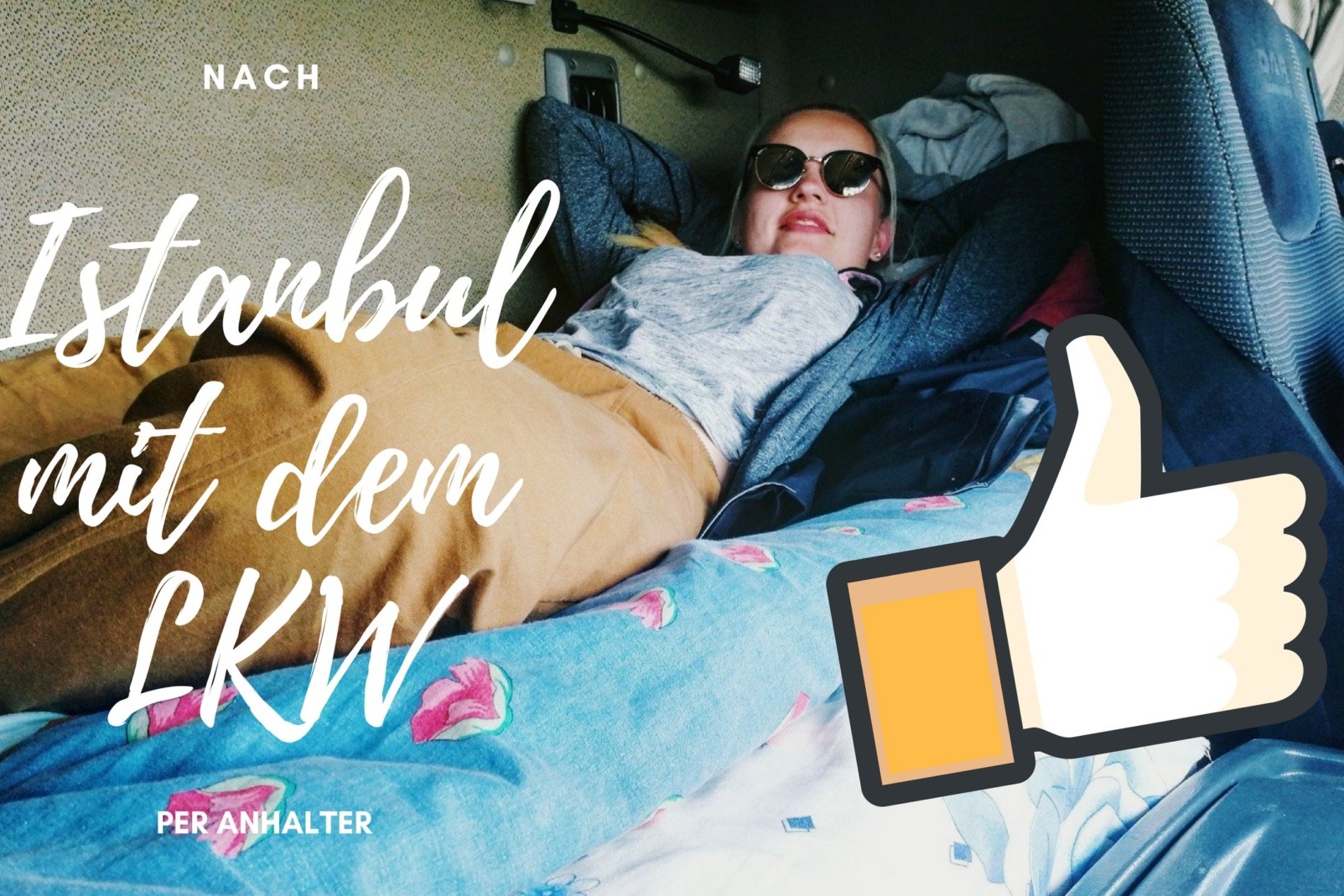
Der Plan
Rückflug gebucht, Hinreise per Anhalter. Ab München sollte es losgehen, über Österreich, Slowenien, Kroatien, Serbien und Bulgarien bis nach Istanbul. Um Visas und ähnliches mussten wir uns nicht kümmern (danke Europa) und große Vorbereitungen gab es eigentlich keine. Die Strecke haben wir mit Google Maps erstellt und damit einen groben Zeitplan entwickelt. 3 Tage hatten wir Zeit irgendwie nach Istanbul zu kommen.

Tag 1 München – Salzburg – Ljubljana–Zagreb (600km)
Der erste Tag sollte der schwerste und längste sein, also hieß es früh aufstehen, kurz einkaufen, Pappe besorgen und Richtung Autobahnauffahrt laufen.
Der perfekte Spot: eine Bushaltestelle mit genügend Platz für anfahrende Autos kurz vor der Autobahn. Gute 2h standen wir dort, immer abwechselnd das Schild haltend und tausende Autos fuhren an uns vorbei. Nur keiner wollte uns mitnehmen. Marika verabschiedete sich kurz hinter die Büsche und es war ja sonnenklar, dass genau dann ein Auto anhalten würde. Voller Freude Schrie ich Marika zu, dass sie ihr Geschäft vorzeitig abbrechen muss und rannten zu dem Auto. Ein Ehepaar aus Russland hieß uns in ihrem kleinen aber gemütlichen Auto willkommen, bot uns Schokolade und Erdbeeren an. Bis nach Salzburg ging es mit den beiden. Dann boten sie uns an, uns für 15 eur bis nach Graz mitzunehmen.
Beim Trampen weiß man nie, wie lange man warten muss und wie weit man es schafft. Hätten wir das Angebot annehmen sollen? Wir überlegten kurz, aber lehnten dankend ab und entschieden uns weiter zu trampen. Zum einen ging es uns nicht darum eine sichere Mitfahrgelegenheit zu haben und zum anderen wäre Graz zwar näher an unserem Endziel, aber dennoch ein Umweg und das Ehepaar war nicht grad das Schnellste.


Unsere Entscheidung hatte sich ausgezahlt, denn keine 30 Minuten später hielten die zwei Münchener Marcel und Shean an, die uns bis zu einer Rastatte kurz vor Ljubljana mitnahmen. Dort haben wir uns erstmal ne freshe Cola gegönnt und Pause gemacht. Die Schengenpolizei kontrollierte unsere Pässe und war leicht ermuntert über unseren Plan nach Istanbul zu trampen.
Das Problem an der Rastattte war, dass sie vor Ljubljana lag und wir eigentlich nach Zagreb wollten. Um 21 Uhren waren wir dort mit unserem Couchsurfing Host verabredet und es schien, als wollten alle Autos in die slowenische Hauptstadt fahren. Um 19 Uhr waren wir kurz davor, den Tag in Ljubljana zu beenden, doch ein Wunder: der kroatische Maden kam um die Ecke, hielt an und fuhr uns mit durchschnittlichen 130kmh ins Zentrum von Zagreb und so schafften wir es doch noch an unser Tagesendziel.
So schafften wir es doch noch zu einer humanen Zeit zu unserem Cs Host, der uns mit seinen 3 Katzen begrüßte und uns seinen “Garten” zeigte. Erschöpft vom Tag fielen Marika und ich ins Bett und tankten Energie für den nächsten Tag.

Einmal nach Zagreb bitte
Tag 2: Zagreb-Belgrad 400km
Unser Ziel war es, um 8 an der Hauptstraße Richtung Autobahn in Zagreb zu stehen und vor Sonnenuntergang in Belgrad zu sein. Sollte machbar sein. 200km weniger als gestern und nur ein Grenzübergang.
Voller Tatendrang gönnten wir uns noch einen Einkauf im Supermarkt, ergatterten die perfekte Pappe und wurden nach 2h aus der kroatischen Hauptstadt im LKW von Maden mitgenommen. An der nächsten Raststätte ließ er uns raus und das Spiel ging von vorne los. 1h warten und weiter ging es mit einem Deutschkroaten Richtung serbische Grenze. Fast 2h hat er uns mitgenommen. Kurz vor Serbien ließ er uns an einer Raststätte raus. Perfekt zum weitertrampen, die nächste Stadt war bereits Belgrad und es war gerade einmal 13:30Uhr!
10 Minuten später hielt ein Auto mit 3 jungen Männern an, die uns direkt mit zur Grenze nehmen wollten. Wir waren etwas skeptisch und der Spot war so ideal, dass wir erst einmal ablehnten und vielleicht auf eine direkte Mitfahrgelegenheit warten wollten. Was für ein Fehler. Wir waren voller Hoffnung, da Belgrad weniger als 100km vor uns lag und wir uns schon auf der Zielgeraden befanden. Also warum sollten wir direkt ins erst beste Auto steigen, wenn wir ein eher ungutes Gefühl hatten bei 3 Männern.
Nur wussten wir zu dem Zeitpunkt noch nicht, dass vor uns die längste und verzweifelste Wartepause des ganzen Trips liegen würde.

Ich machs kurz: Es wurde 19 Uhr, die Sonne ging unter, im Schnitt fuhren 5 Autos pro Stunde auf diese Raststätte und einfach niemand wollte uns mitnehmen. Als die Grillen anfingen in der Abenddämmerung zu zirpen, machten wir uns Gedanken über unseren Schlafplatz auf der Raststätte. Wie kann man so kurz vorm Ziel scheitern? Hätten wir bei den 3 Typen einsteigen sollen? Nur es machte jetzt keinen Sinn über hätte und wenn nachzudenken, beim trampen weiß man eben nie wie weit man es schafft und wie lange man warten muss.
Mir kam die Idee, an der Autobahnauffahrt zu stehen und zu hoffen, dass auch Autos auf der Autobahn auf uns aufmerksam werden würden und stoppen. Auf der Raststätte war jedenfalls zu wenig los und die einzigen Leute waren LKW Fahrer, die bereits für die Nacht ihr Lager aufschlugen. Wir gaben auf, das Schild lag am Boden.
Dann geschah ein wahrhaftes Wunder
Ein LKW hielt mitten auf der Autobahn an. Ich guckte Marika an: “Hat der jetzt für uns angehalten? Kann doch gar nicht sein, vielleicht hat der ne Panne”.
Der LKW hupte und es war klar: wir sollten einsteigen!
Dieses Gefühl, nach 6h Warterei plötzlich mitgenommen zu werden war unbeschreiblich. Wir schnappten unser Gepäck und rannten zum LKW auf die Autobahn. So viele Dinge schossen mir während des Sprints durch den Kopf. Vielleicht nimmt er uns doch nicht mit? Fährt er überhaupt nach Belgrad? Ist es ein Vergewaltiger? Sollten wir jetzt einfach einsteigen ohne auf unser Gefühl zu hören?
Aber es war egal, wir stiegen ein und fuhren erstmal mit. Hauptsache weg von hier.
Cengiz hieß der LKW Fahrer, ein Türke der jede Woche von Graz nach Istanbul und wieder zurück fährt. Er schien wirklich sehr nett, hat uns sofort 2 energy drinks in die Hand gedrückt und erzählt, dass er jeden Tramper mitnimmt und immer nach ihnen Ausschau hält. Klingt ja erstmal ganz gut, bis er auf die Landstraße abbog und uns ein zweiter LKW in der Dunkelheit folgte. Uns wurde etwas mulmig.
Weit und breit war niemand zu sehen, wir befanden uns auf einer verlassenen Landstraße. Aber welche Optionen hatten wir? Richtig keine. Aussteigen war genauso aussichtslos als wenn wir einfach weiterfahren und auf das beste hoffen würden.
Wir überlegten uns jedes Wort, dass wir mit Cengiz auf türkisch wechselten und versuchten etwas mehr vertrauen zu schaffen. Es war unglaublich heiß im Truck, aber die Jacken auszuziehen könnte ein falsches Signal senden. Übertreiben Wir oder sollten wir wirklich so vorsichtig sein? In diesem Moment wussten wir es nicht und wollten lieber nichts riskieren.
Dann fing Cengiz an, von seiner Familie und seinem Hund in Sarkaya zu erzählen, die er sehr vermisst und daher so schnell wie möglich nach Istanbul fahren will. Marika und ich schauten uns an und wollten erstmal nicht preisgeben, dass wir eigentlich auch bis nach Istanbul fahren wollten.

Wir passierten, immernoch angespannt, die serbische Grenze gegen 21 Uhr und wurden erstmals bestochen. Ein Polizist hielt uns an und verlangte einen Geldbetrag von Cengiz, wahrscheinlich weil er uns als Mitfahrer dabei hatte und es eigentlich nur 1 Beifahrersitz gab (+ Bett) oder vielleicht auch, weil der LKW zu dieser Zeit längst nicht mehr auf der Straße fahren durfte.
Cengiz hielt nämlich an und schraubte am Truck herum, bis der Fahrtenschreiber ausgebaut und der Geschwindigkeitszeiger stets auf 0kmh Stand, auch wenn wir uns fortbewegten. Nur so würde er keinen Ärger bekommen und “heimlich” weiterfahren können. Eine Prozedur, die unter dem enormen Zeitdruck nötig ist, obwohl die Fahrer total übermüdet sind und jeden, inkl. Sich selbst, gefährden.
Weiter ging es also mit 0kmh Richtung Belgrad. Der Truck konnte nicht in die Stadt reinfahren, sondern legte gegen 23 Uhr zur Rast 40km vor Belgrad die Nachtpause ein. Wir hatten also 2 Optionen: Wir bleiben mit Cengiz und Hüseyin auf dieser Raststätte, schlafen im LKW und fahren morgen weiter bis Sofia oder wir trampen jetzt weiter Richtung Belgrad City, hoffen dass wir schnell mitgenommen werden und führen unseren eigenen Weg morgen früh fort.
Wir entschieden uns für Option 1. Cengiz hatte uns mehrmals angeboten weiter zu fahren und in seinem LKW zu schlafen. Er würde dann bei Hüseyin im Truck pennen und morgen früh geht’s dann weiter. Wir hatten zu dieser Zeit bereits Vertrauen geschafft, da Cengiz wirklich unglaublich nett zu uns war und uns niemals in keinster Weise zu nahe gekommen ist. Wir vertrauten ihm. Dann gab es da noch Hüseyin, der in seinem gelben Truck immer hinter uns fuhr und den wir noch nicht so richtig kennengelernt hatten. Er sah aber sehr nett aus und alles andere als verbrecherisch. Eher sogar schüchtern.
Als er uns dann mit einem “merhaba kizlar” begrüßte, wussten wir, der tut keiner Seele was. Sie luden uns sogar zum Abendessen ein.
Gegen Mitternacht hatten wir noch eine lustige LKW Party im Truck mit Whiskey und türkischen Tanzeinlagen. Danach fielen wir totmüde ins Bett und freuten uns über unsere neuen Freunde. Dank Marika und ihren perfekten Türkischkenntnissen war es kein Problem sich zu verständigen und Witze miteinander zu reißen.
LKW Party mit Cengiz und Hüssein

Tag 3: Belgrad – Bulgarien – türkische Grenze
Etwas unausgeruht nach der gestrigen LKW Party wurde uns ein leckeres Frühstück von Hüseyin und Cengiz serviert. Gegen 10 Uhr ging es dann auch nach kurzer Überlegung, ob wir nicht doch mit Autos mittrampen wollen, weiter.
Cengiz und Hüseyin wollten heute durchfahren bis Istanbul und morgen gegen Mittag in der Metropole ankommen. Wir entschieden uns dazu, sie den restlichen Weg zu begleiten.
Die Fahrt verging relativ schnell. Marika und ich wechselten immer mal zwischen Beifahrersitz und Bett, Cengiz und Hüseyins LKW. An der Grenze zu Bulgarien trafen wir dann noch auf andere LKW Fahrer, mit denen wir Cay tranken. Es ist echt eine Qual mit dem LKW Ländergrenzen zu passieren und man weiß nie wie viele Stunden man warten muss, bis der Beamte einen durchlässt. Hüseyin hatte Probleme mit Übergewicht seines LKWs und so mussten wir mehrere Stunden warten, bis es weiter ging.

Ab und an hielten wir für eine Pause an und gegen 21 Uhr durchquerten wir bereits halb Bulgarien. Cengiz stellte sich als Meisterkoch im Knoblauchfraß heraus und servierte uns Nudeln mit einer krassen Knoblauchsoße.
Marika und ich ergriffen die Chance und liefen zur Tankstelle, um die beiden mit genügend Energydrinks einzudecken. Es war abzusehen, dass die Nacht lang und schlaflos verlaufen würde.
Auch wir schworen uns nicht einzuschlafen und die Fahrer zu überwachen. Es ging also weiter in der dunklen Nacht mit Ziel Türkei und reichlichen Energydrinks im Gepäck.

Das einzige Beruhigende an der ganzen Sache war, dass die beiden diesen Trip wöchentlich machen und anscheinend bisher immer alles gut lief. Also warum sollten sie ausgerechnet heute Nacht einschlafen? Aber dennoch bombadierten wir Cengiz mit unnötigen Fragen: “Bist du müde? Schläfst du schon? Gehts dir gut? Willst du was trinken?” und zwangen ihn, auf die Energydrinks zurückzugreifen, während wir laute Partymusik liefen lassen.
Für kleine Adrenalinkicks zwischendurch, überholten sich die beiden LKWs abwechselnd mit lautem Gehupe und Grimassen.
Mir solls Recht sein, solange sie die Augen aufbehalten 😀

Tag 4: Endspurt bis istanbul
Gegen 3 Uhr morgens näherten wir uns tatsächlich der türkischen Grenze und konnten unseren Augen kaum glauben: Eine unendlich kilometerlange Schlange an LKWs lag vor uns. Cengiz erklärte, dass das normal sei und man hier locker 6h warten muss.
Die Zeit verbrachten wir also so: Kurz wegnicken, aufwachen, vorfahren, einschlafen, aufwachen, vorfahren. 6h lang bis wir uns der Grenze näherten. Man kann sich das nicht vorstellen.
Der wahrscheinlich anstrengendste Grenzübergang in unserem Leben. Ein anderer LKW Fahrer stoppte neben uns (wir kannten ihn bereits von der bulgarischen Grenze) und gab uns einen Joint durchs Fenster. Irritiert schauten wir uns an. Meint der das jetzt Ernst? Wir legten den Joint in die Schublade des LKWs und als er bemerkte, dass wir ihn nicht rauchten, nahm er den Joint zurück und genehmigte sich einen Zug bis er weiterfuhr.
Als wir wenige Meter weiter bei der Passkontrolle ankamen, wurden Marika und ich zurück geschickt, da wir separat als Touristen die Grenze überqueren mussten. Dies war zum Glück schneller erledigt als gedacht und so befanden wir uns auf der türkischen Seite wieder im LKW von Cengiz.

Was dann passierte war großes Glück im Unglück. Türkische Polizisten hielten den LKW an und durchsuchten den kompletten Innenraum. Wir mussten alle aussteigen, ich musste meine Jacke zeigen und ebenfalls mein Portmonnaie (er wollte mich wahrscheinlich bestechen, aber zögerte dann doch). Die 3 Polizisten hatten ebenfalls einen sehr gut trainierten Spürhund dabei, der nur darauf pochte den LKW nach Drogen zu erschnüffeln.
Ich betete nur zu Gott, dass kein Gras im LKW versteckt war und alles clean ist. Die Polizisten warfen einen Ball in den Fahrerraum, der Deutsche Schäferhund sprang hinterher und schnüffelte einige Minuten aggressiv im Innenraum herum. Ich schaute zu Cengiz, um zu überprüfen, ob er nervös war oder uns irgendwelche Zeichen gab. Aber alles schien in Ordnung zu sein, die Beamten wurden nicht fündig und wir durften weiterfahren.
Was für ein Schwein wir hatten, dass wir den Joint nicht behalten haben! Cengiz fuchtelte wild herum vor Freude und wir alle waren außer uns. Was für ein Erlebnis, das schnell nach hinten hätte losgehen können.
Hüseyin war noch beim Grenzübergang, weshalb wir etwas vorfuhren und mit einem LKW Freund von Cengiz Tee tranken. Er erzählte natürlich aufgeregt von dem Ereignis, das uns gerade widerfahren war und ich legte mich vor dem LKW in die Sonne. Noch ein paar Stunden bis Istanbul und dann haben wir es geschafft.
Nach einer Stunde kam Hüseyin an, den Marika und ich Witzfigur getauft hatten. Egal was er von sich gab (es war eine Menge), man konnte ihn einfach nicht Ernst nehmen und er war ein witziger Typ. Cengiz tauften wir Gartenzwerg, da er einfach super klein war. Die beiden gaben das perfekte LKW-Team ab und es war herzerwärmend, wie sie beide stets zusammenhielten, zusammen kochten und aßen, immer aufeinander warteten und die Länder gemeinsam durchquerten.


Auf ging es die letzten 300km nach Istanbul!
Der letzte Weg verlief, wie angenommen, sehr entspannend. Wir machten kurz vor Istanbul noch eine längere Pause, in der ich mir zum ersten Mal andere Klamotten anziehen konnte. Das tat gut und ich sah endlich wieder aus wie ein normaler Mensch.
Cengiz und Hüseyin schenkten uns jeweils eine Blume, die sie gepflückt hatten und wir überließen ihnen noch unsere Schokolade und Waffeln aus Deutschland, sowie eine kleine Abschiedsnotiz.
Die letzten Kilometer flogen an mir vorbei, genau wie die letzten Tage seit München und die vielen Erlebnisse und Gedanken in meinem Kopf. Wir hatten es wirklich geschafft in 3 Tagen nach Istanbul zu trampen und nicht einmal waren unsere Unsicherheiten begründet. Stattdessen trafen wir die willkommensten und herzlichsten Menschen verschiedenster Nationen. Vor allem Cengiz und Hüseyin haben einen Platz in unserem Herzen gefunden (sorry dass wir dachten, ihr wolltet uns vergewaltigen).
Dann war es soweit: Das Ortseingangsschild von Istanbul türmte sich vor uns auf und der Verkehr wurde dichter. Ich konnte meinen Augen kaum trauen, aber da waren wir endlich. Nach all den Strapazen, den Sorgen, den Wartereien, den Ängsten und witzigsten Erlebnissen. Ich war so glücklich und erschöpft zugleich. Von München bis nach Istanbul. 2000 km per Anhalter. Eine Reise, die so intensiv und einzigartig war und die ich niemals vergessen werde.
Never give up, thumbs up!

Video zur Reise:
Awesome Festival Guide 2018
As a traveler, you have to try participating in festivals at least once in your lifetime! Let yourself witness some of the most fun, unique, and breathtaking celebrations all around the world. Attend festivals that gather thousands or millions of people from different walks of life, and have the time of your life.
If ever you’re planning to travel to any of the places mentioned below, you might be able to participate in a festival, if you’re timing is right.
Listed below are just some of the plethora of worldwide festival that you should not miss.
Take note that the following festivals and events are arranged alphabetically for each month and not by date as schedules may vary each year.

January
Ati-Atihan (Panay Island, Philippines)
Carnaval de Negros y Blancos (Pasto, Colombia)
Cartagena International Music Festival (Cartagena, Colombia)
Chinese New Year (China)
International Kite Festival (Jaipur, India)
Sinulog Festival (Cebu, Philippines)
Wakakusa Yamayaki (Nara, Japan)
February
Carnevale Di Venezia (Venice, Italy)
Chiang Mai Flower Festival (Chiang Mai, Thailand)
International Hot Air Balloon Fiesta (Pampanga, Philippines)
Mardi Gras (New Orleans, Louisiana)
Panagbenga Festival (Baguio, Philippines)
Rio Carnival (Rio De Janeiro, Brazil)
Sauti za Busara (Stone Town, Zanzibar)
Stellenbosch Wine Festival (Stellenbosch, South Africa)
Tapati (Easter Island, Chile)
March
Beyond Sahara (Marrakesh, Morocco)
Holi Festival (Mathura and Vrindavan, India)
Melbourne International Comedy Festival (Regent Theatre, Melbourne)
Port Fairy Folk Festival (Victoria, Australia)
Sky Lantern Festival (Pingxi, Taiwan)
South by Southwest (Austin Convention Center, Texas)
St. Patrick’s Day (Dublin, Ireland and New York, USA)
SXMusic Festival (St Martin, The Caribbean)
The European Fine Arts Fair (Helvoirt, Netherlands)
April
Byron Bay Bluesfest (Byron Bay, Australia)
Coachella (Indio, California)
Flatpack Film Festival (Custard Factory, Birmingham)
Kings Day (Amsterdam, Netherlands)
National Cheese Festival (Trujillo, Spain)
Snowbombing (Mayrhofen, Austria)
Songkran (Chang Mai and Bangkok, Thailand)
Tanzcafe Arlberg (Lech Zürs am Arlberg, Austria)
May
Cinco de Mayo (Pubela, Mexico)
Cooper’s Hill Cheese Rolling (Brockworth, Gloucestershire)
Festival of the Snakes (Cocullo, Italy)
Little Norway Festival (Petersburg, Alaska)
Milwaukee Pug Fest (Franklin, Wisconsin)
Pahiyas Festival (Quezon, Philippines)
Viking Festival (Poulsbo, Washington)
Tennessee Renaissance Festival (Arrington, Tennessee)
June
Africa Oyé(Sefton Park, Liverpool)
Field Day (Victoria Park, London)
Lunar Festival (Warwickshire, United Kingdom)
Lucca Summer Festival (Lucca, Tuscany)
Meadows in the Mountains (Polkovnik Serafimovo, Bulgaria)
Paris Jazz Festival (Paris, France)
Pintados Festival (Tacloban, Philippines)
Roskilde Festival (Roskilde, Denmark)
San Vino Wine Fight (Haro, Spain)
The Midnight Sun Film Festival (Sodankyla, Finland)
July
Barn on the Farm (Over Farm, Gloucestershire)
Bilbao BBK Live (Bilbao, Spain)
Curious Arts Festival (Pylewell Park, Hampshire)
EXIT Festival (Novi Sad, Serbia)
Just For Laughs (Montreal, Canada)
Melt! (Ferropolis, Germany)
Noisily Festival (Coney Woods, Leicestershire)
NOS Alive (Lisbon, Portugal)
San Diego Comic-Con (San Diego, California)
Soundwave Festival (Tisno, Croatia)
Tomorrowland (Boom, Belgium)
Tramlines (Sheffield, United Kingdom)
Verbier Festival (Verbier, Switzerland)
World Bodypainting Festival (Klagenfurt, Austria)
August
Boardmasters Festival (Newquay, Cornwall)
Boomtown Fair (Winchester, Hampshire)
Burning Man (Black Rock City, Nevada)
Edinburgh Fringe Festival (Edinburgh, Scotland)
Epcot Food & Wine Festival (Orlando, Florida)
Green Man Festival (Brecon Beacons, United Kingdom)
Guca Trumpet Festival (Guca, Serbia)
International Balloon Fiesta (Bristol, United Kingdom)
Kadayawan Festival (Davao, Philippines)
La Tomatina (Valencia, Spain)
Lollapalooza (Grant Park, Chicago)
Notting Hill Carnival (Nottinghill, London)
Puck Fair (County Kerry, Ireland)
Shambhala Music Festival (British Columbia, Canada)
Summer Sonic (Tokyo and Osaka, Japan)
The American Folk Festival (Bangor, Maine)
Wilderness Festival (Charlbury, United Kingdom)
September
Bestival (Lulworth Estate, Dorset)
Galway International Oyster Festival (Galway, Ireland)
Hermanus Whale Festival (Hermanus, South Africa)
Mooncake Festival (China and Singapore)
Oasis Festival (Marrakech, Morocco)
Oktoberfest (Munich, Germany)
Outlook Festival (Pula, Croatia)
Whitianga Scallop Festival (Whitianga, New Zealand)
October
Albuquerque International Balloon Fiesta (Albuquerque, New Mexico)
Dia de los Muertos (Mexico City, Mexico)
Frankfurt Book Fair (Frankfurt, Germany)
Frieze Art Fair (London, England)
Lake of Stars (Bandawi, Malawi)
MassKara Festival (Bacolod, Philippines)
Moga Festival (Essaouira, Morocco)
November
Diwali (Mumbai, India)
Iceland Airwaves (Reykjavík, Iceland)
Kenu and Kundu Festival (Alotau, Papua New Guinea)
Lopburi Monkey Banquet (Lopburi, Thailand)
Loy Krathong (Chiang Mai, Thailand)
New York Comedy Festival (New York City, USA)
Niagara Falls Winter Festival of Lights (Niagara Falls, Canada)
Pushkar Camel Fair (Rajasthan, India)
December
Burning the Clocks (Brighton, England)
Hogmanay (Edinburgh, Scotland)
Junkanoo Parade (Nassau, Bahamas)
Krampus Night (Tyrol, Austria)
Snowglobe Music Festival (Lake Tahoe, California)
How to spend an amazing day in Davao City
Davao City in the Philippines is a great place to visit. Known as the largest city in the country in terms of large area, there are plenty of places that travelers can visit.
Whether you’re traveling solo, with family, or as a couple, there are several things that you can enjoy while touring the city for a couple of days or more. However, if you have only 24 hours in Davao, you don’t have to worry at all because there’s still a lot you can do.
Here are some ideas on how you can spend a day in Davao City.

Learn the city’s history at the Davao Museum
The Davao Museum of History and Ethnography is the place where you will learn about the city through a timeline showcasing its rich history, from its first settlers to the current, as well as dioramas depicting the lives of Bagobos, who were the first ethnic group in Mindanao, where Davao is; and even artwork and artifacts that reflect the culture of Davao.
The museum preserves and protects remnants of history. It is open on Mondays to Saturdays, from 9 a.m. to 5 p.m.
Pro Tipp: Go to the top floor and enjoy an incredible view over Davao City during sunset!

Get to know the city’s wildlife scene.
Located near the base of the famous Mt. Apo, which is the highest mountain in the country, the Philippine Eagle Center is a wildlife sanctuary that serves as a home to more than 30 Philippine Eagles. These beautiful winged creatures are known as one of the biggest and most powerful birds of prey in the world, which makes a trip to this place a must!
In the sanctuary, you will learn about the eagles, as well as other animals like monkeys, raptors, and pythons, while walking through the tropical rain forest. The Philippine Eagle Center is open daily from 8 a.m. to 5 p.m.
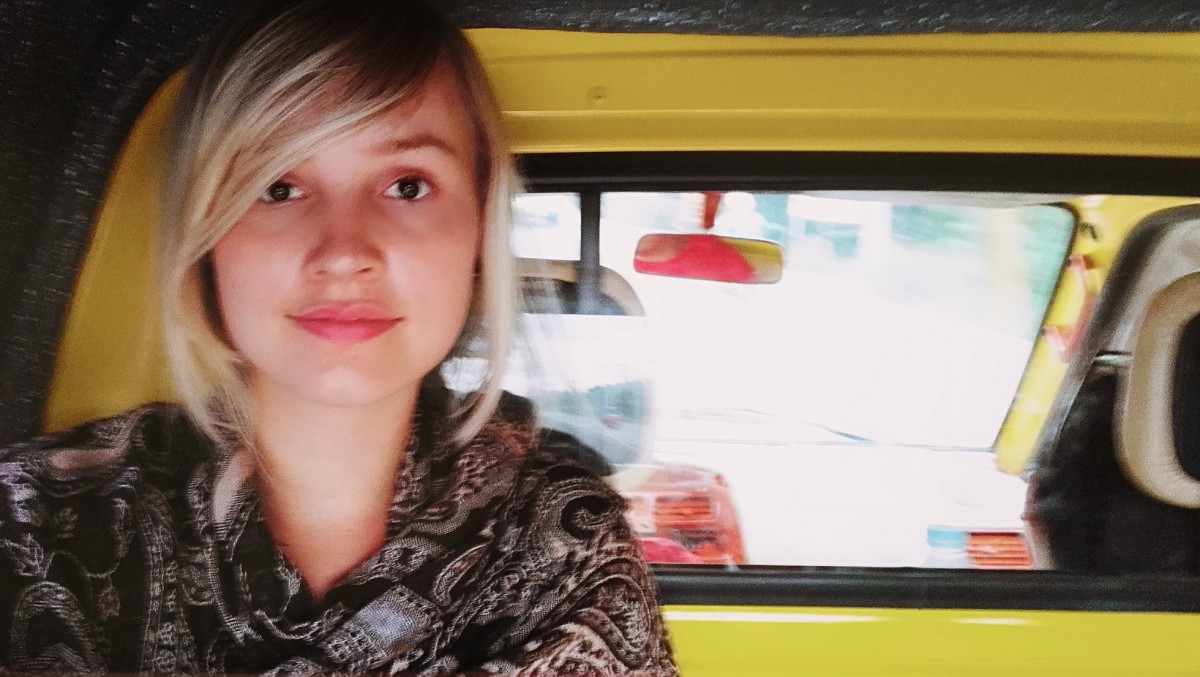
You can also visit Malagos Garden Resort and Orchid Farm, which is 12-hectare nature theme park in Davao City. Here, you will find various species of wildlife, such as indigenous birds and colorful butterflies, as well as various types flowering plants, fruit trees, orchids, palms, and many more.
But that’s not all. The resort is also where you will get to taste the award-winning Malagos chocolate, as well as a variety of cheeses and wine.

Taste the gastronomy that Davao has to offer.
The city has a lot of restaurants that would fit any traveler’s budget. If you want to try fine dining, there’s the White House Restaurant, Bondi & Burke, and Claude’s Le Cafe de Ville. But the best: Viking’s. All you can eat of Filipino and international food.
If you’re looking for some cheap eats, there’s Luz Kinilaw, Conching’s Native Chicken, and Penong’s Barbeque Seafood and Grill. Other restaurants like Jack’s Ridge, Marina Tuna, Blue Post, and The Vegan Dinosaur are popular as well.

Also, when in Davao, you must not forget about fruit tasting. The city is famous for its Durian, an exotic fruit that has a unique smell and taste. The Pomelos in Davao are quite delicious as well. You can easily get these from outdoor fruit stands.

Spend some down time at Seawall
After hours of touring and food tasting, spend some down time at Seawall, a small park that offers a nice view of the sea. It’s located along Times Beach and you’ll easily spot this place when you see a naked statue.
Go shopping and grab dinner at the night market
Since Davao is a becoming a more progressive city, you won’t have to worry about looking for a place to buy supplies or to simply grab a meal. But for dinner skip Gaisano Mall of Davao or Abreeza Mall and instead head to Davao’s night market and enjoy a variety of food including BBQ, shakes and fruits. The best part? Tons of clothing stands for a low-budget adventure.


End the day with a mangosteen shot in Downtown
There are plenty of bars and restaurants to spend a fun night in Davao. Huckleberry Southern Kitchen & Bar is a cozy and warm place that has great beers as well as exotic liquor like mangosteen shots. Cheers!

Ein EPIC Wochenende in Jordanien
Das war der Plan: Nach Israel fliegen, am nächsten morgen die Grenze nach Jordanien überqueren, Petra bewundern und wieder zurück fahren.
Das ist passiert: Ich bin nach Israel geflogen, hab Eitan getroffen, meine Kreditkarte verloren, sie wiedergefunden, bin im Slingshot fast ohnmächtig geworden, zu viel geraucht & selbst gebrautes Bier getrunken. Cheers.
3h später aufgewacht, mit gemischten Gefühlen zur Grenze gefahren, nach Jordanien gelaufen und in der schnellsten Taxifahrt meines Lebens um mein Leben gebangt.
Da sind wir: In Petra
Omar hat mich aufgegabelt, mich fürn 10er zu dieeesem Platz die Felsen hochgepusht und wieder runter getragen. Dann gabs da noch Mehdi und Michael Jackson, die mir 3h gefolgt sind und mich vollgequatscht haben.
Dann hab ich ne Gruppentour gebucht. Da traf ich Moussa, der mich an Hamza vermittelt hat und mit dem ich 2h durch die Wildnis gewandert bin und erfuhr, dass die Gruppe aus einer Person besteht. Nämlich aus mir. Hamza war echt nett, aber ja, es war etwas unheimlich mit ihm alleine. In seiner Höhle. Ohne Empfang. Hamza konnte echt gutes Frühstück machen. Danke dafür.


Aber der Ritt mit Tennessy Whiskey war echt nichts für schwache Nerven
Das wars mit Petra, auf nach Aqaba. Da traf ich Tarek und Hassan. 2 crazy Typen. Nächster Morgen, zurück nach Israel. Dem Security war das nicht ganz geheuer mit meiner Erzählung, also wurde ich 2h befragt und auseinandergenommen.
Also lohnt sich der Stress für ein Wochenende nach Israel und Jordanien?
Ich würd mal sagen ja.
Istanbul in 10+1 Pictures
Istanbul is more than just a crowded metropolitan with a vibrant culture. You have to be there to feel and inhale the magic of Istanbul and its people. There is no way to escape its beauty and mesmerizing charm. During my last 10 trips to Istanbul I’ve chosen the best pictures and hope to influence you to put Istanbul on top of your list!

1. The Ortaköy Mosque near the Bosphorus
It’s not only a great spot for taking nice pictures but also for eating delicious kumpir and waffles near the Bosphorus.
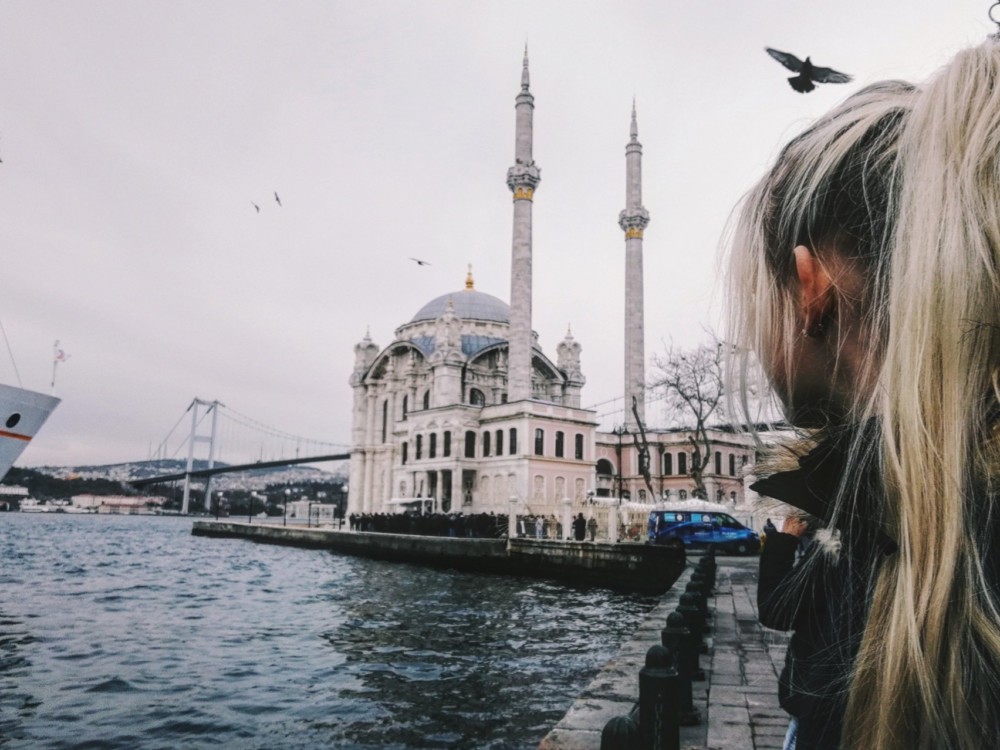
2. Istanbul's sunset skyline
There is nothing better than having a walk near the sea and watch the sun eat the skyline.
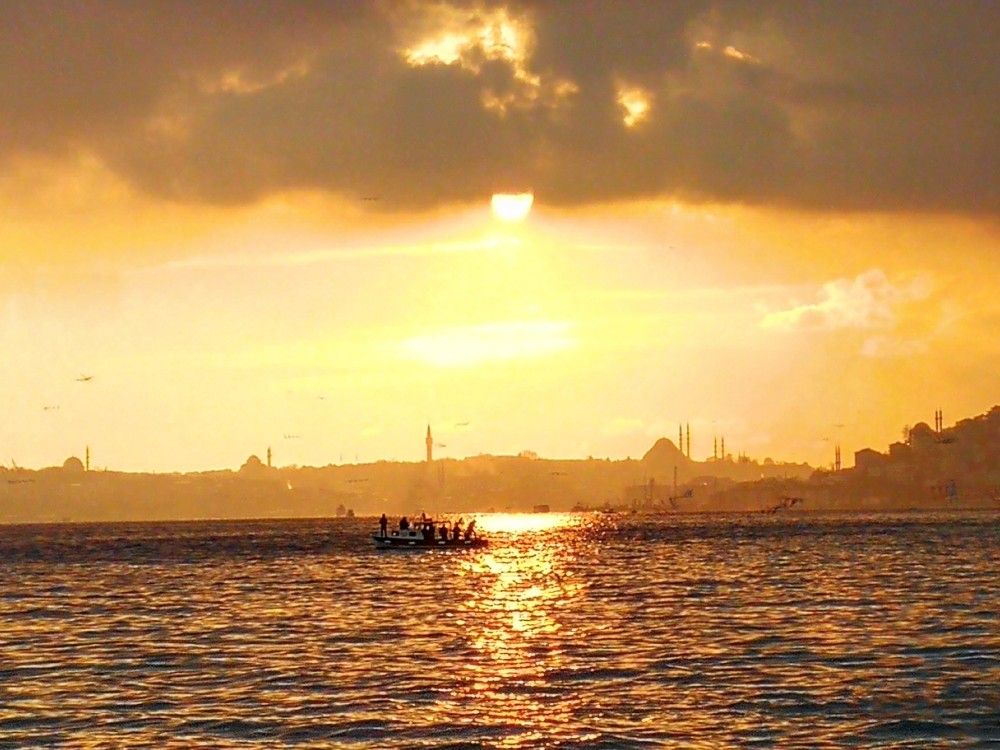
3. Traditional Turkish Cafés

No matter how busy a day is there is always space for a cay and a round of backgammon.
4. Looking at the Asian Side
Istanbul is the only place that connects Asia with Europe and still it feels like the same place.

5. Sülemaniye Mosque in Eminönü
There are a million mosques in Istanbul but all have their own magic.

6. Turkish Street Food

Kebap, döner, köfte, simit, balik ekmek and much much more to eat on the streets of Istanbul.
7. The Cats of Istanbul
Turks love their cats and care about them more than anywhere else in this world.
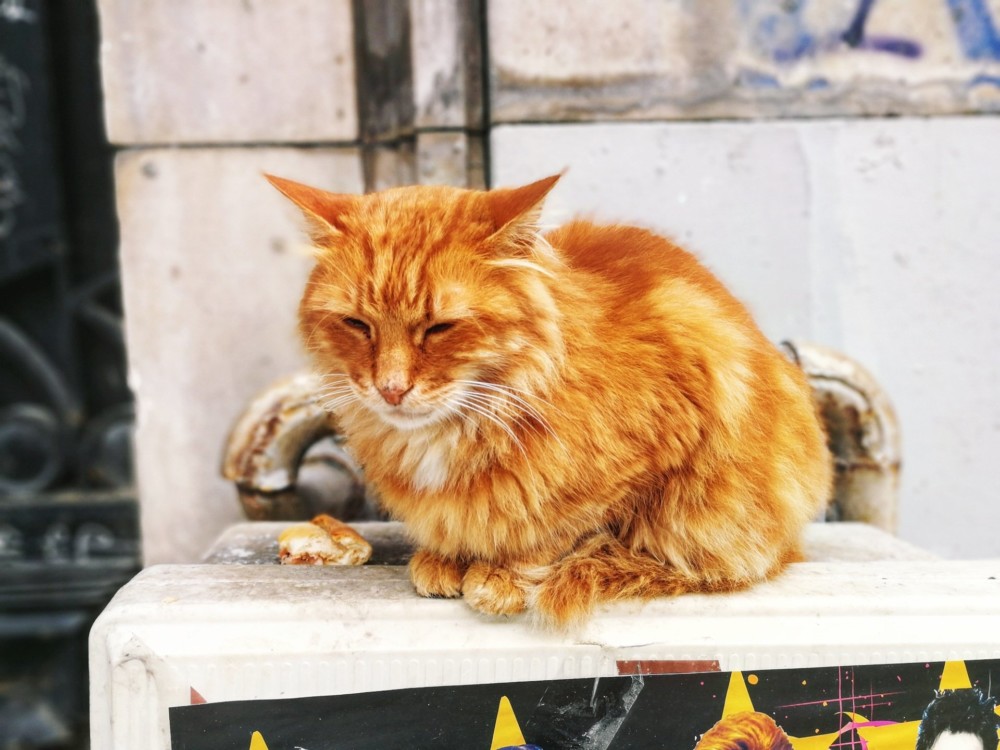
8. Architecture in Balat
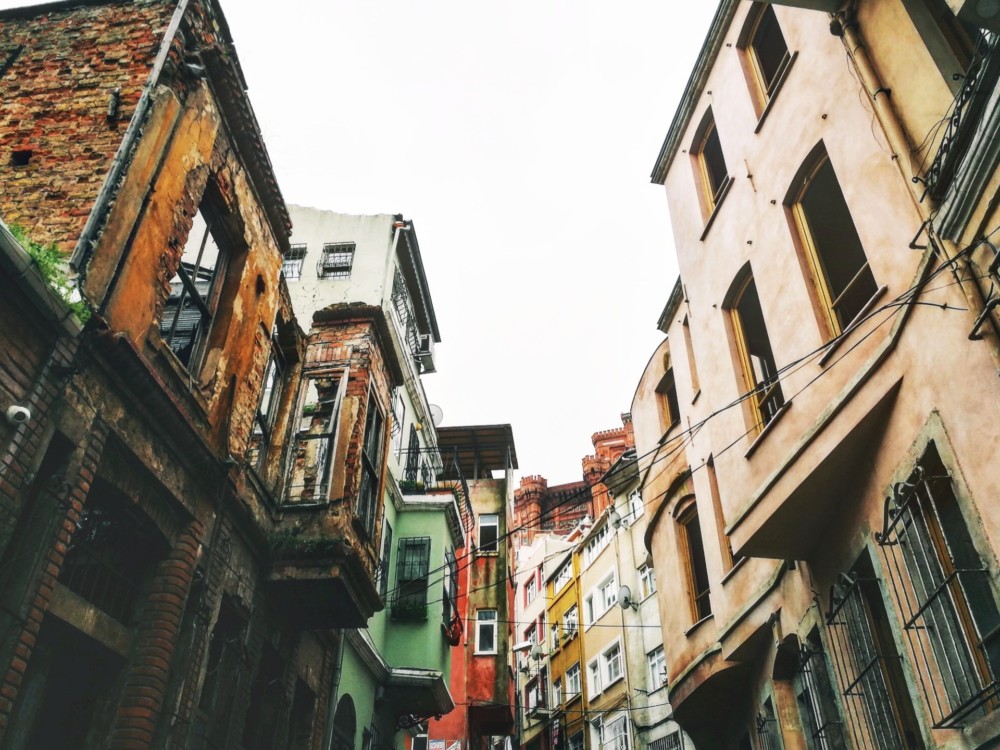
9. Istanbul's Galata Tower in Beyoglu
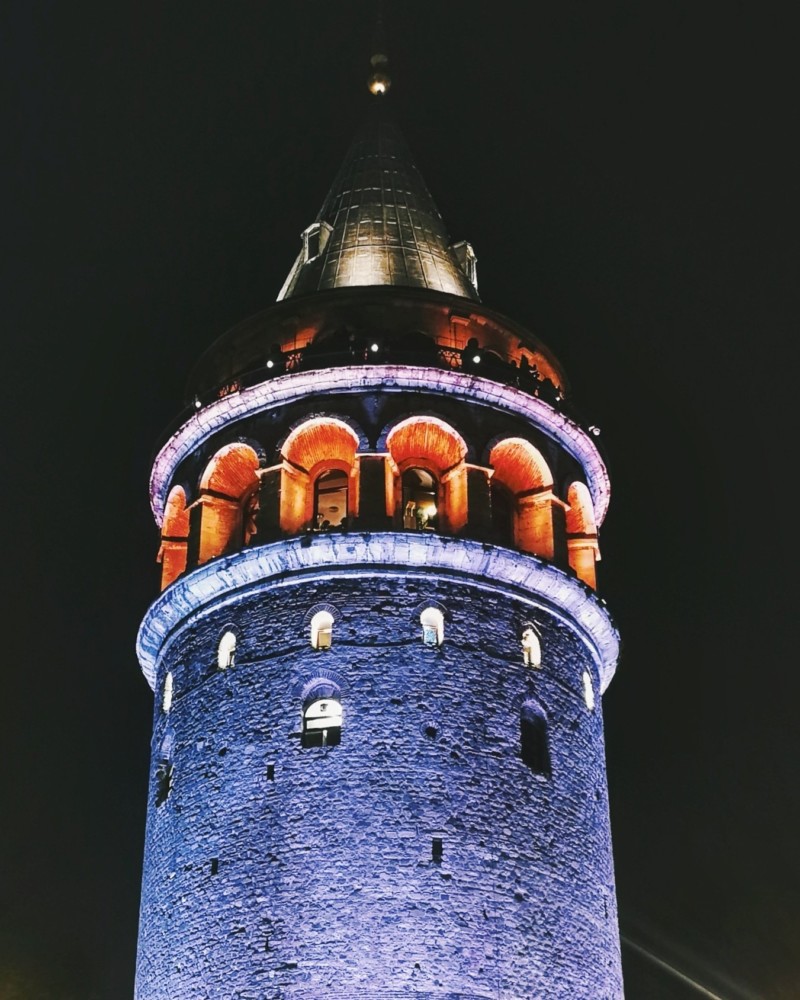
Surely the most famous sign of Istanbul and still can’t take my eyes off it whenever I am there!
10. Strolling in Shops and Bazars
For those who love bargaining and looking for the best deals in town.

+1 Eat as if there were no tomorrow
Turks have a really good taste in food and no matter what you are looking for – Istanbul will serve it for you with a spoon of yoghurt and a cup of cay.





